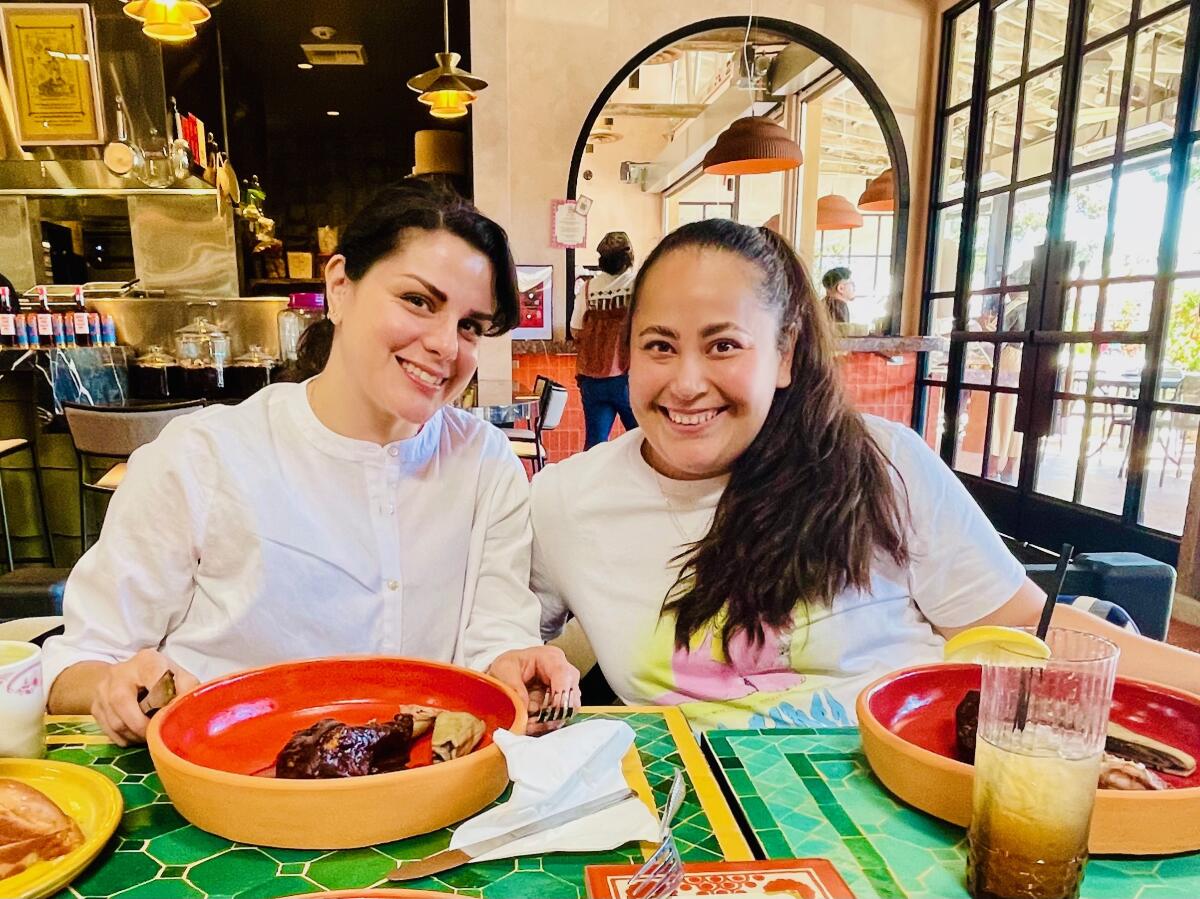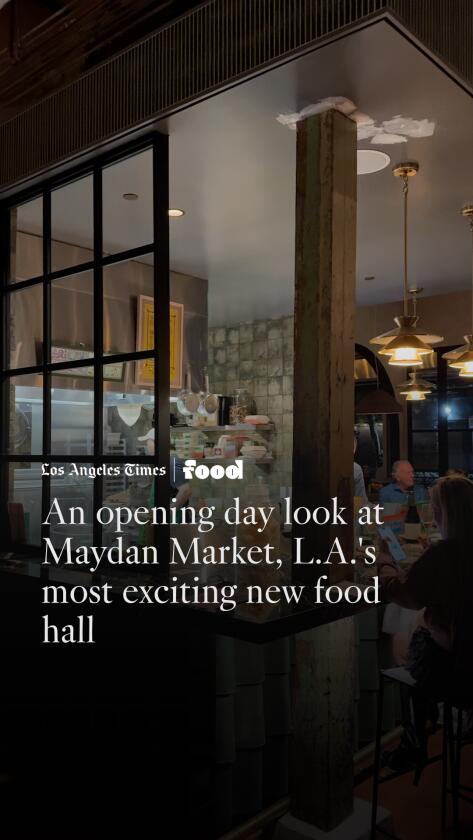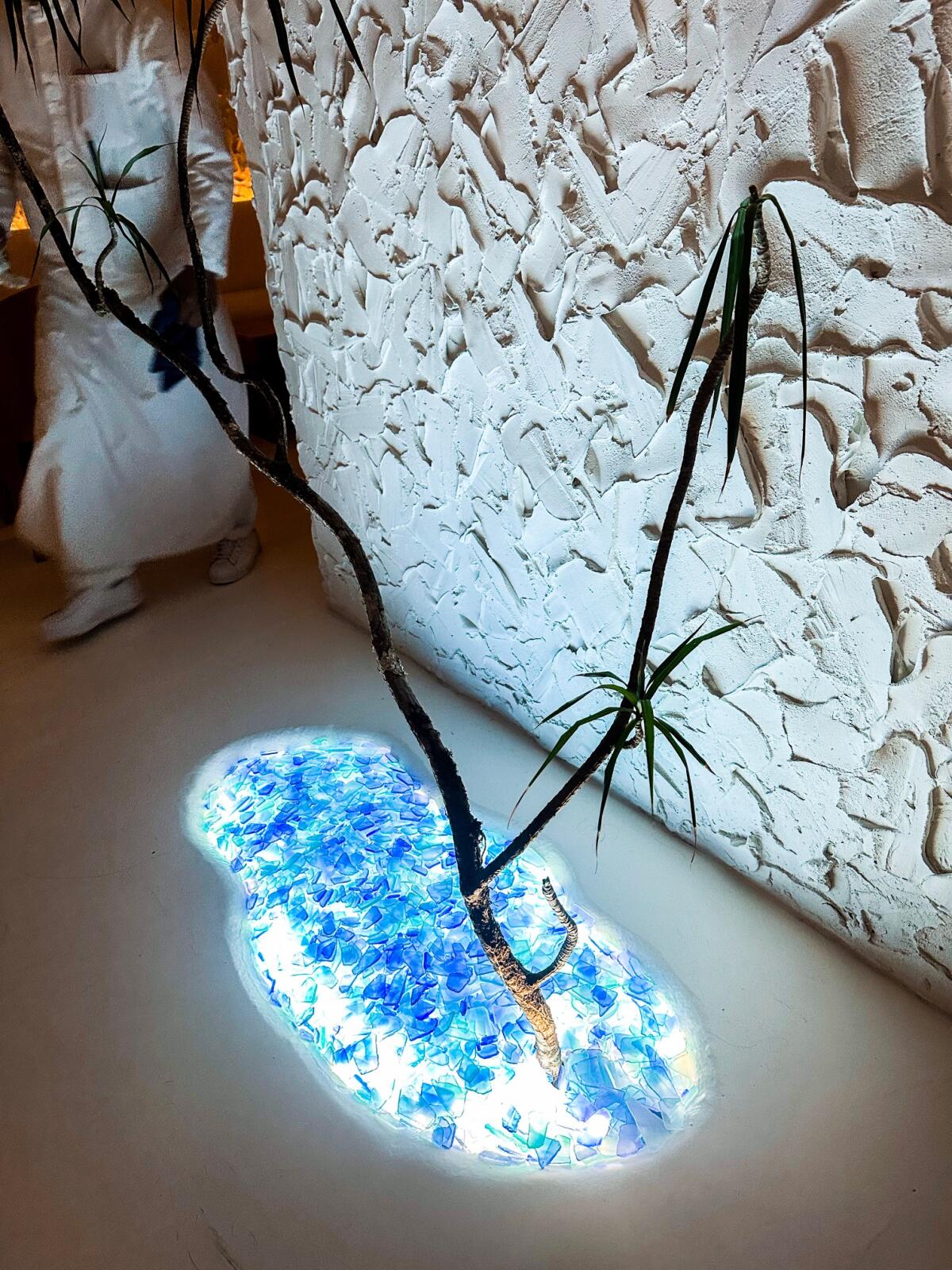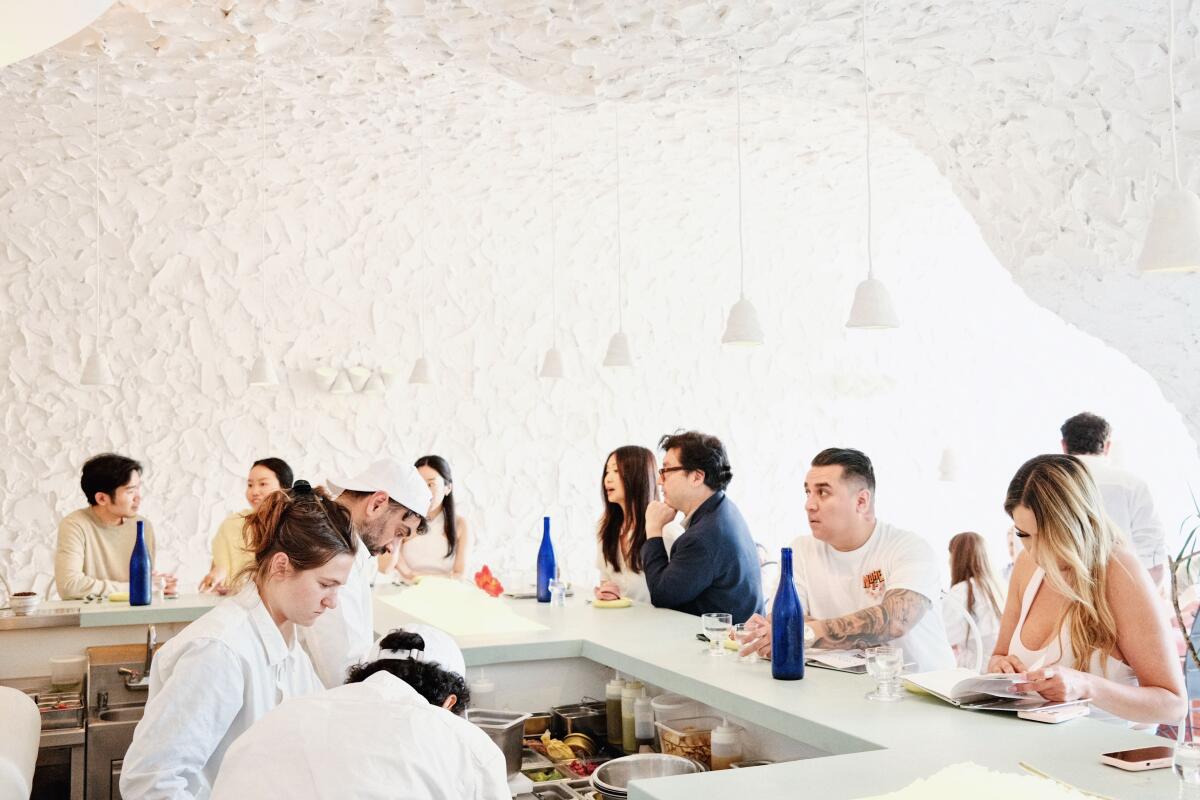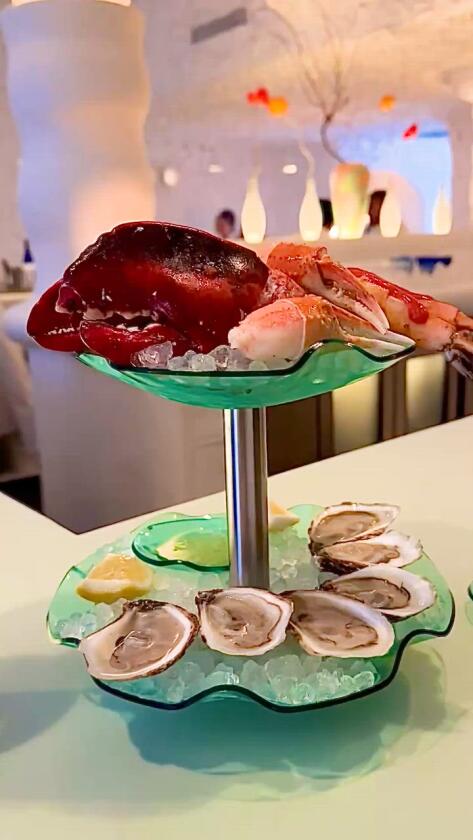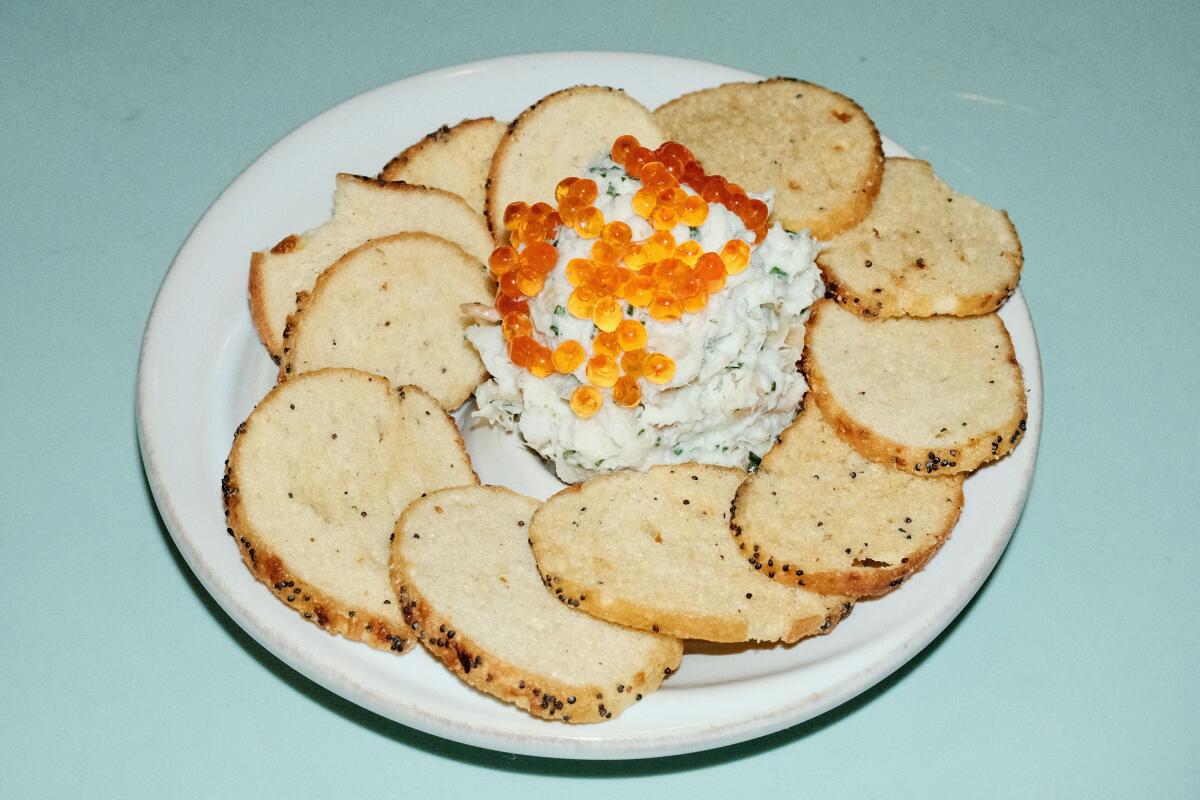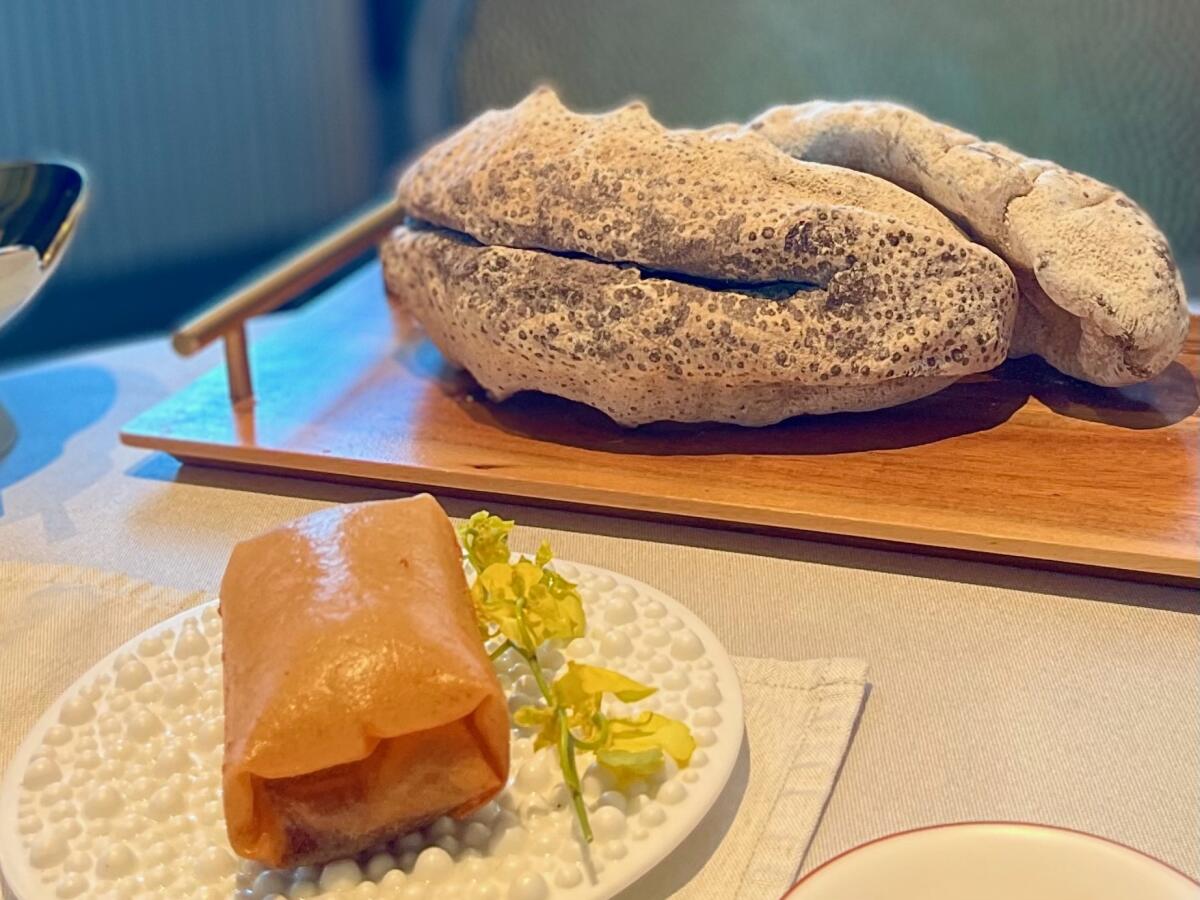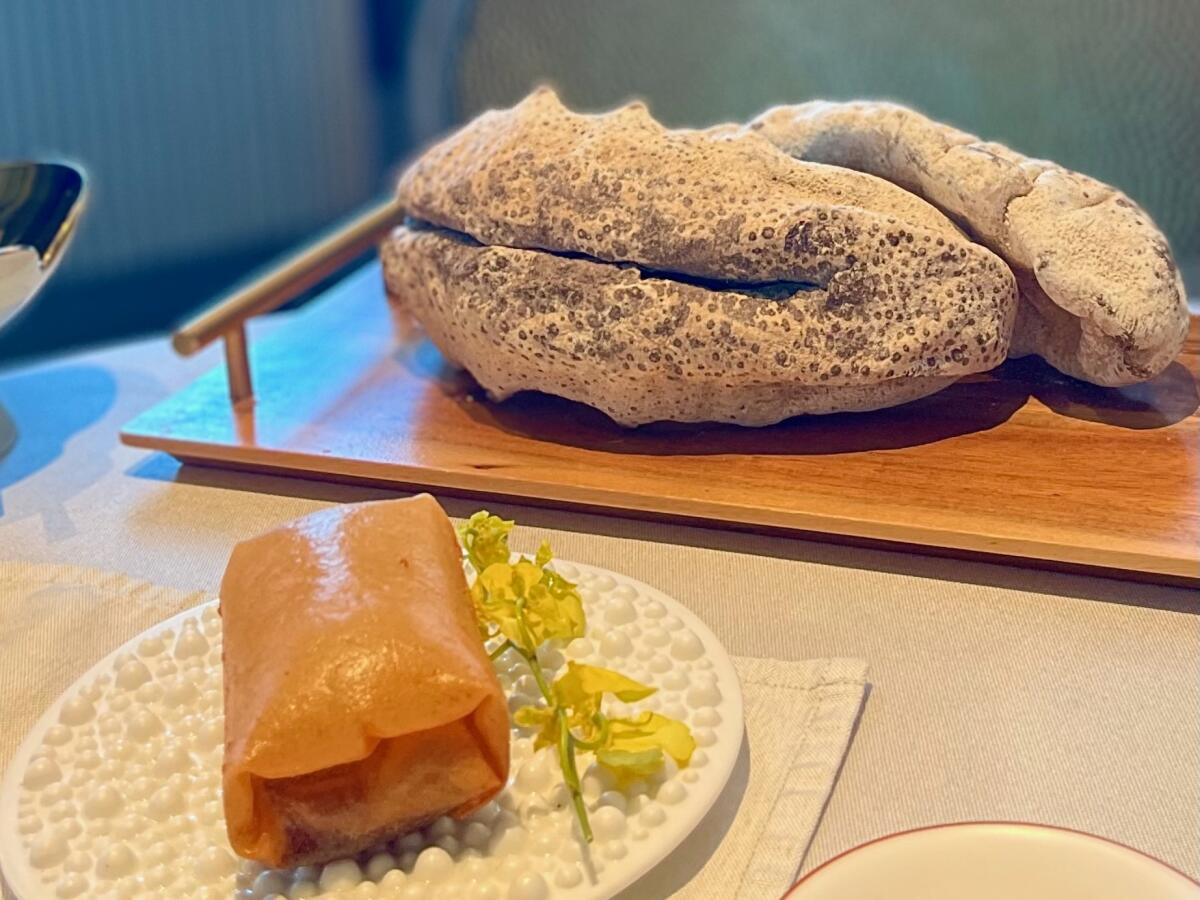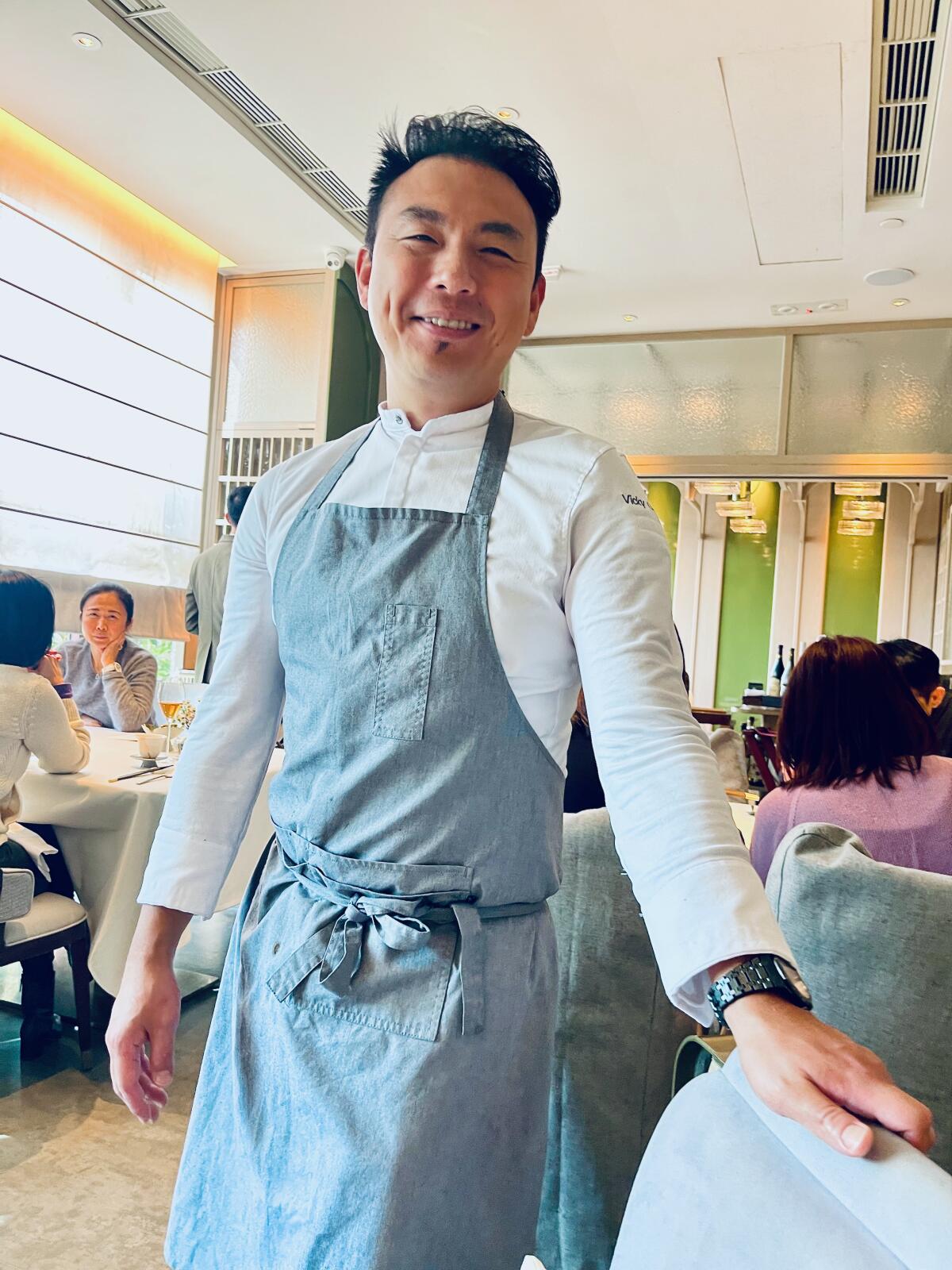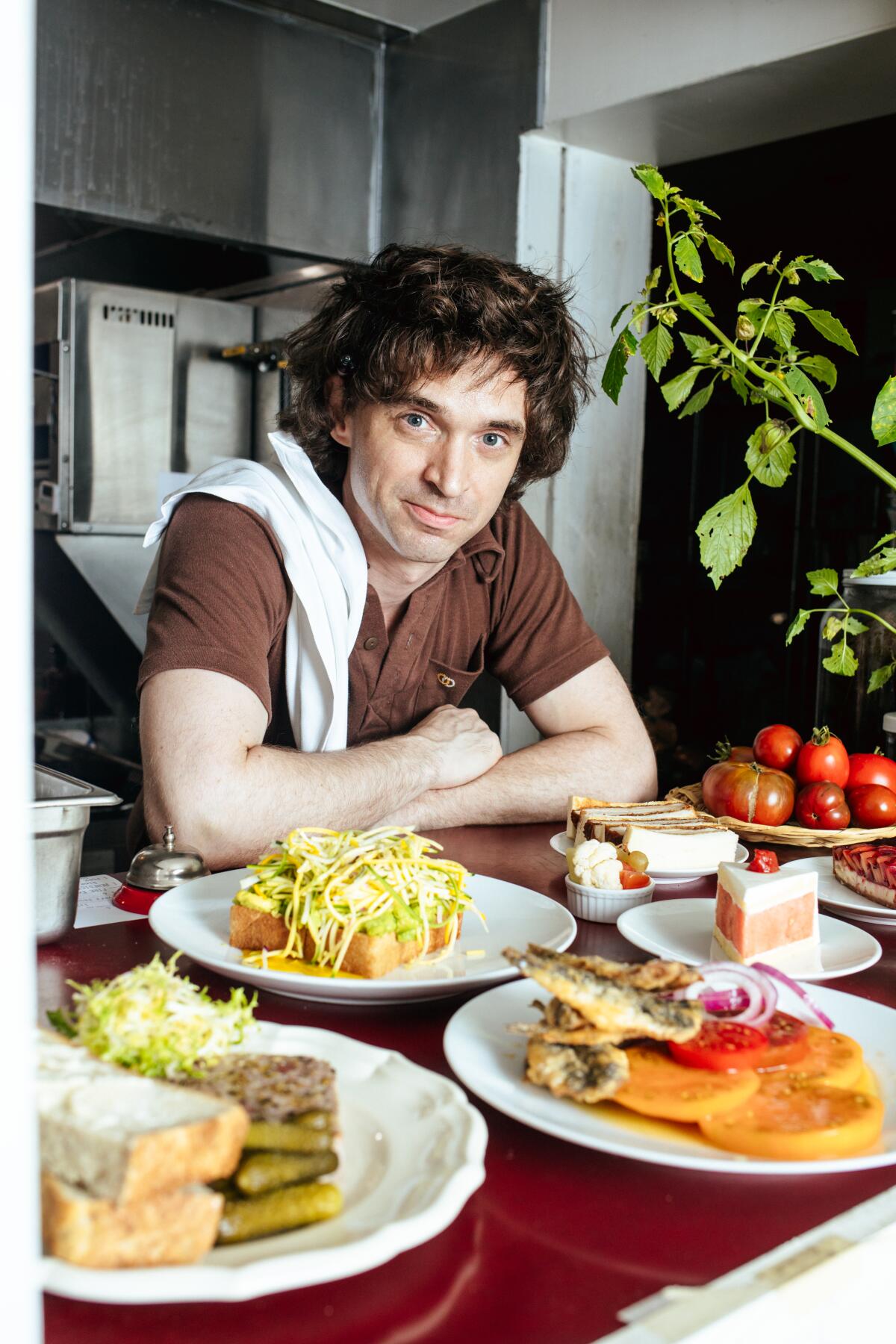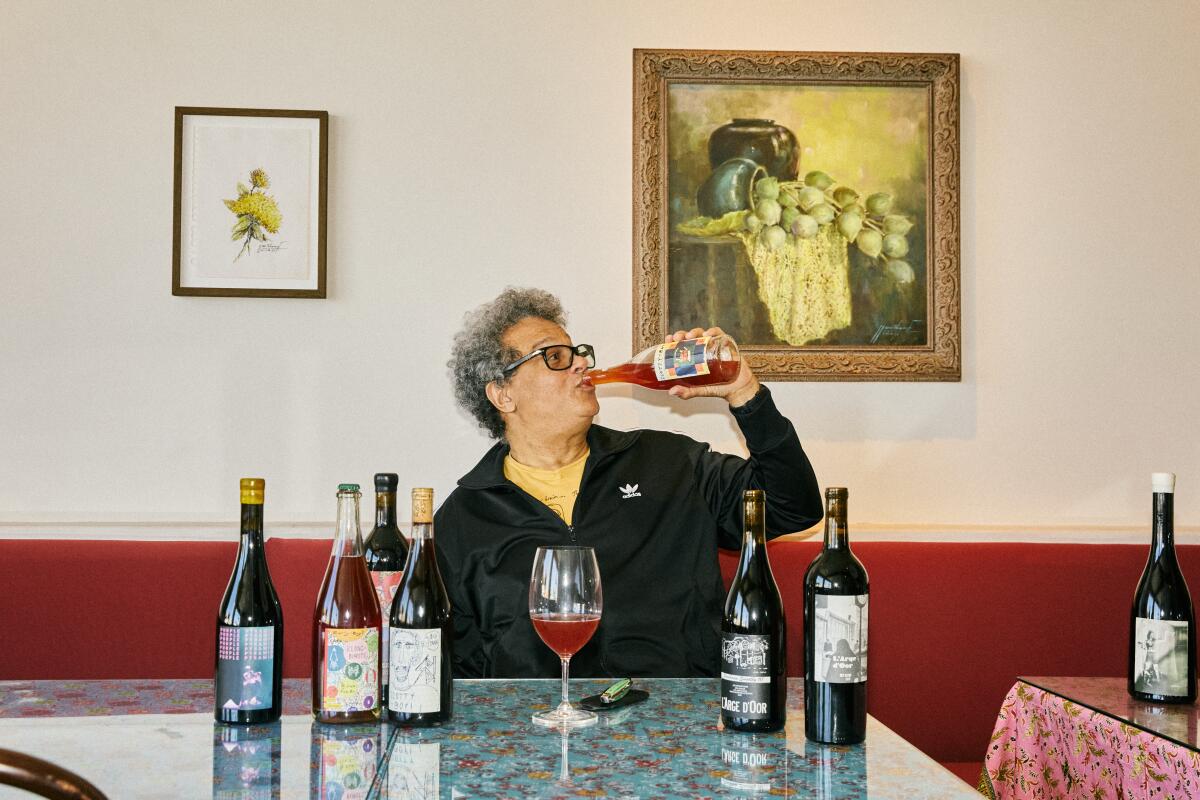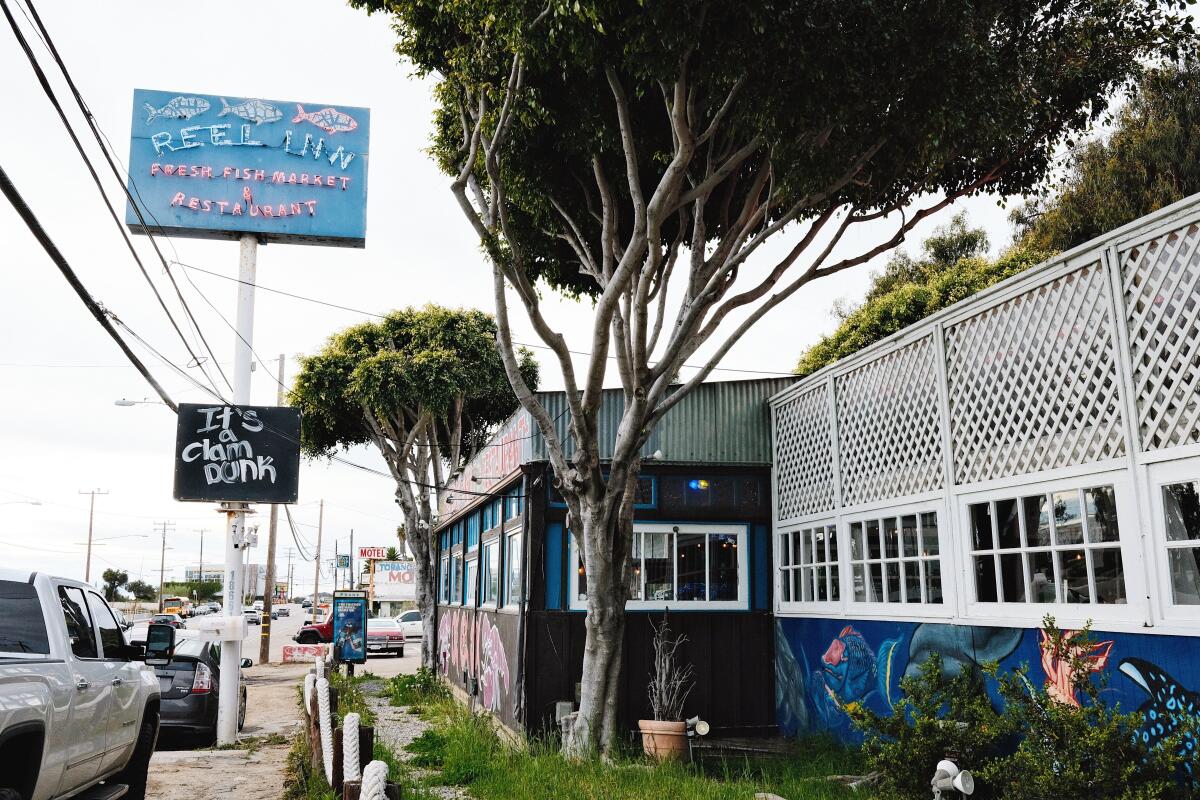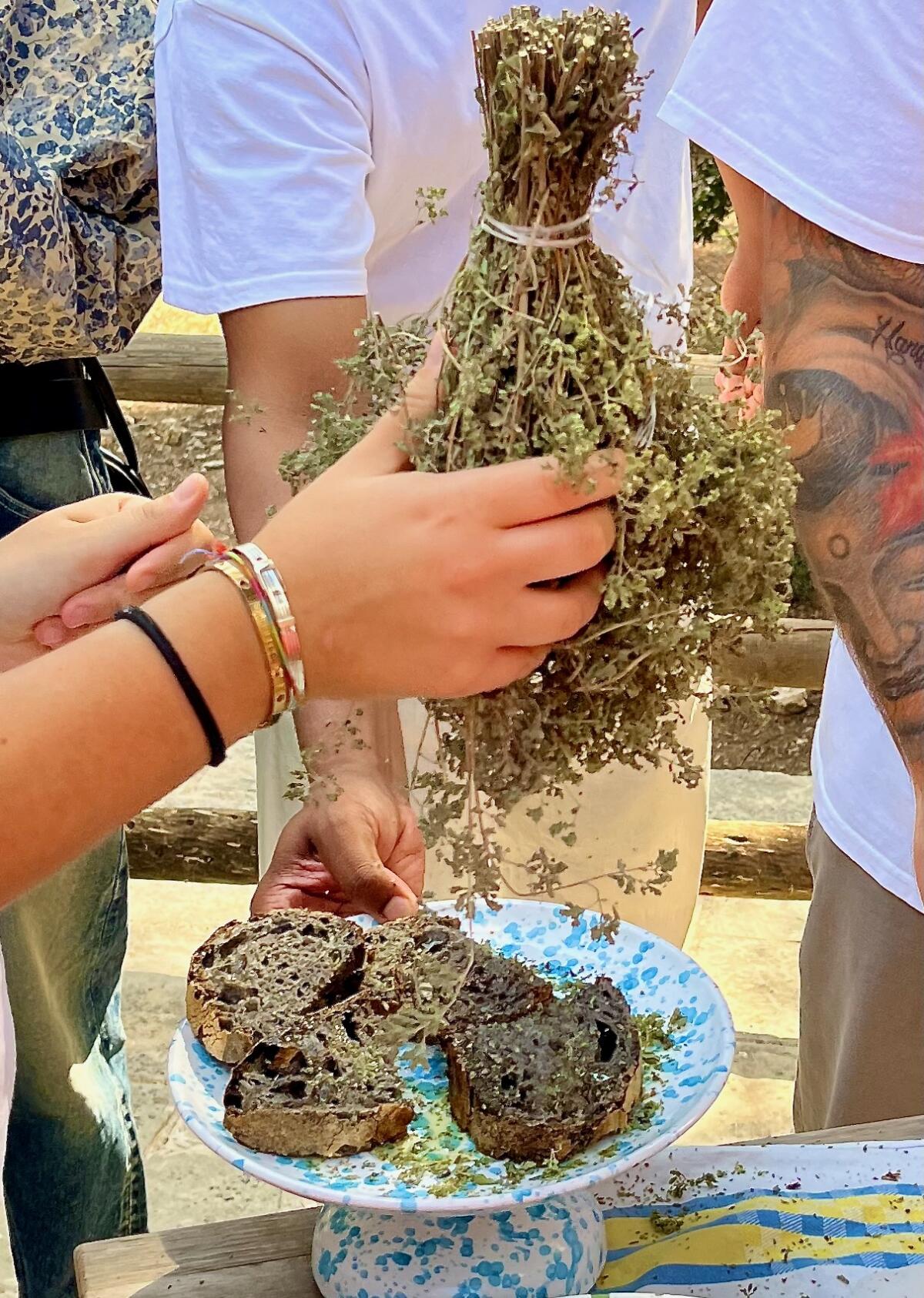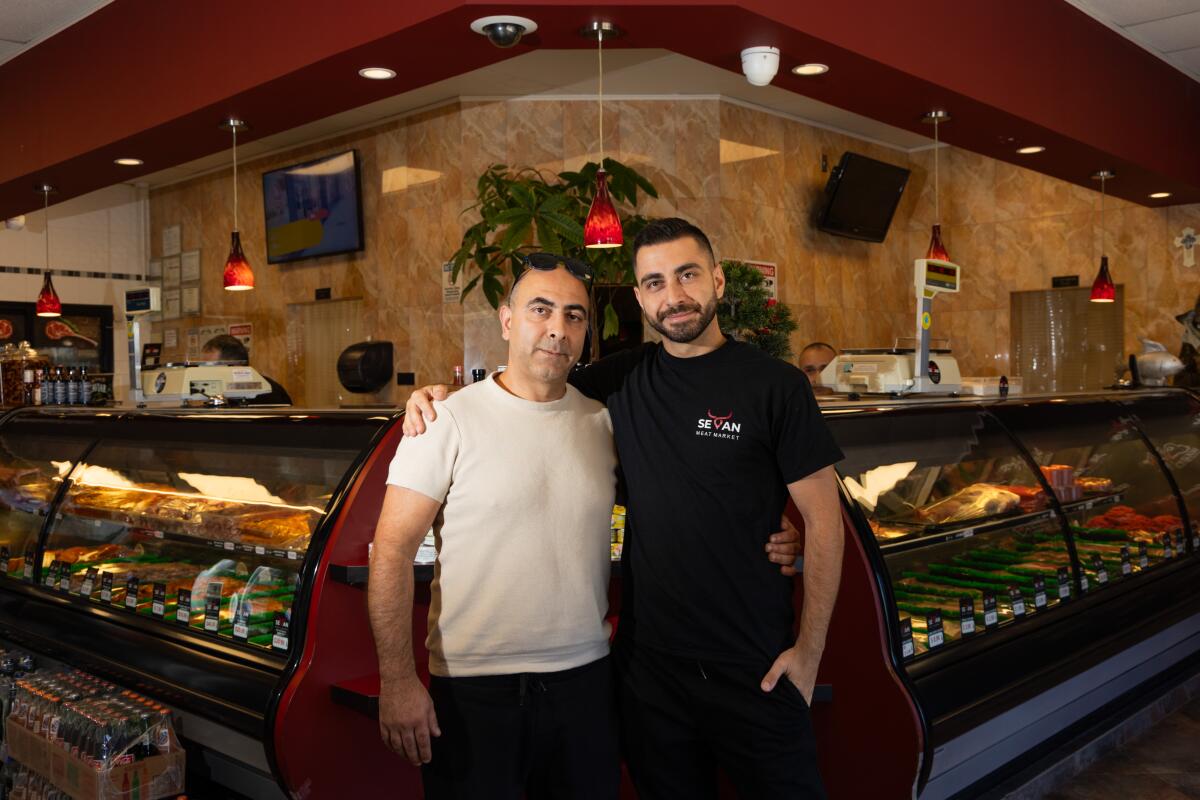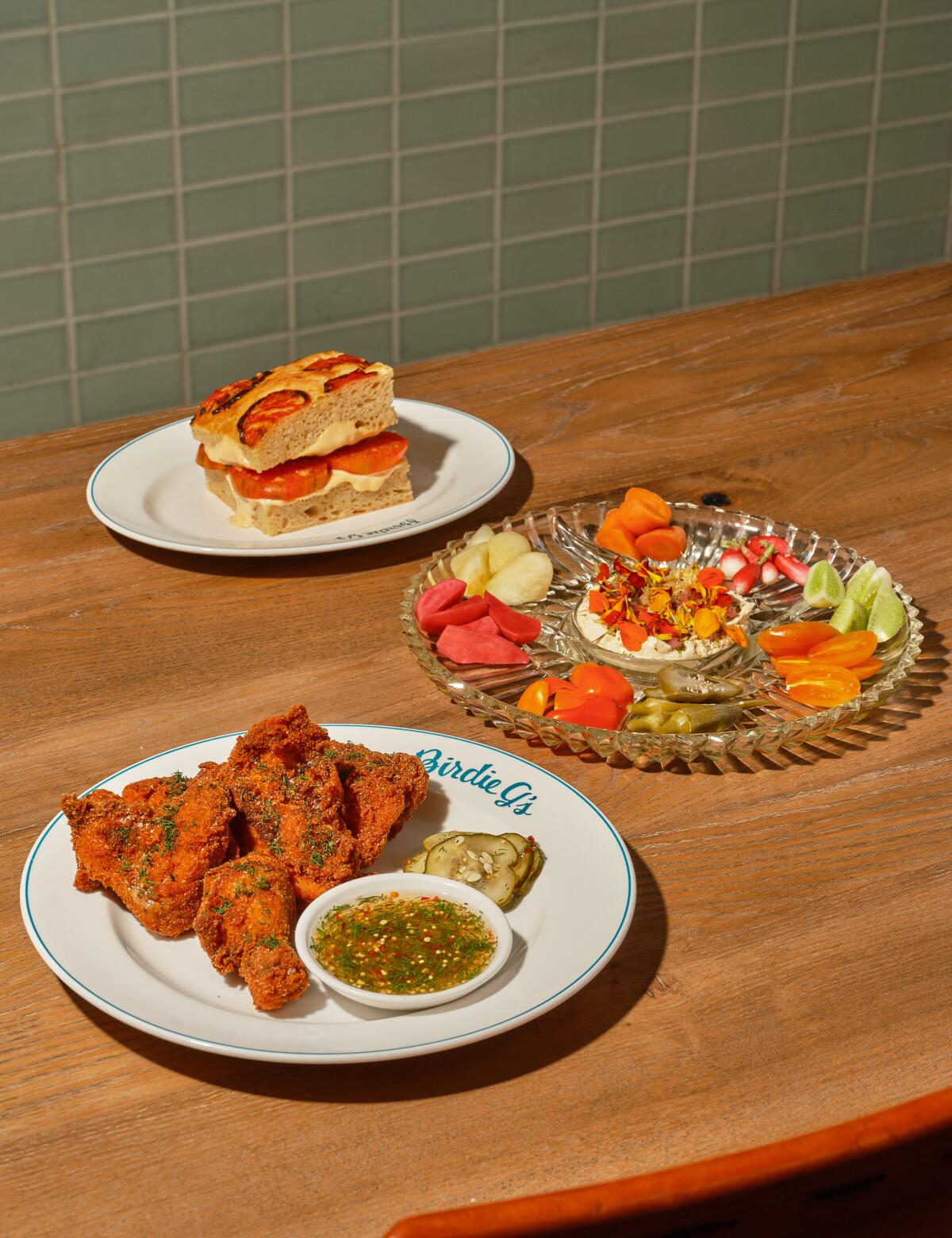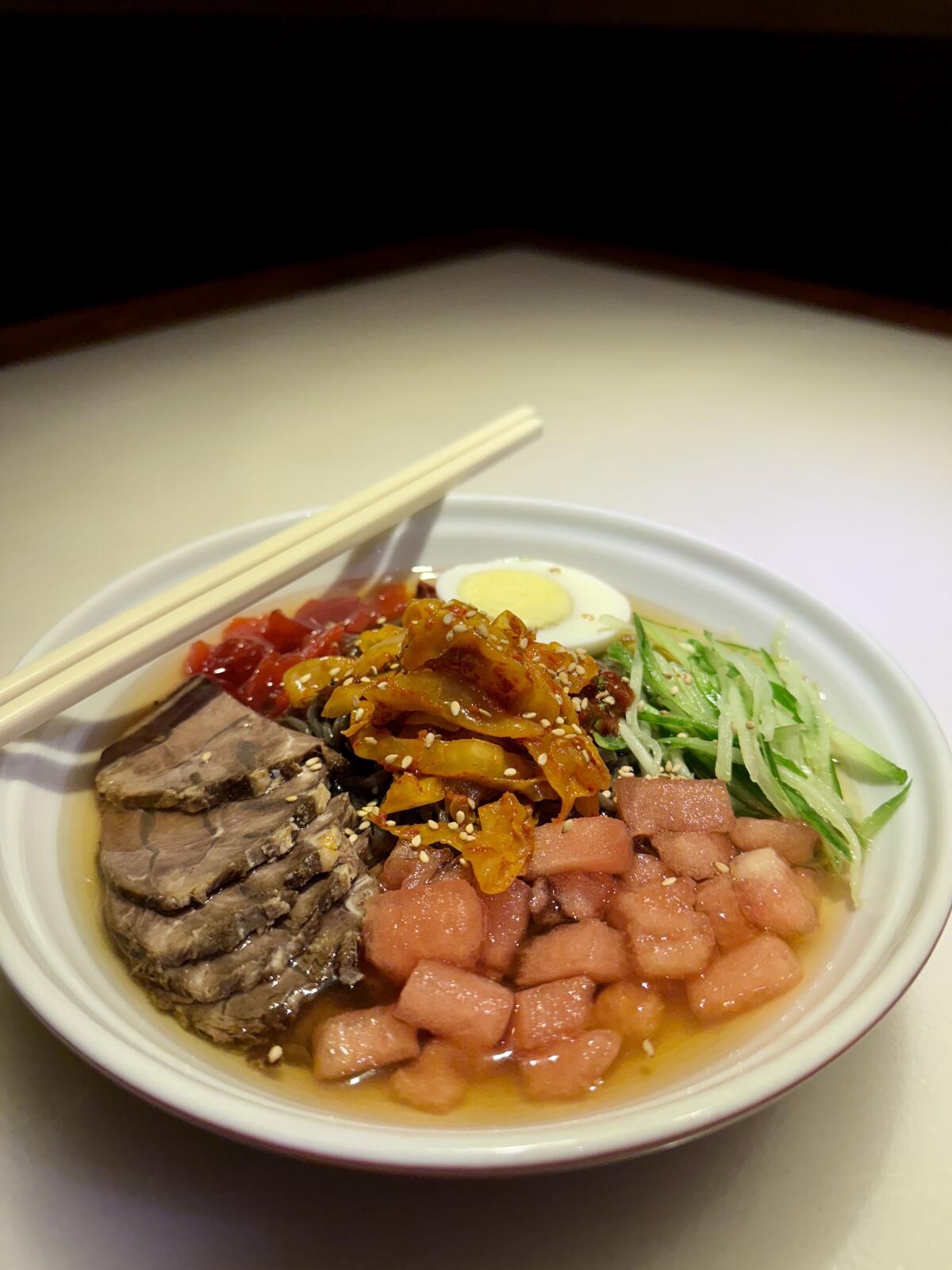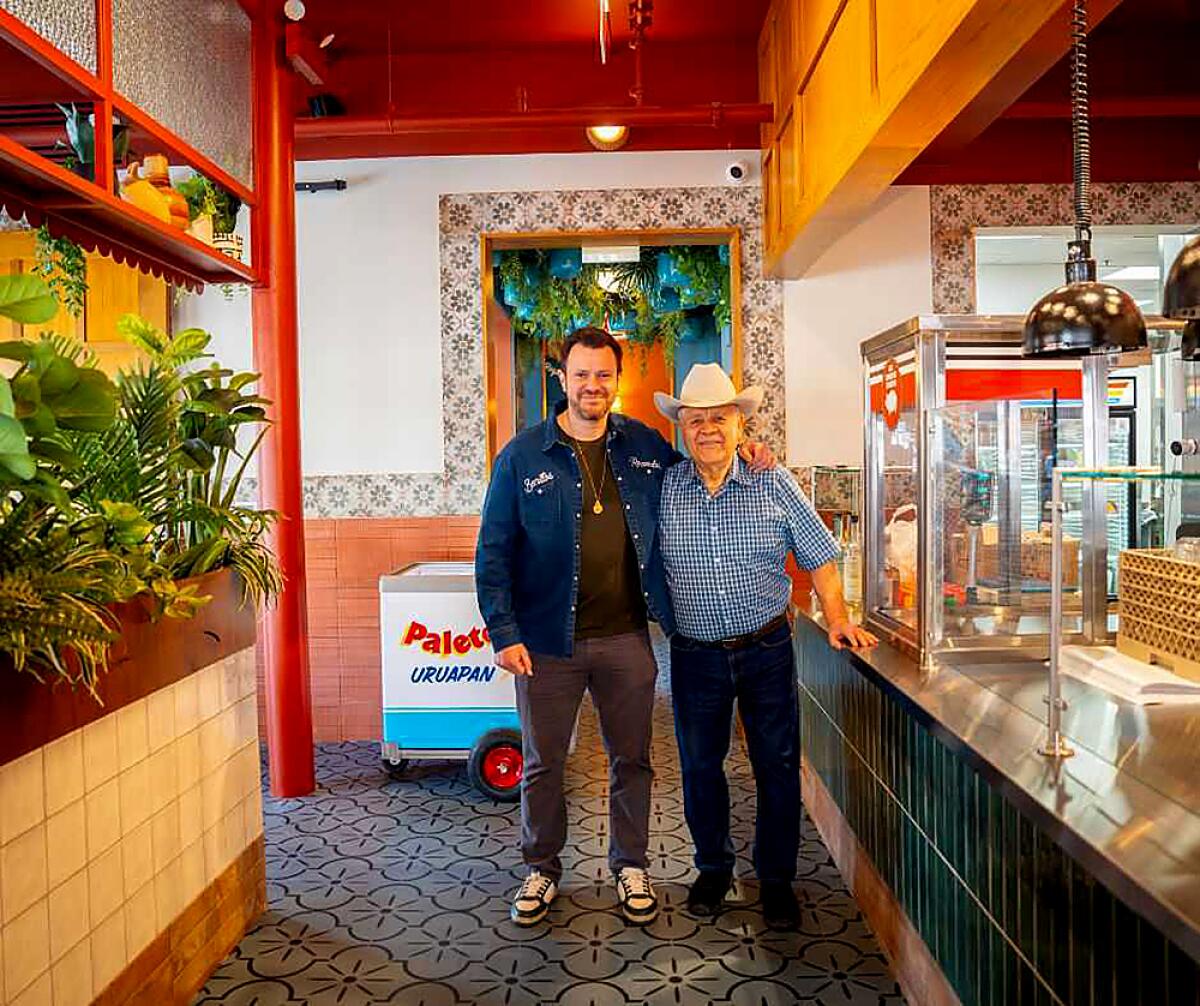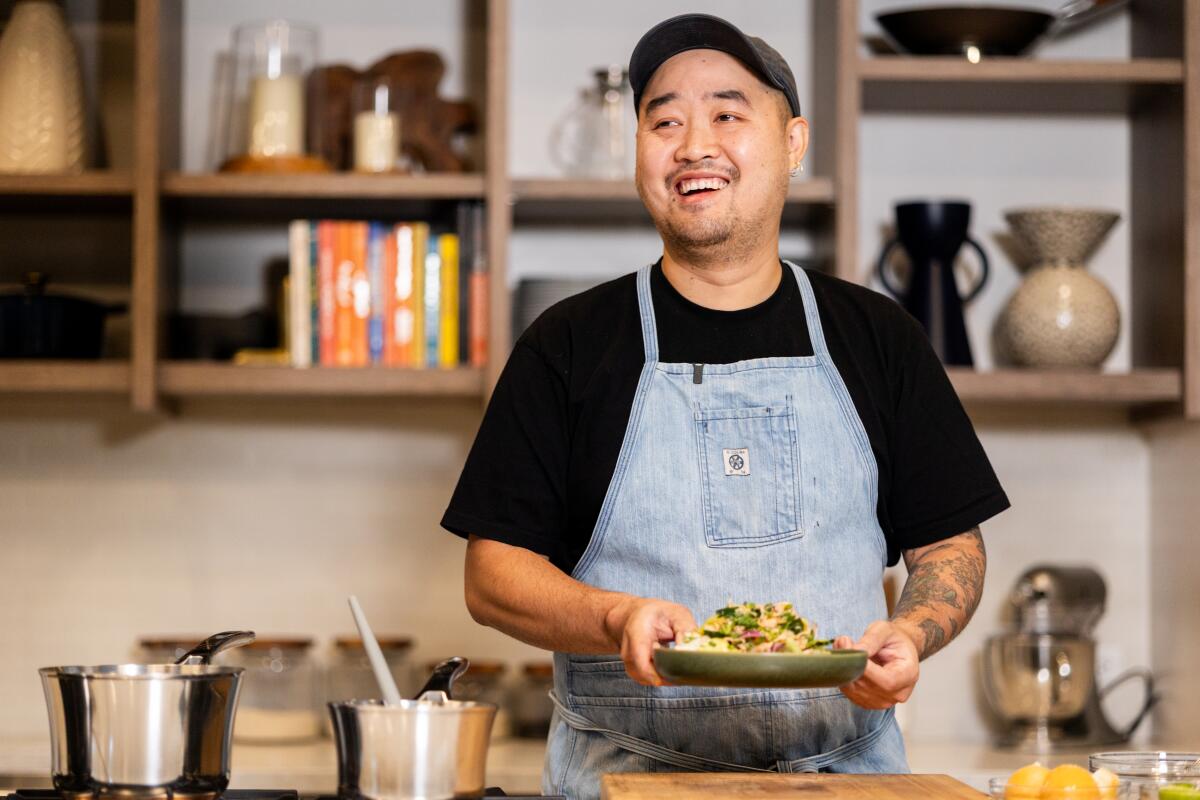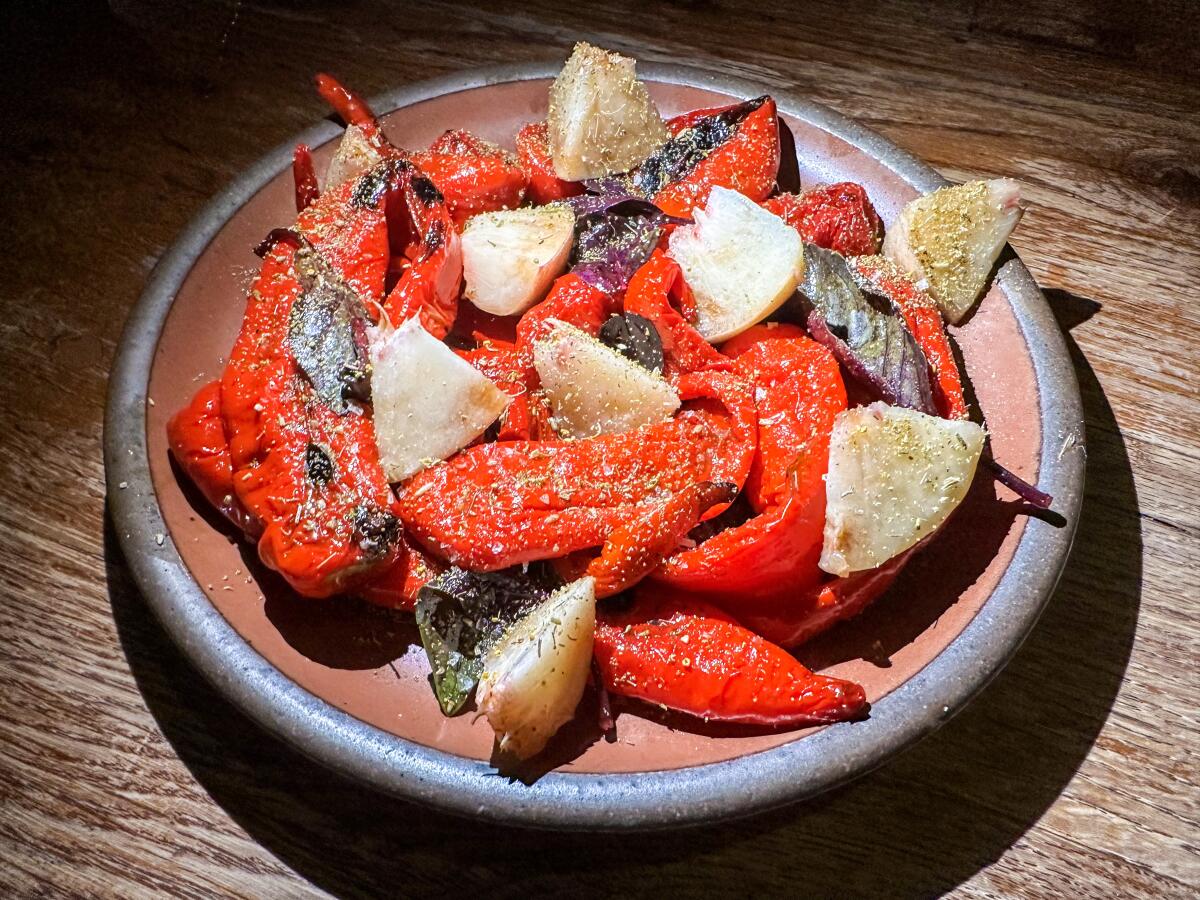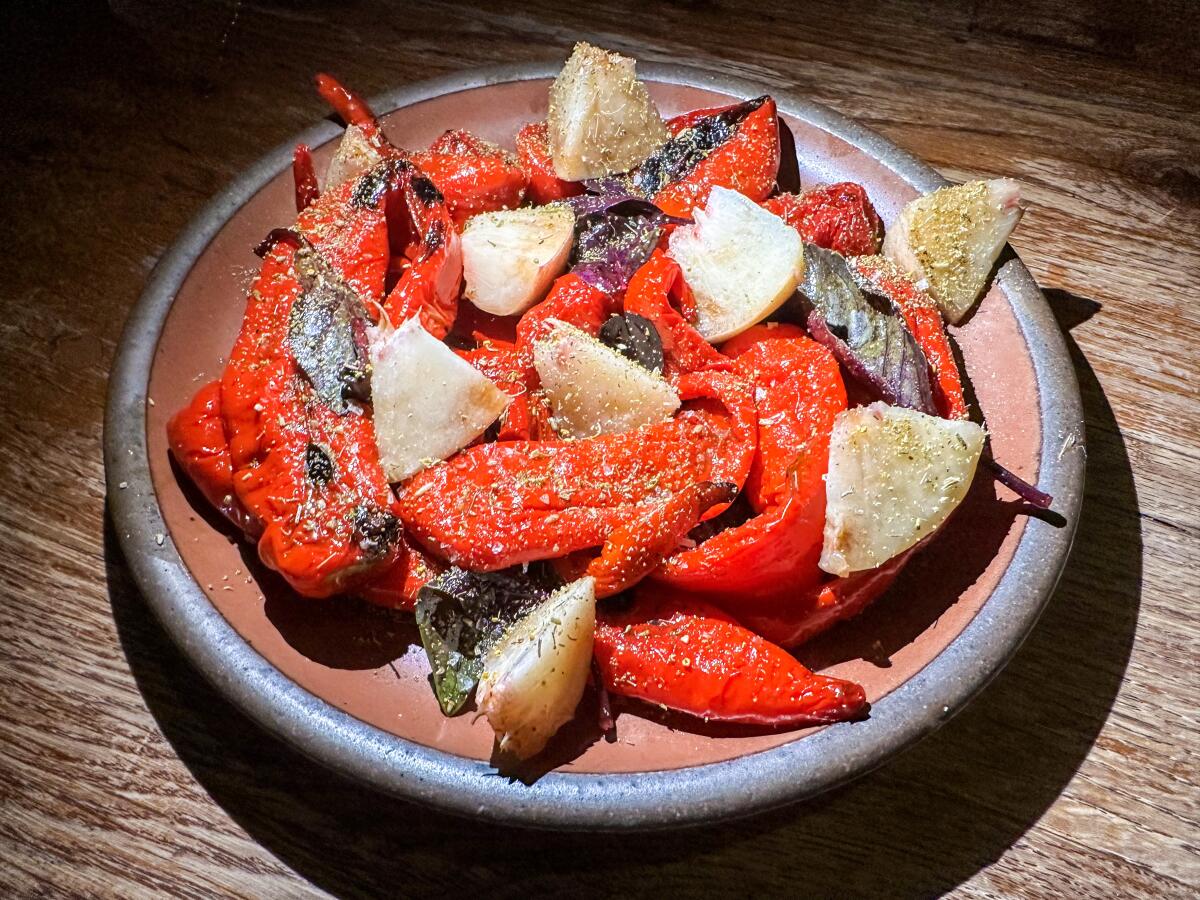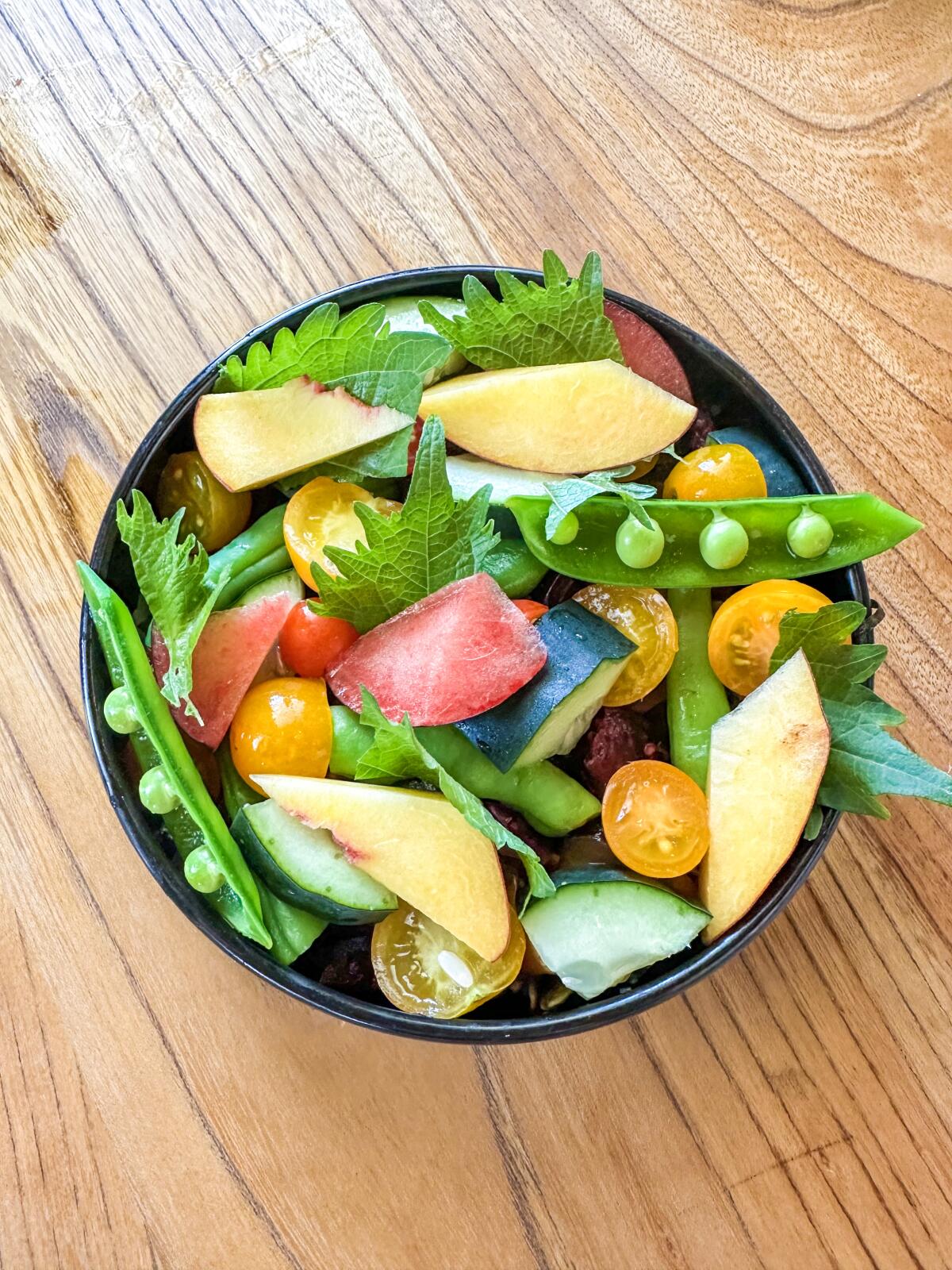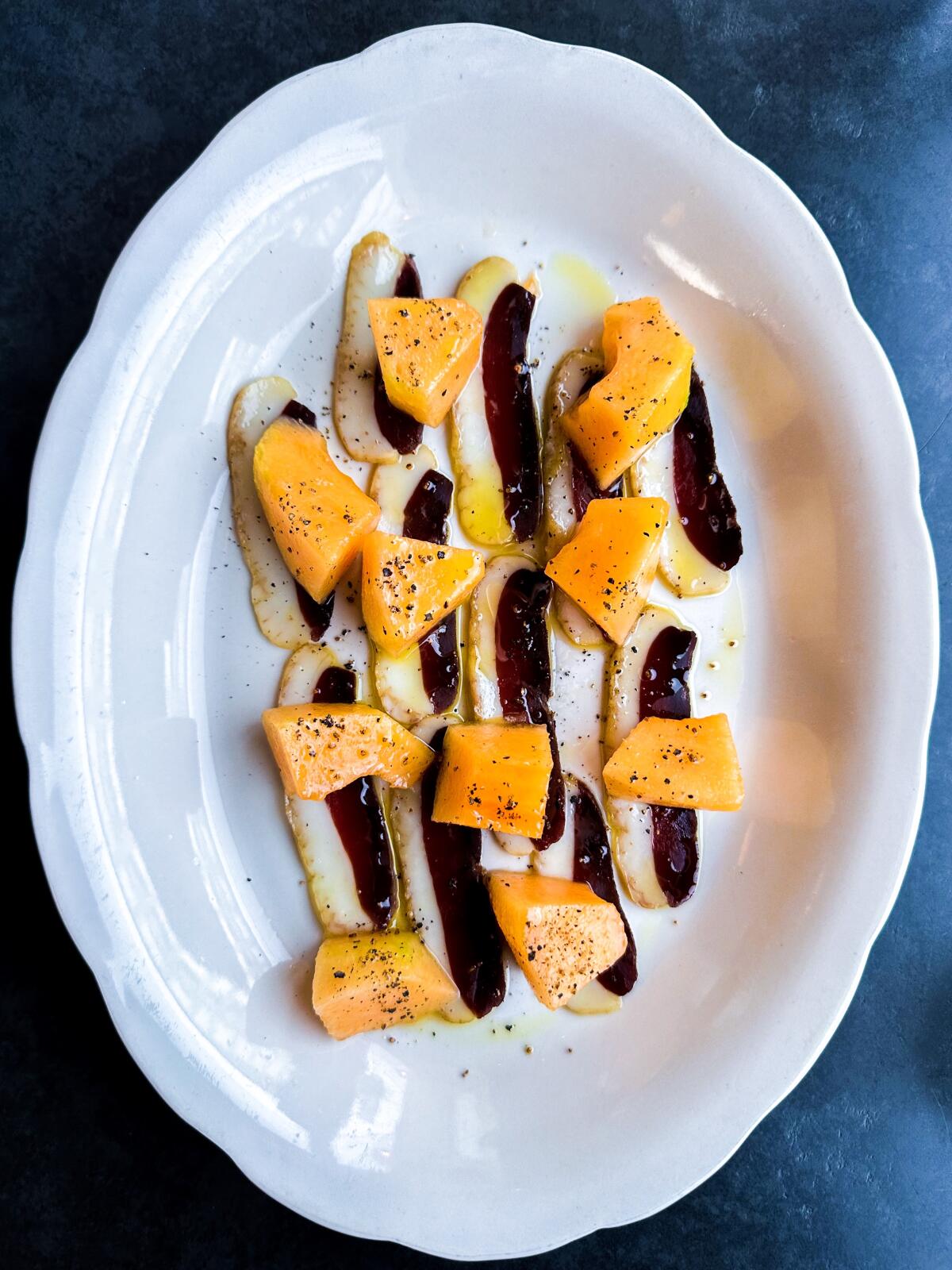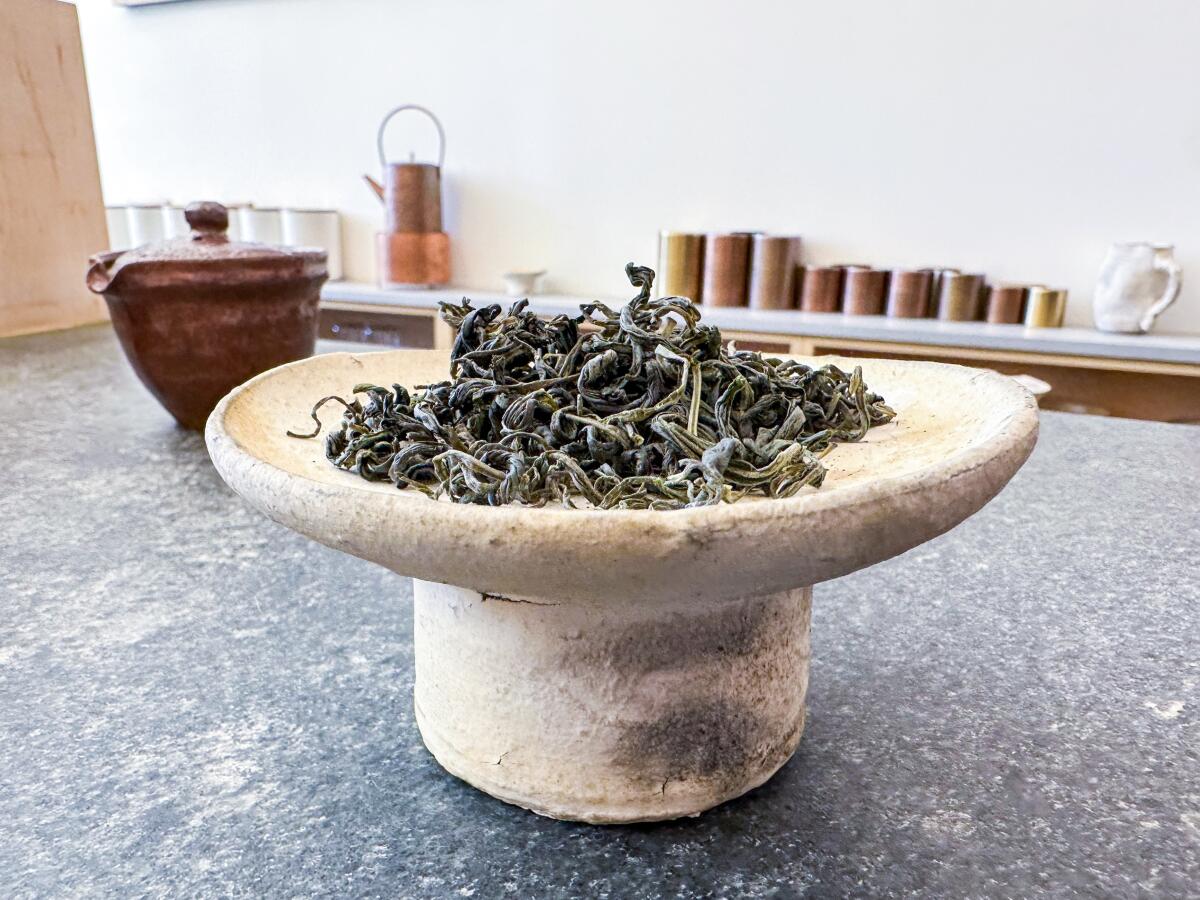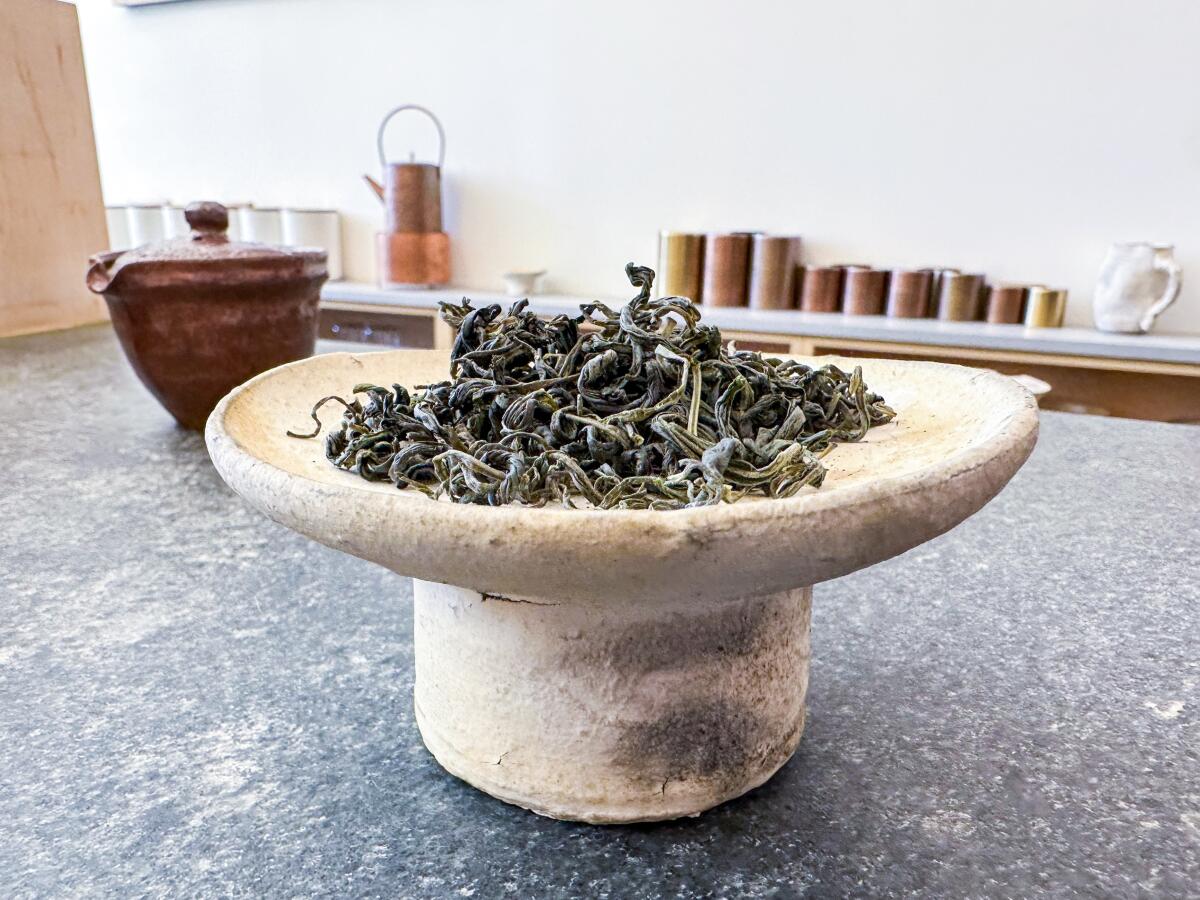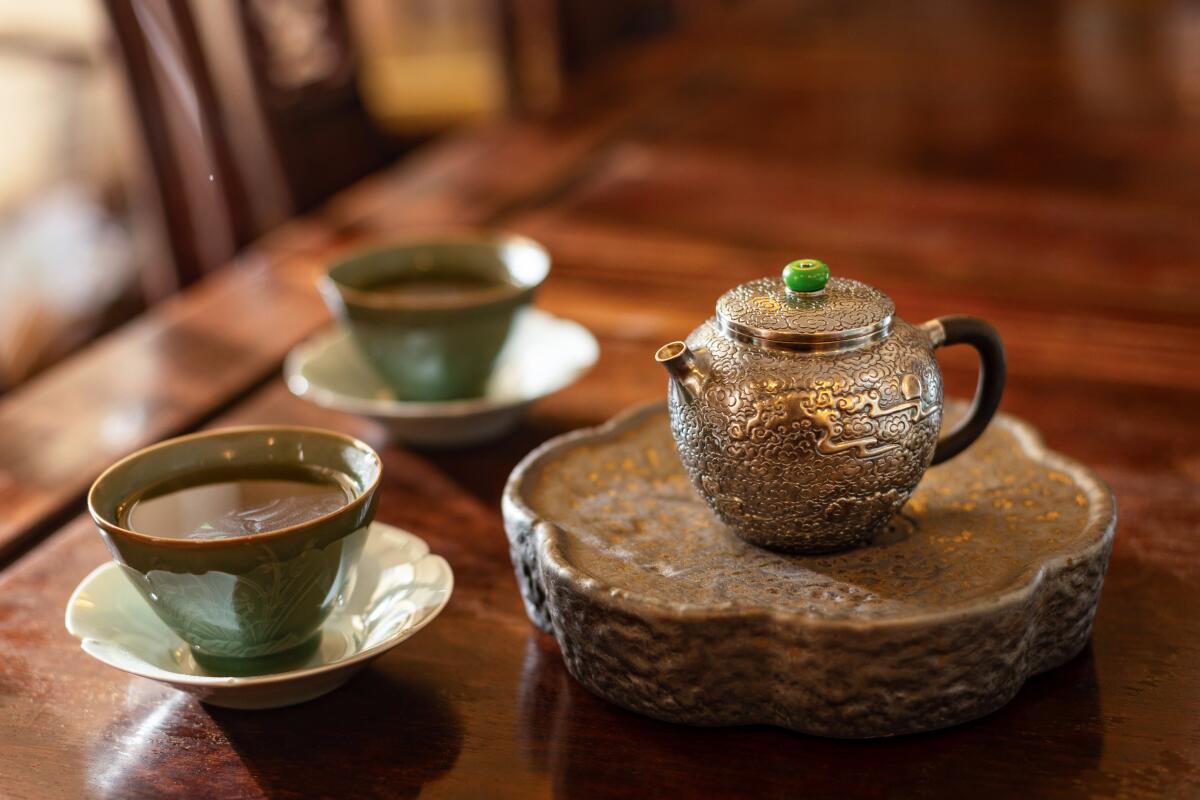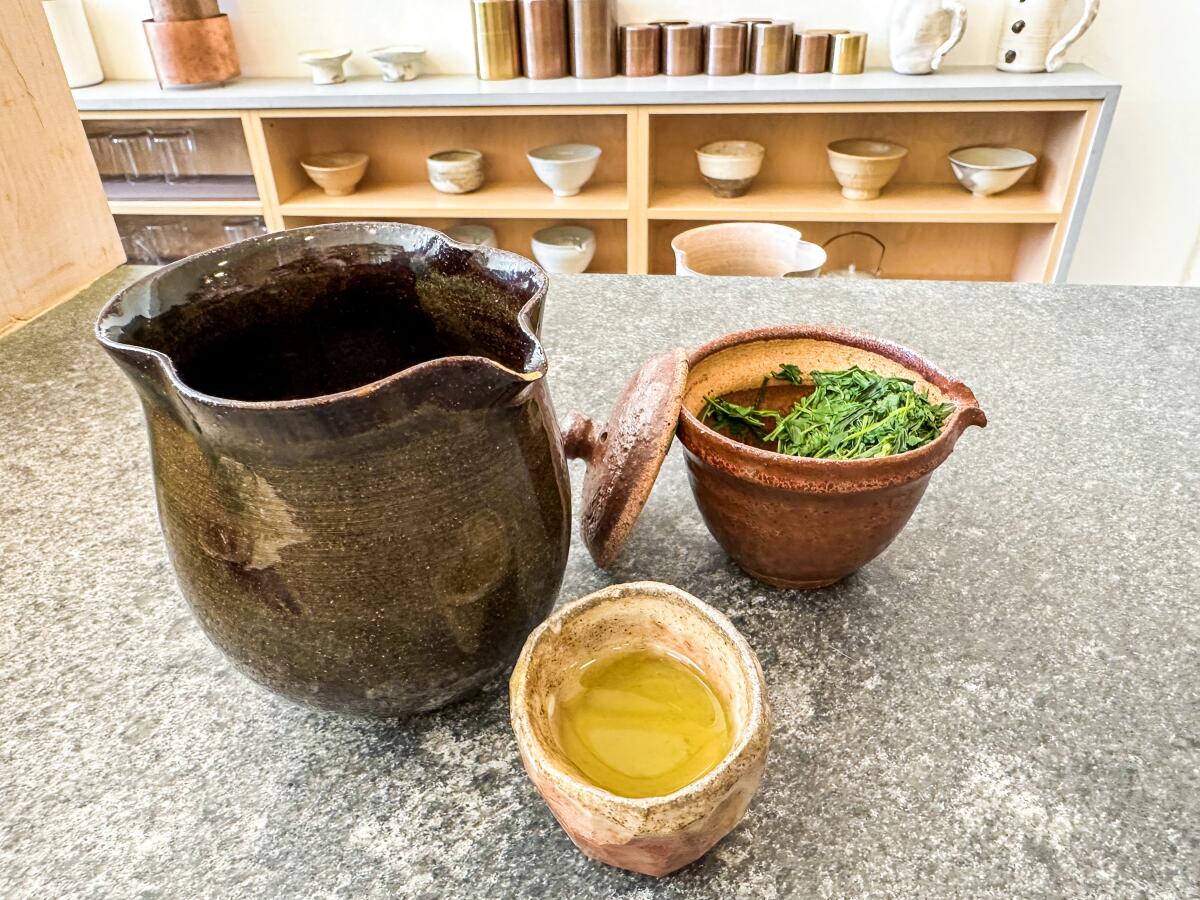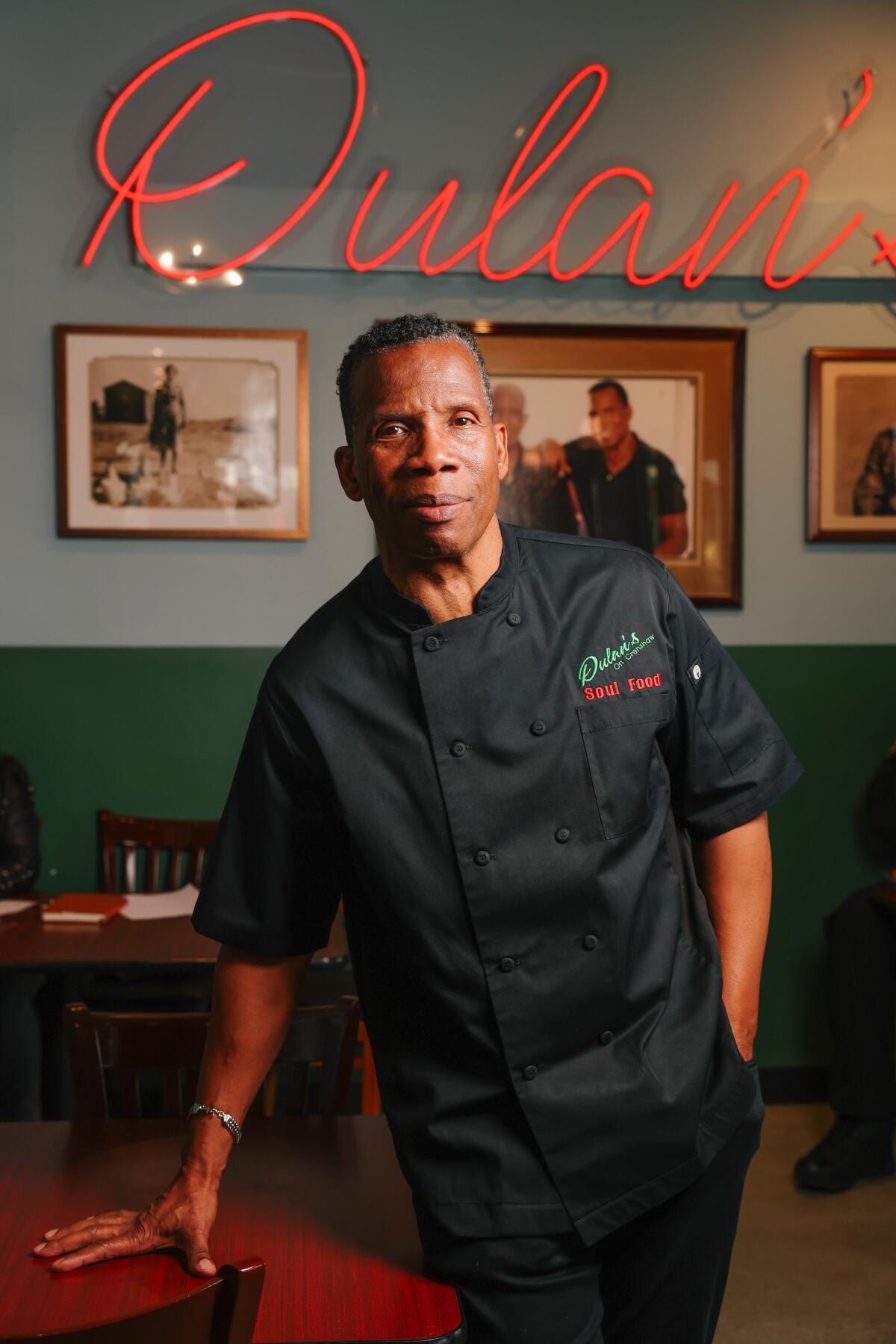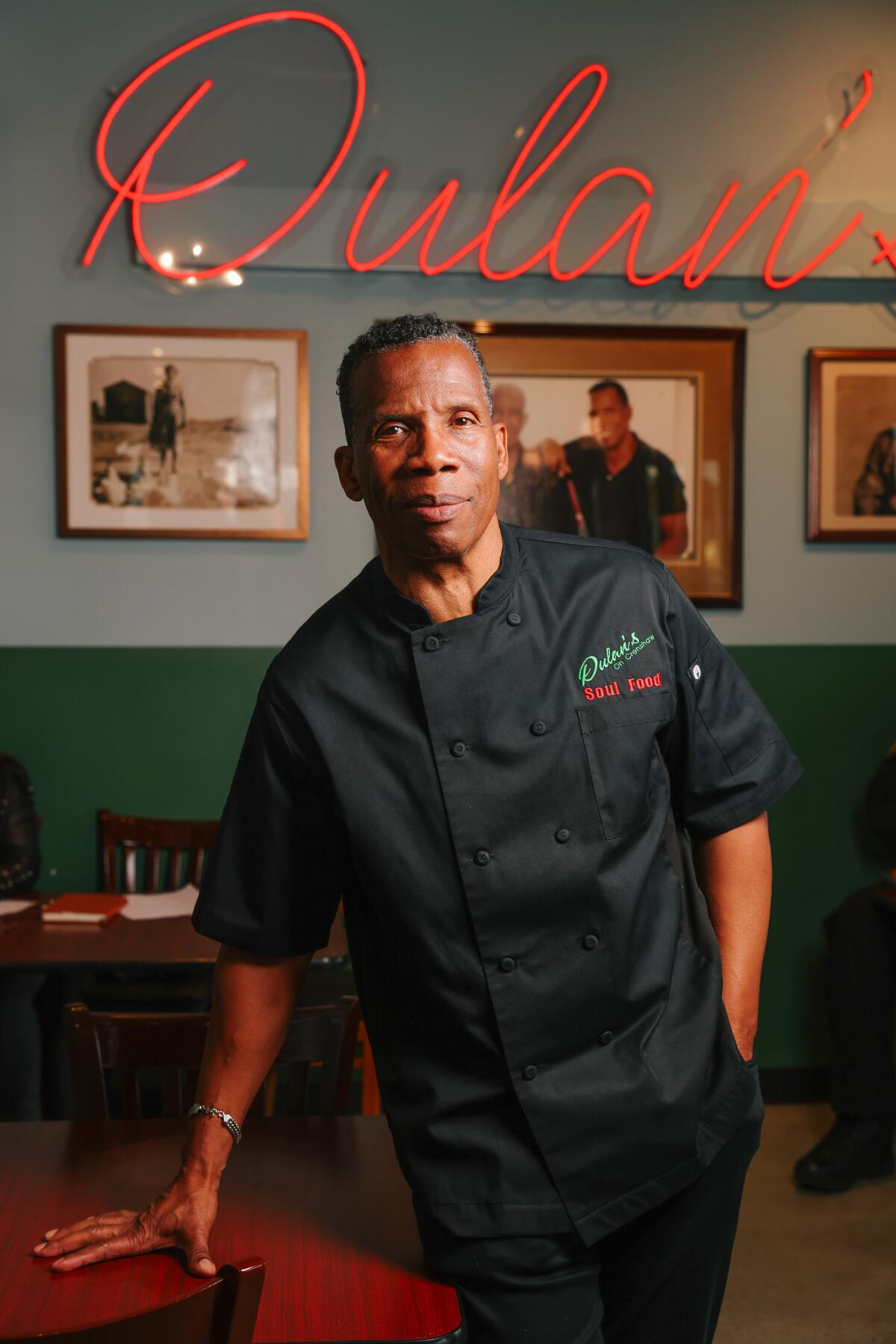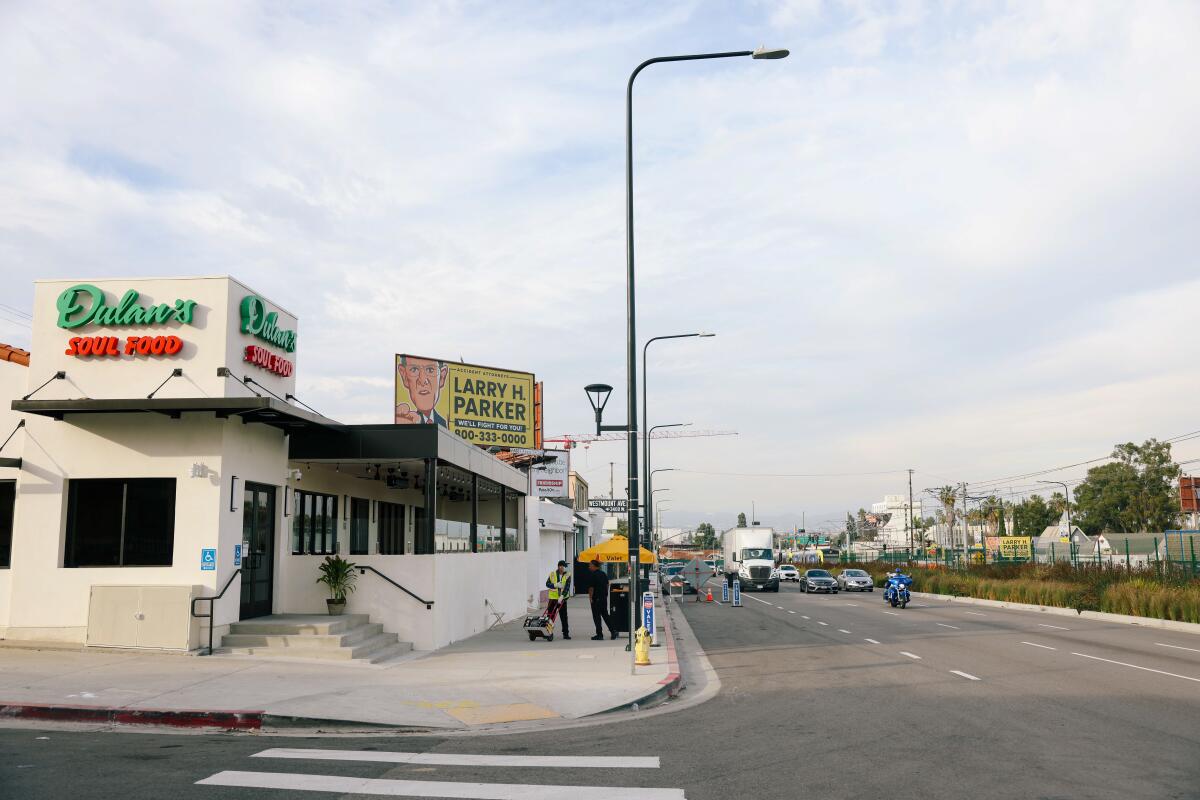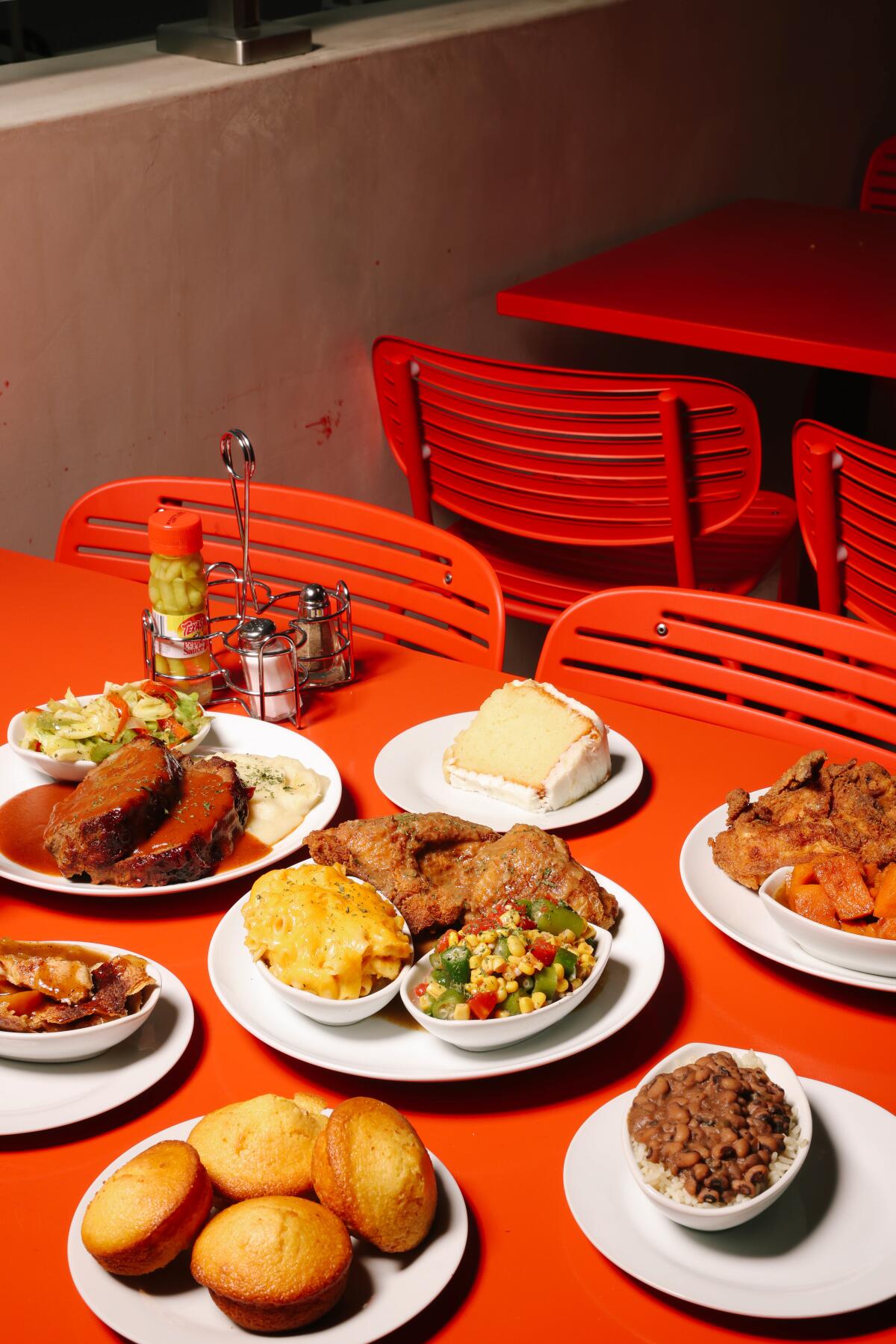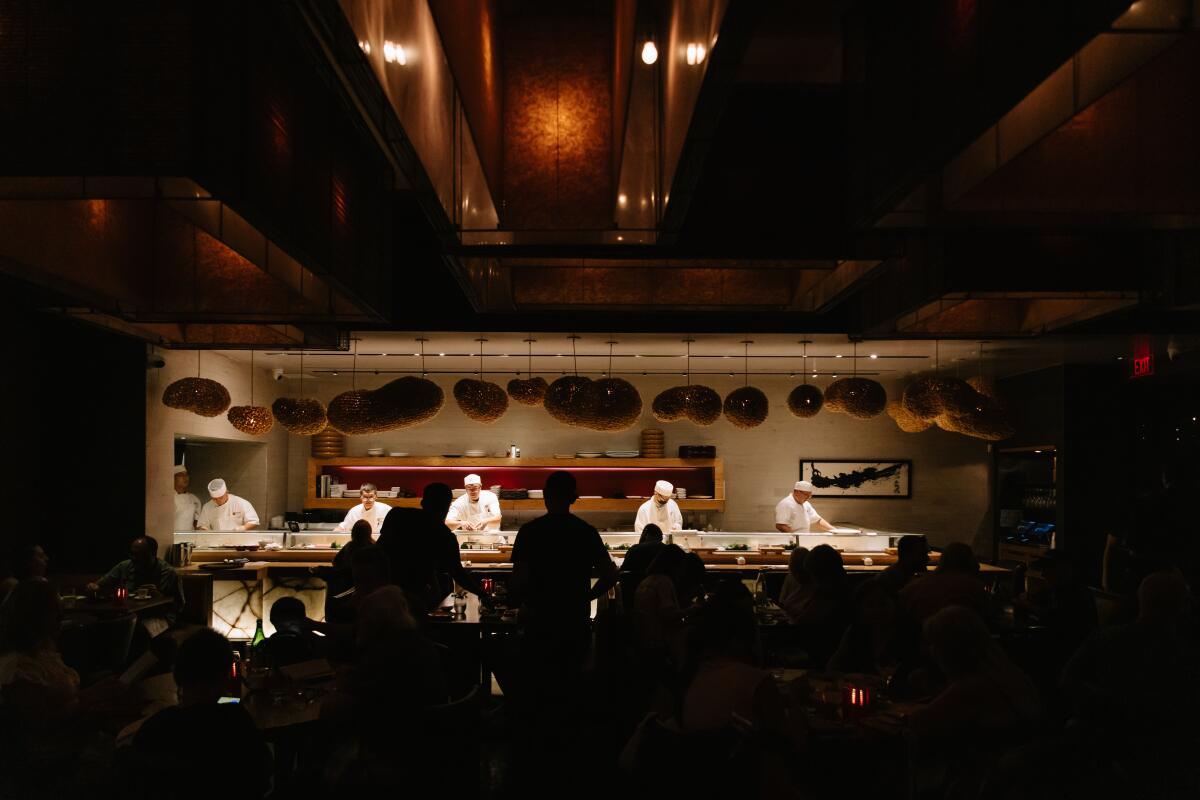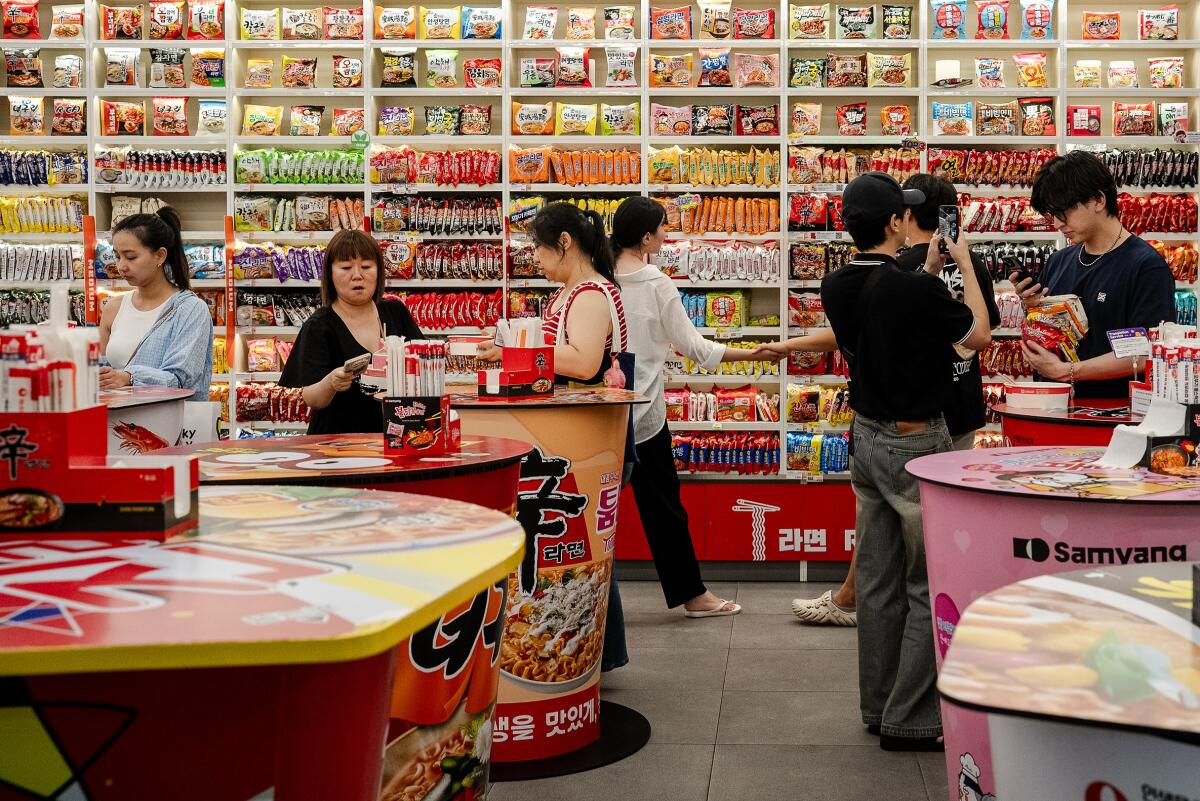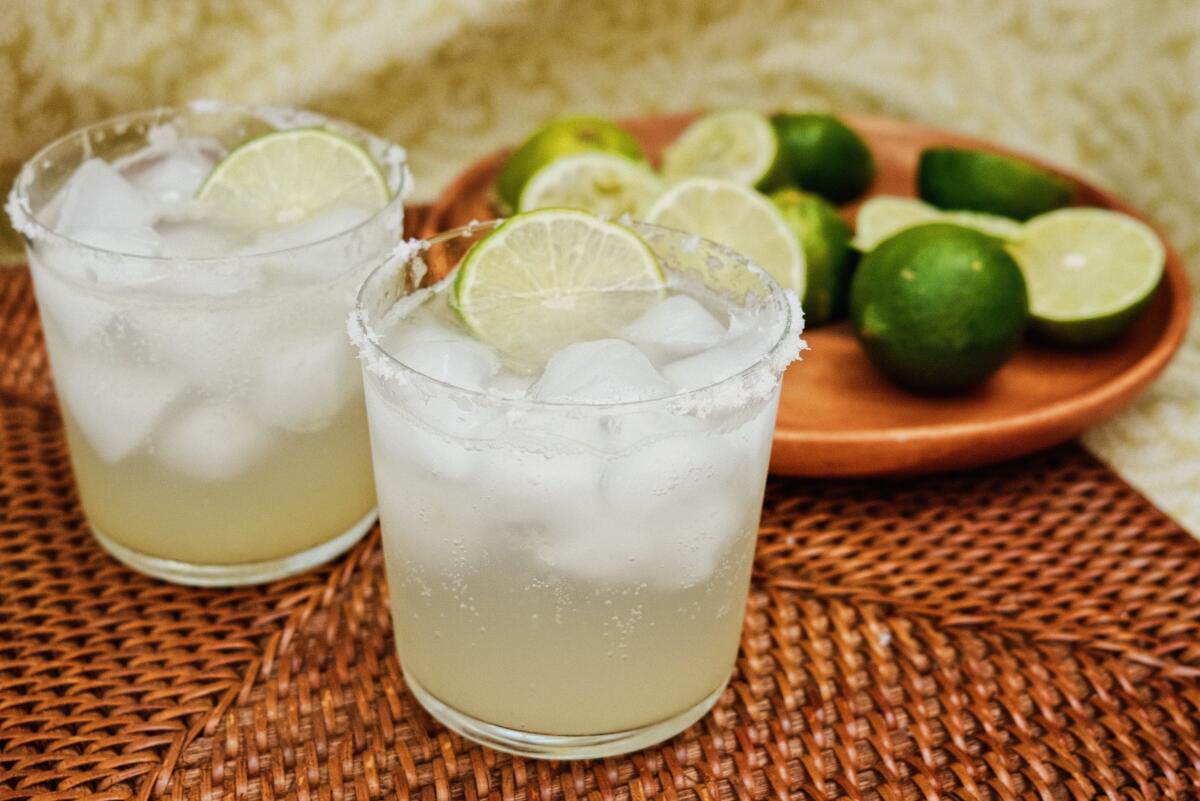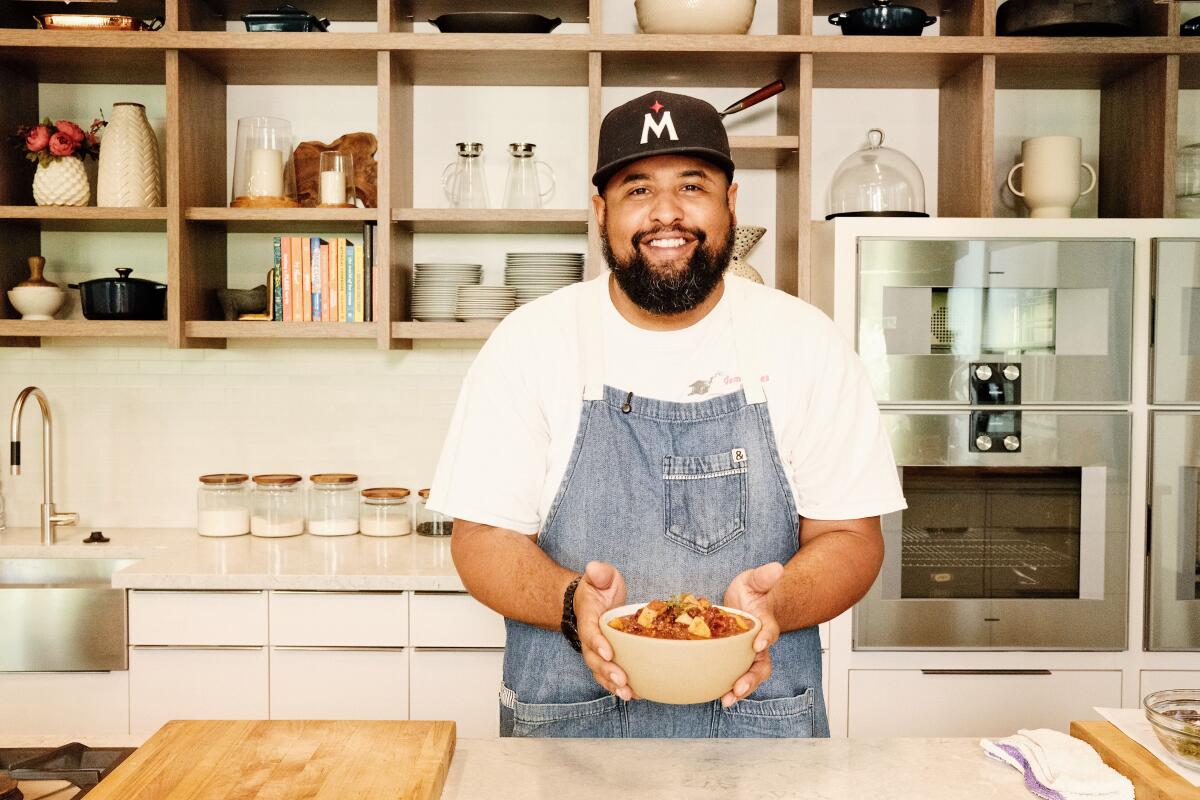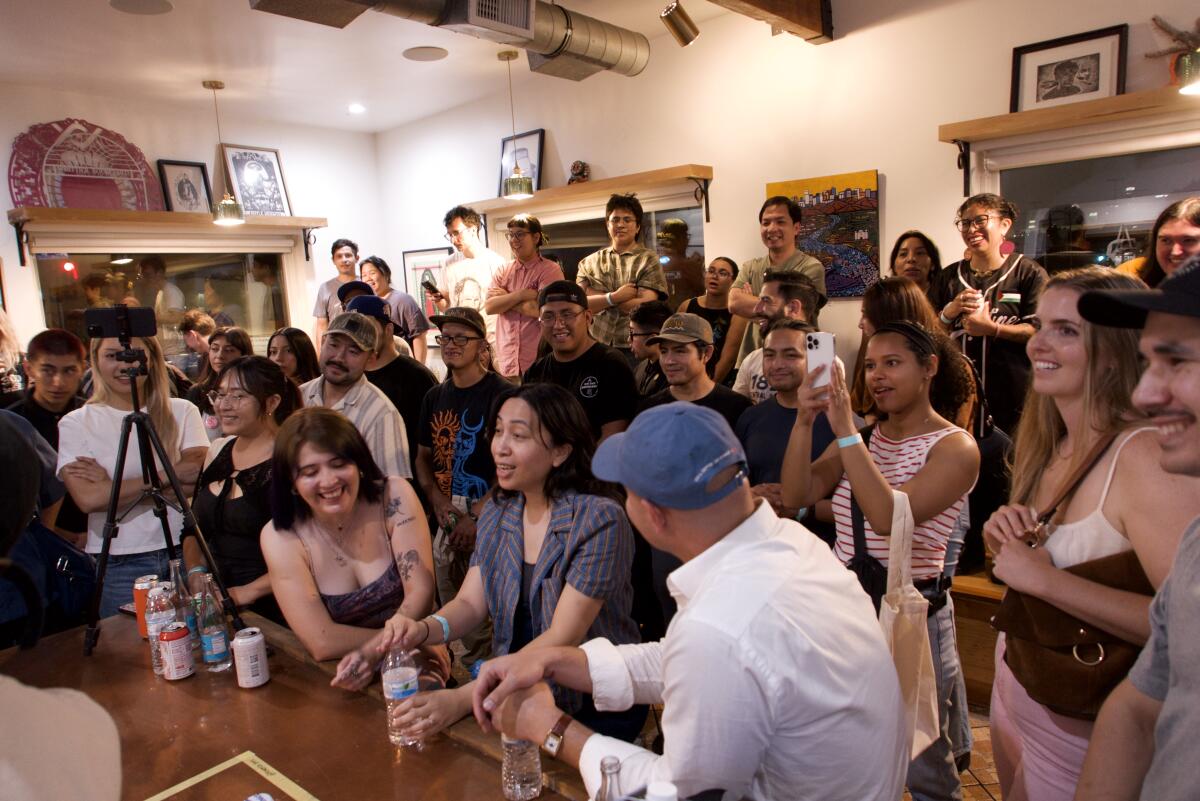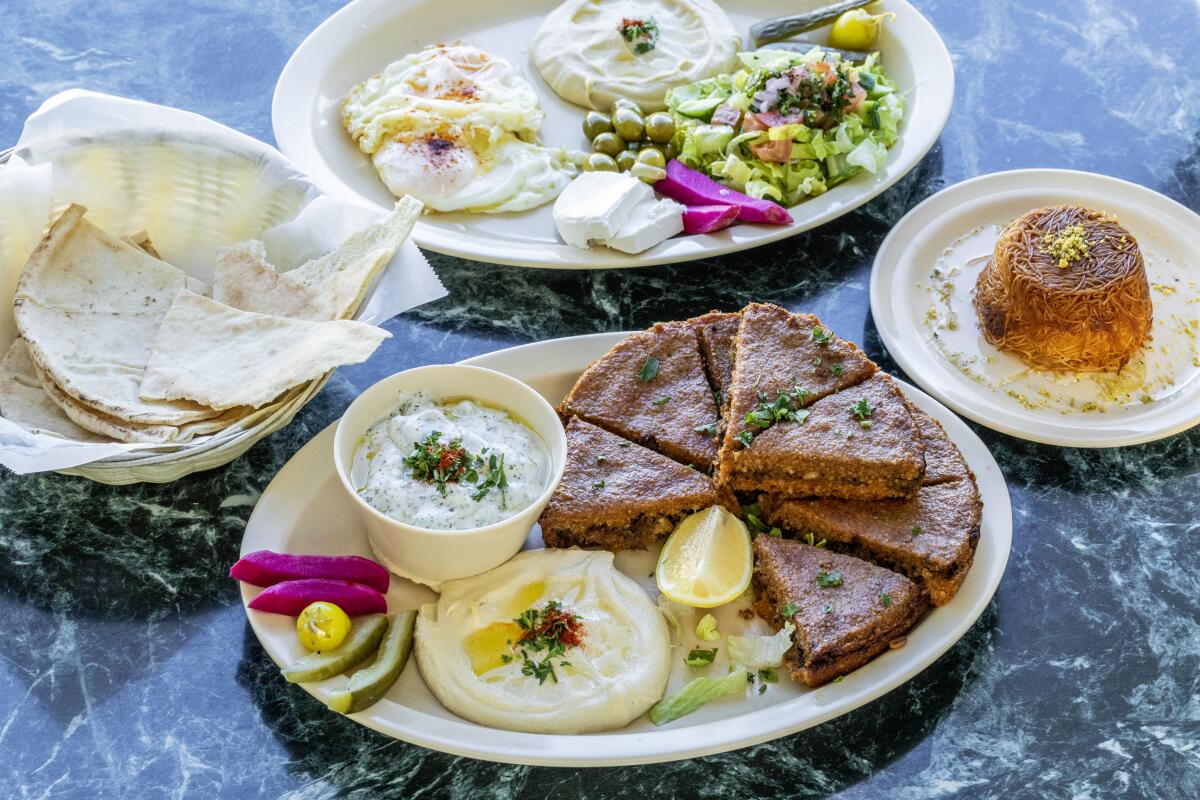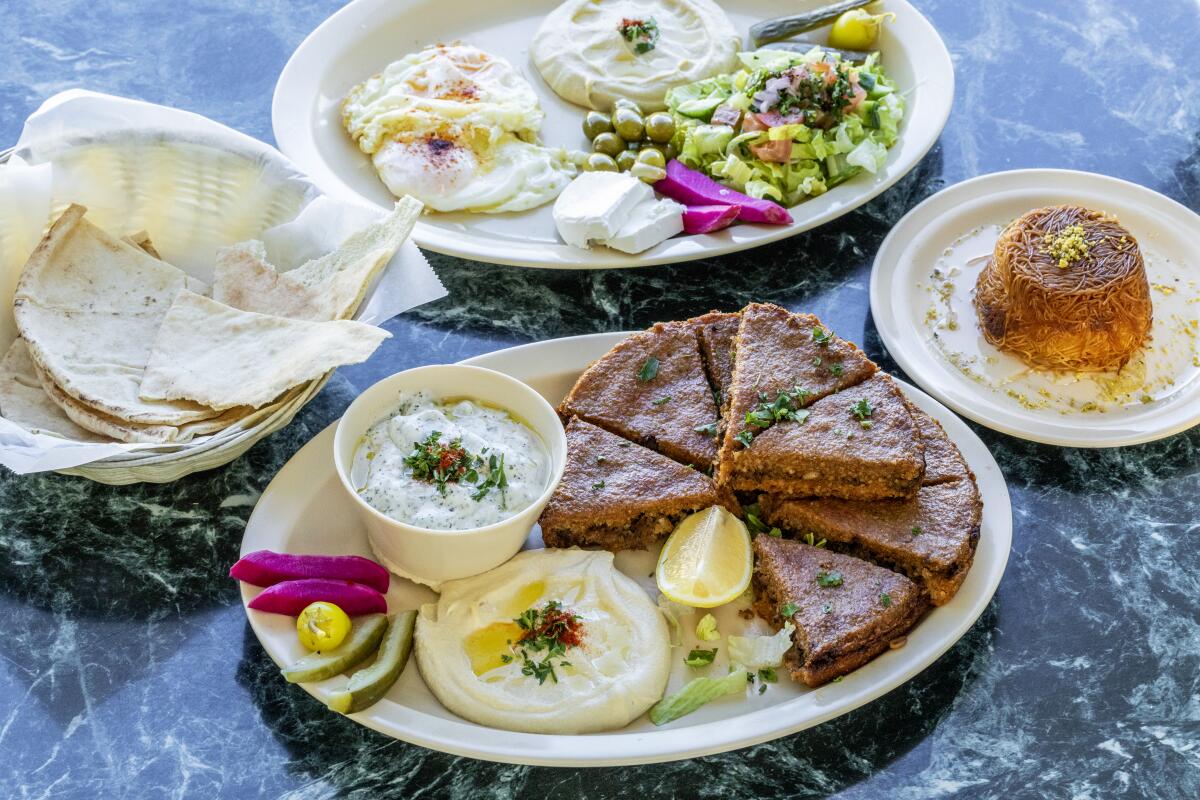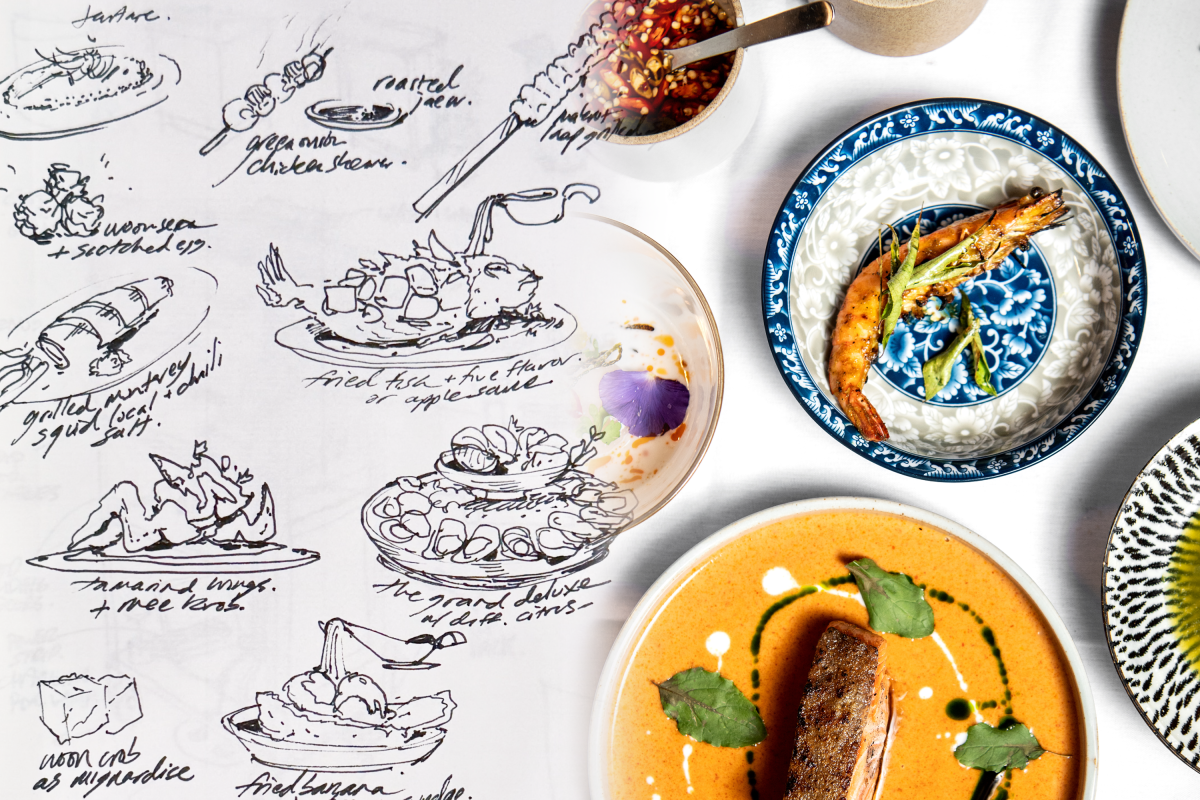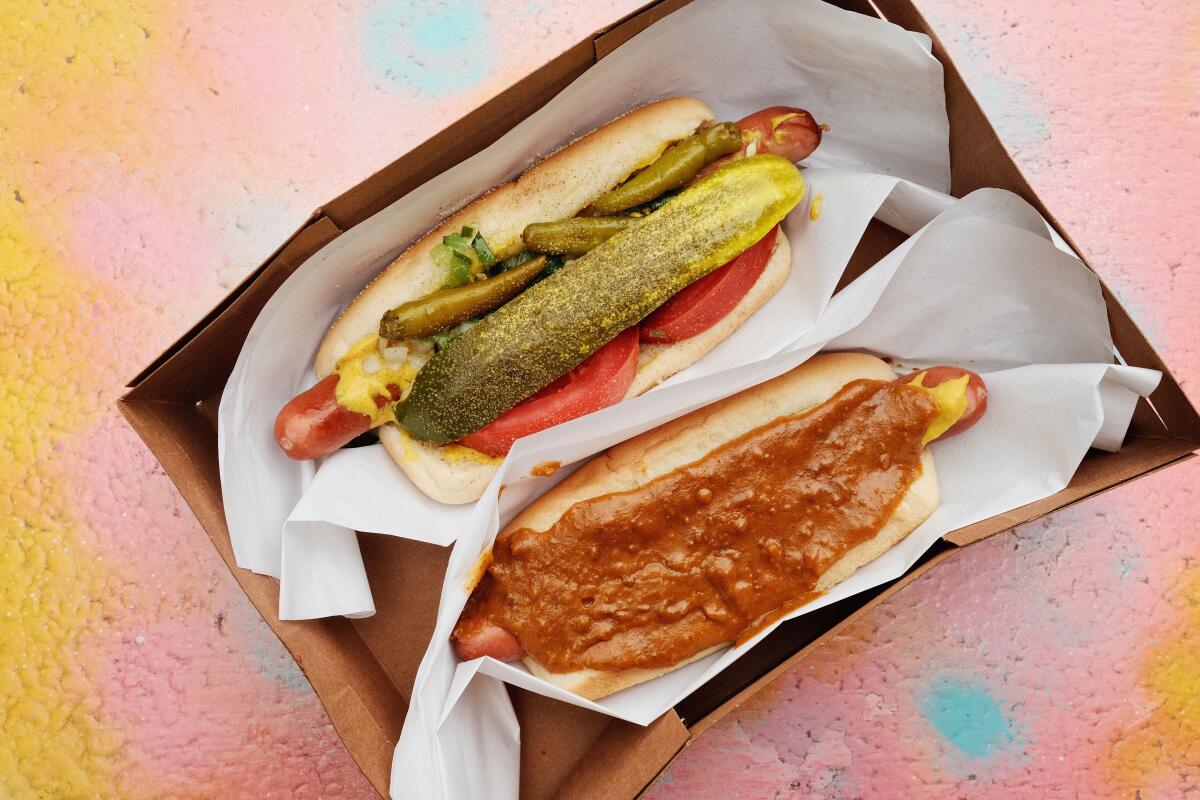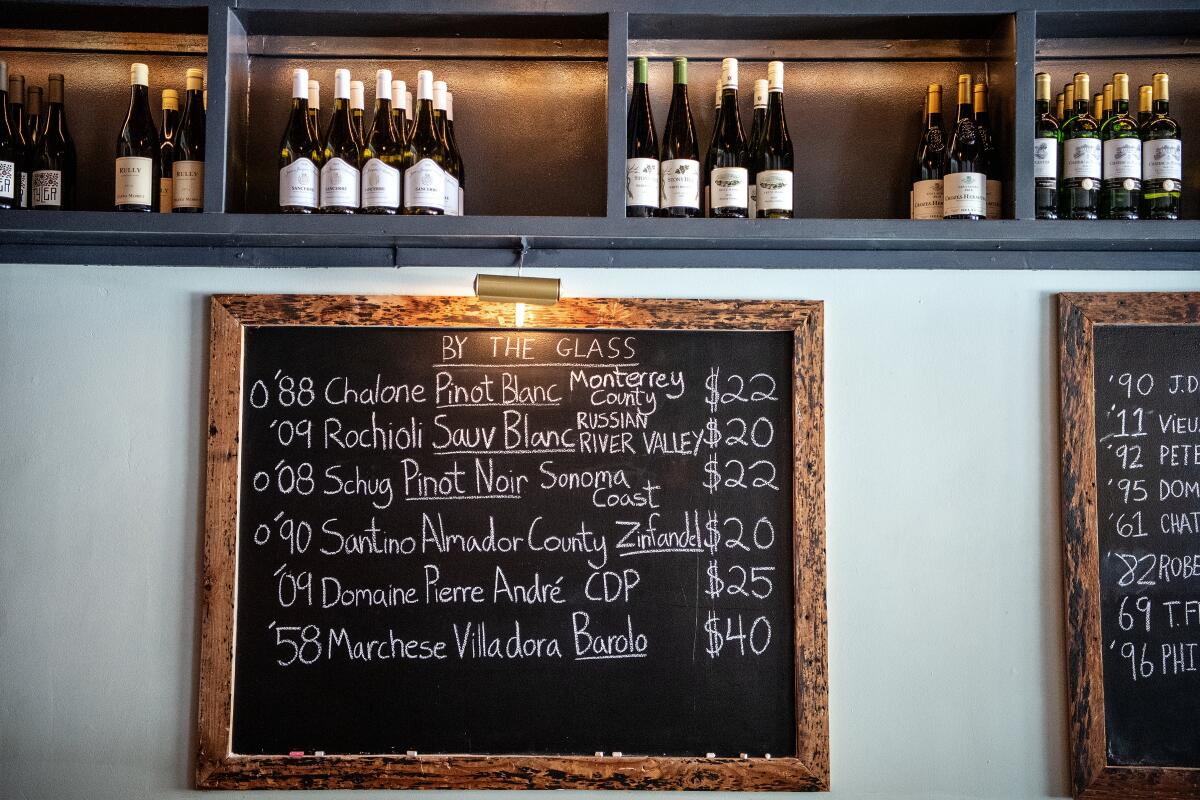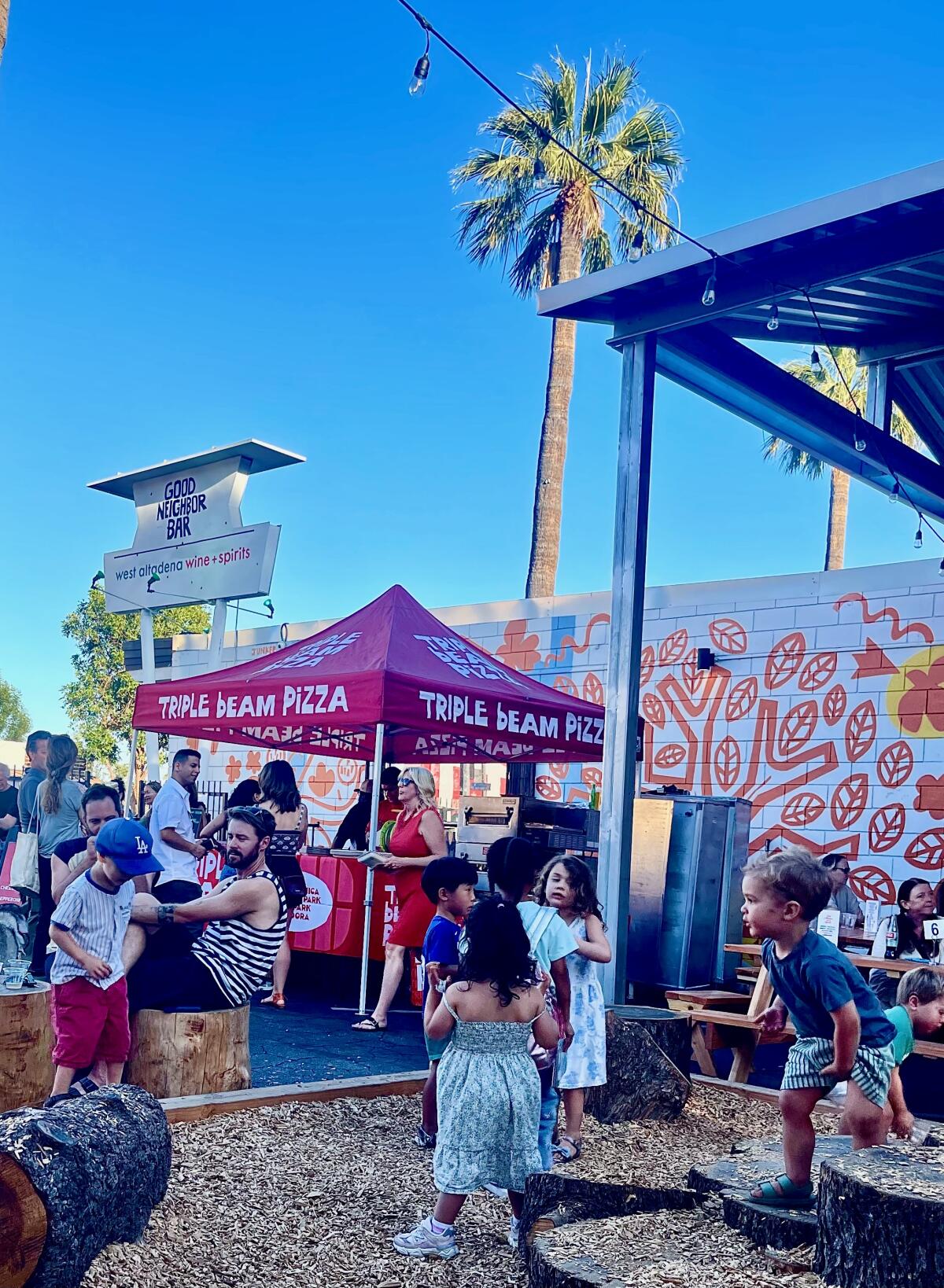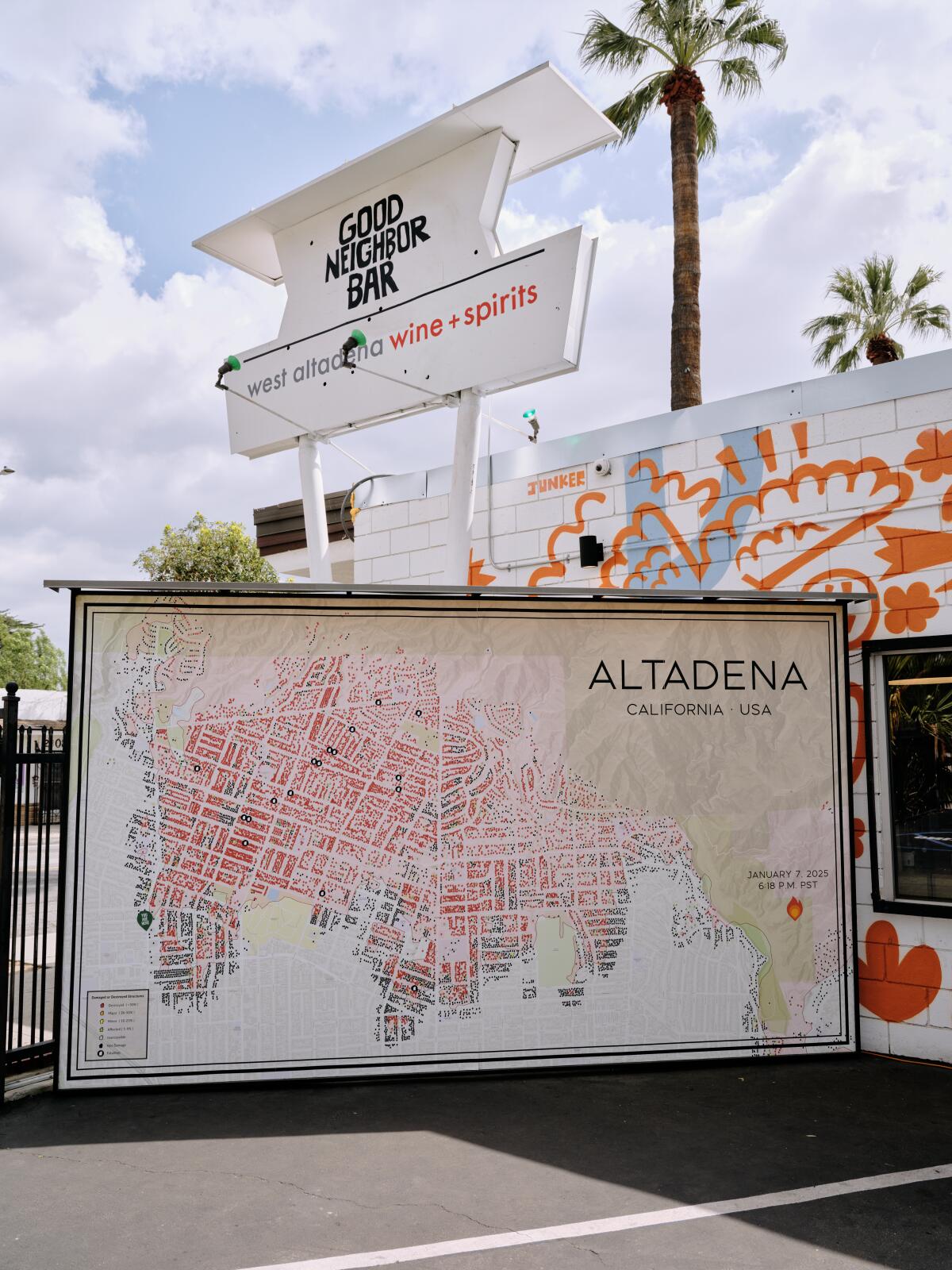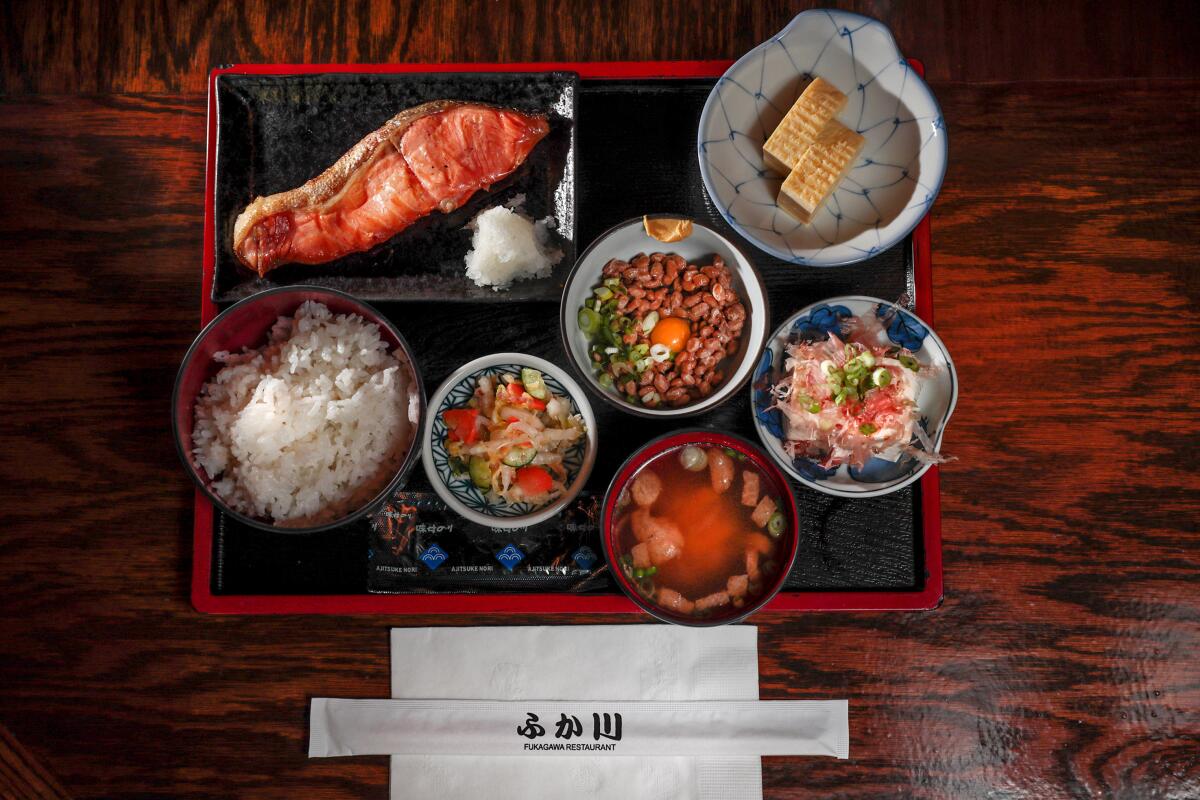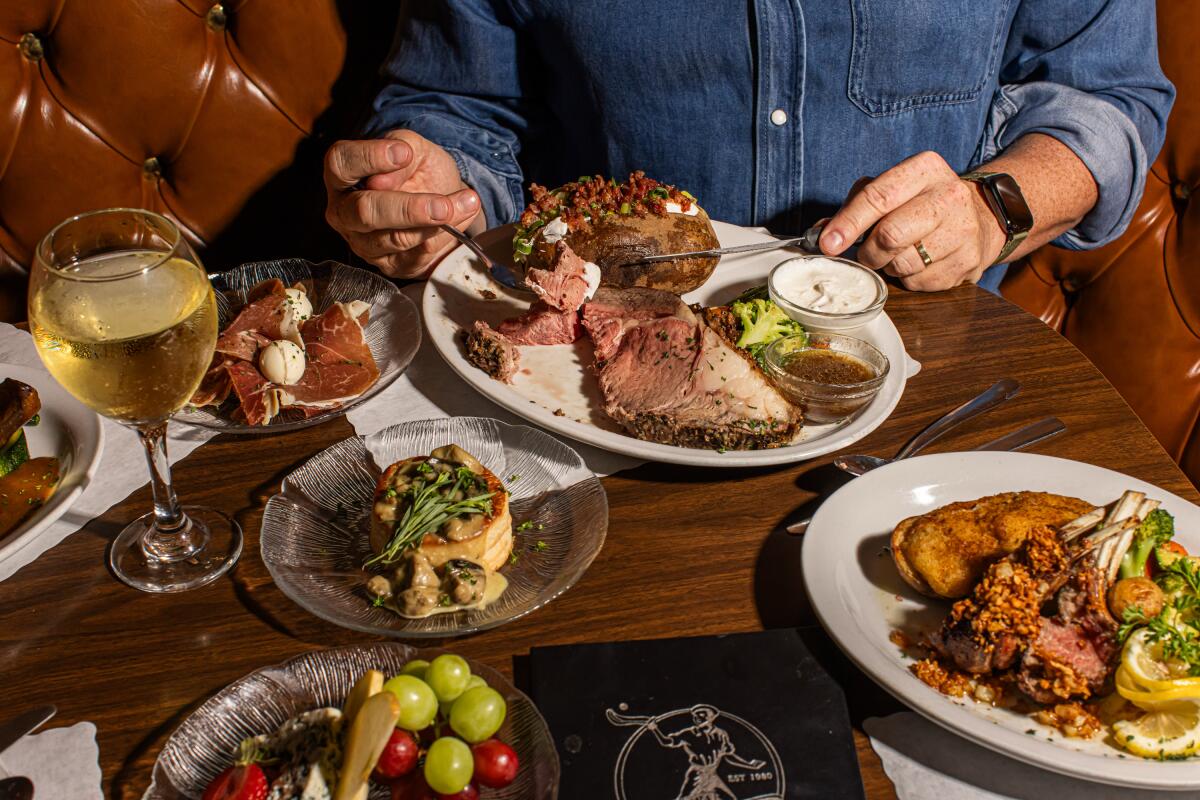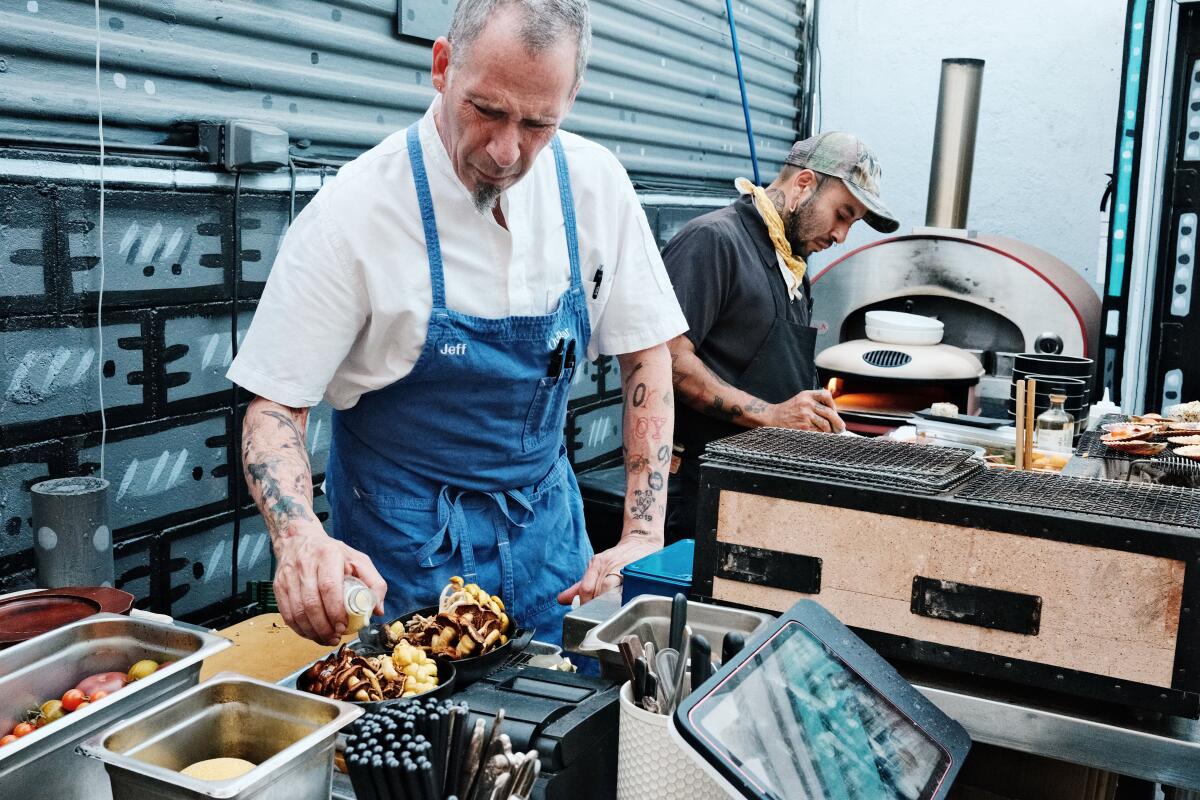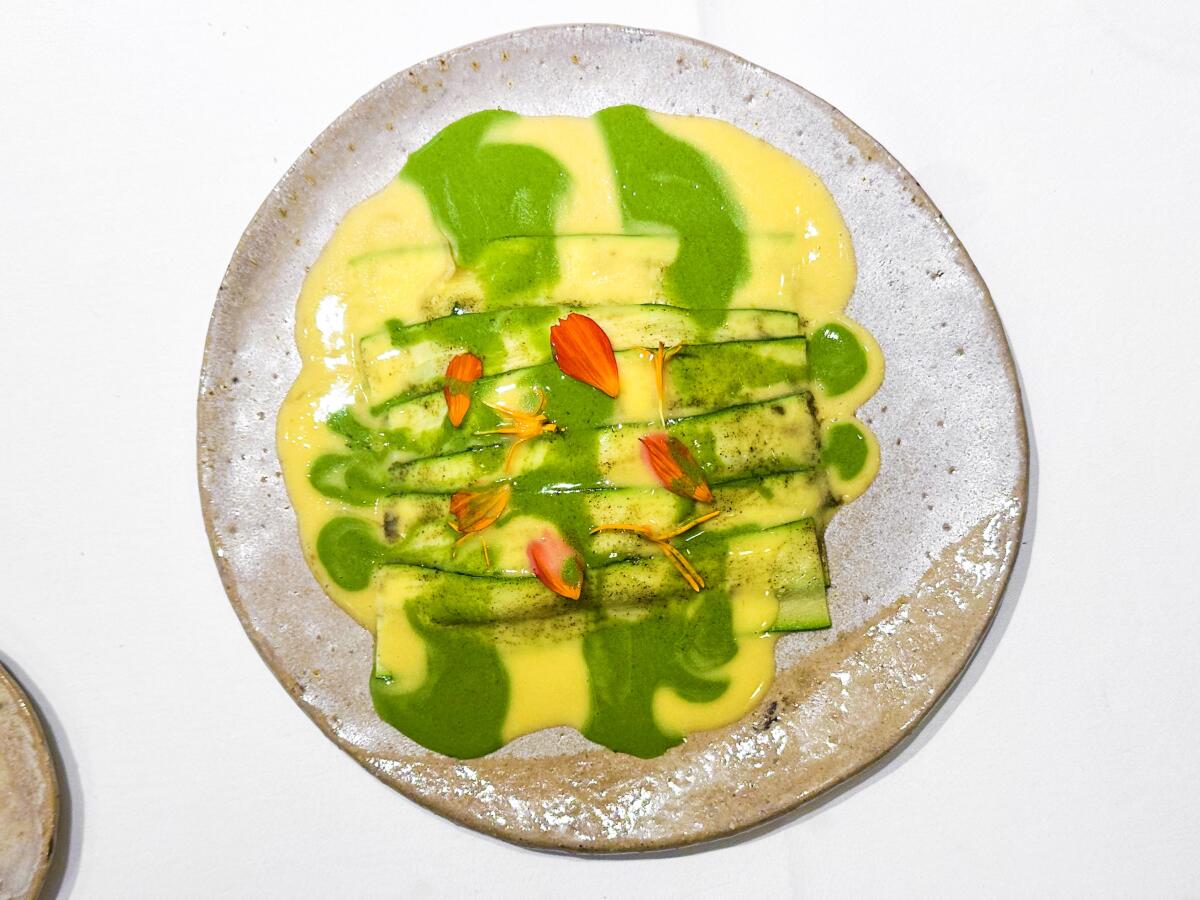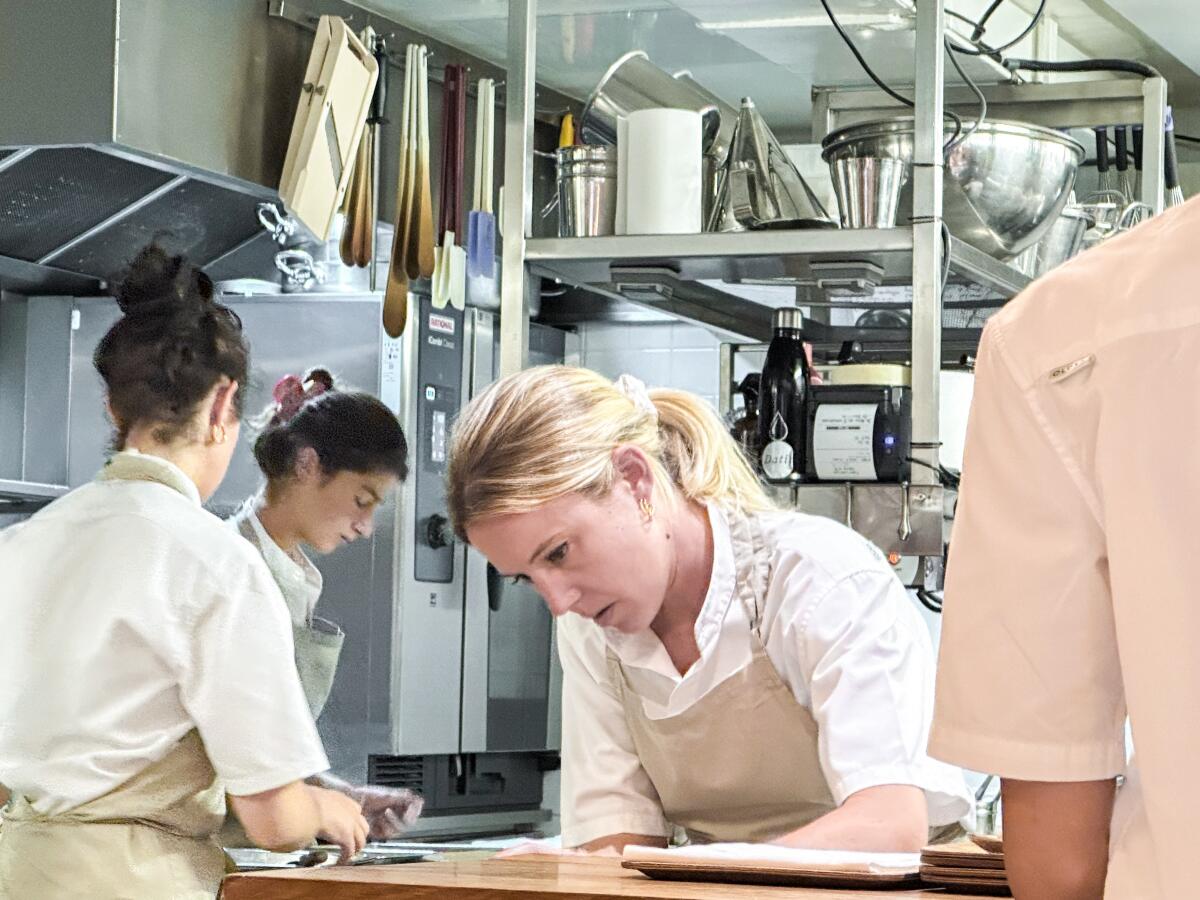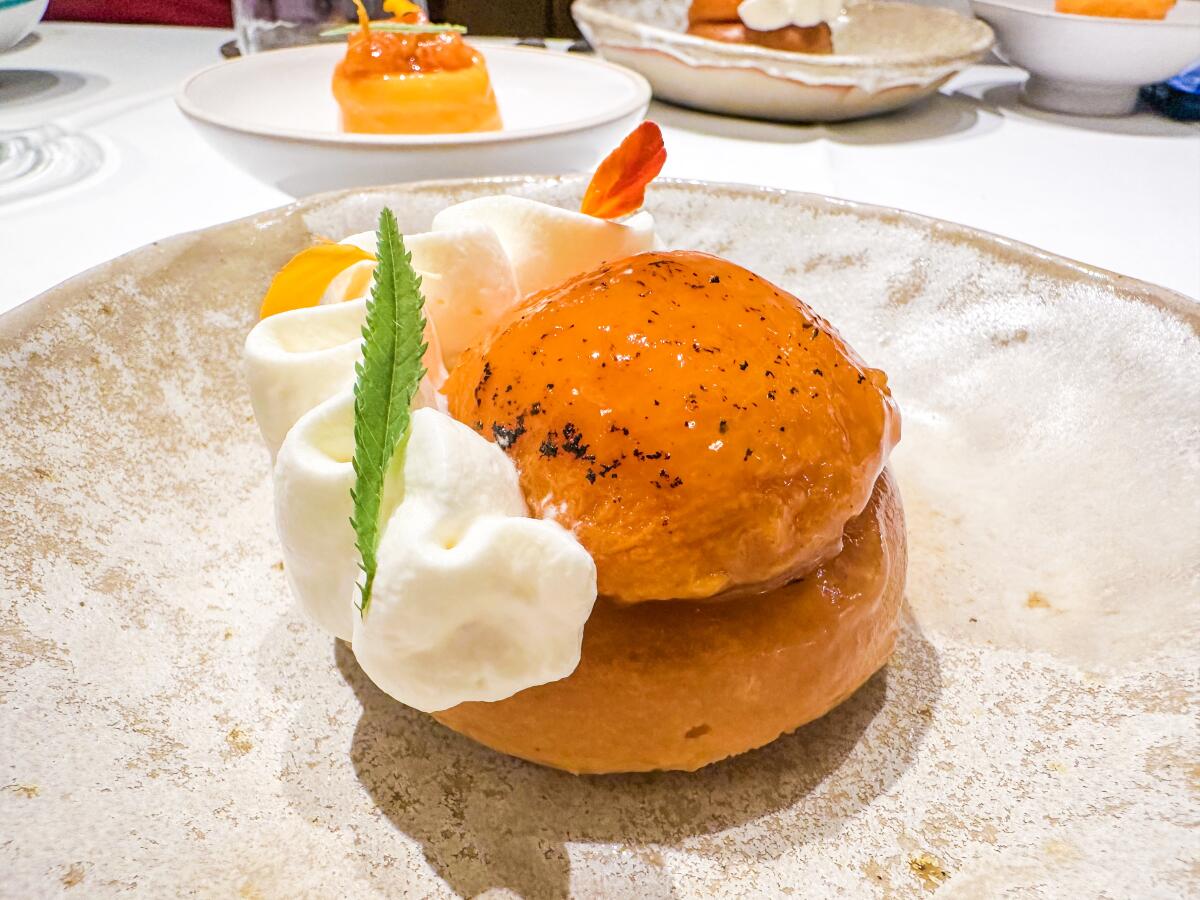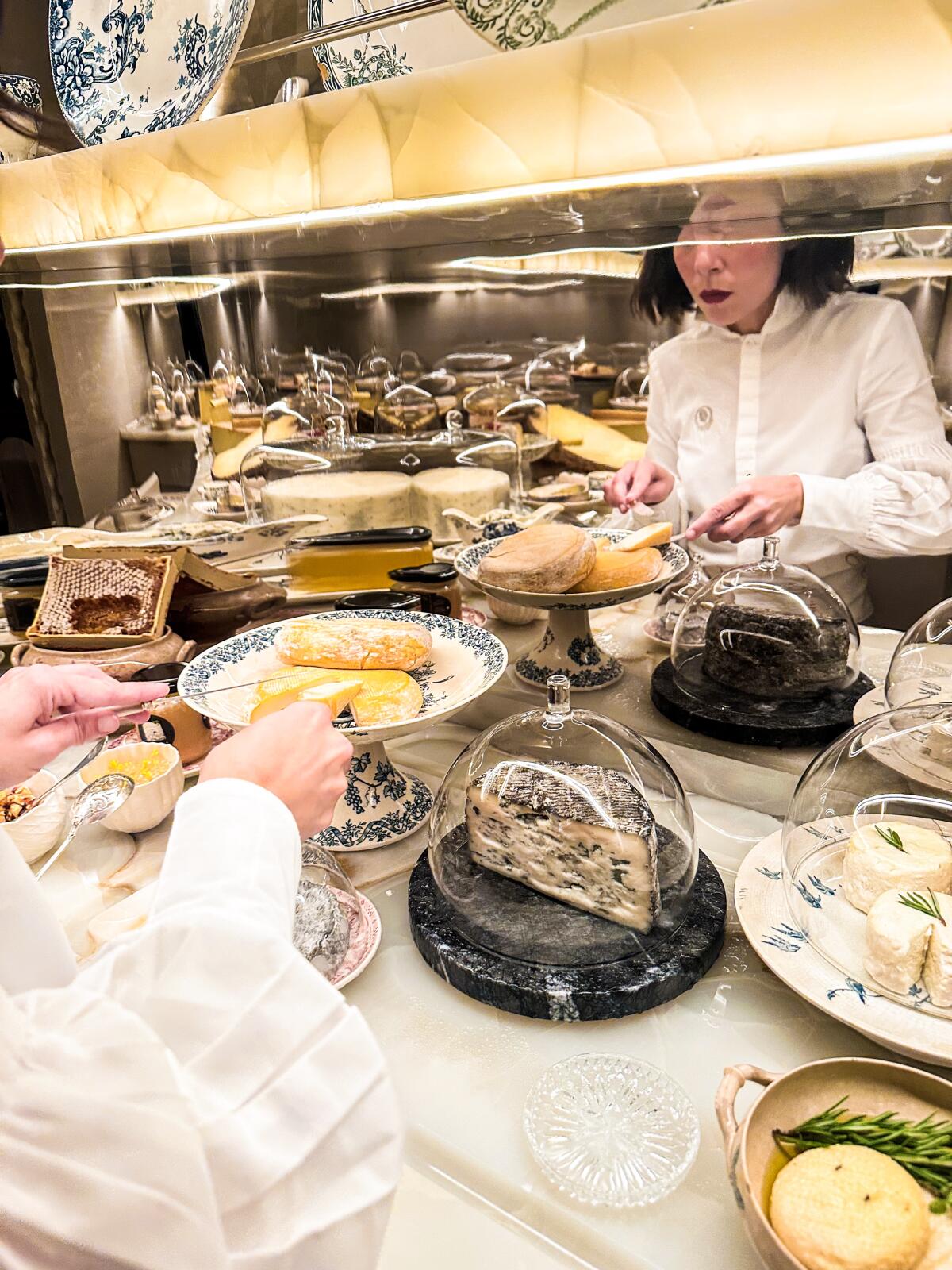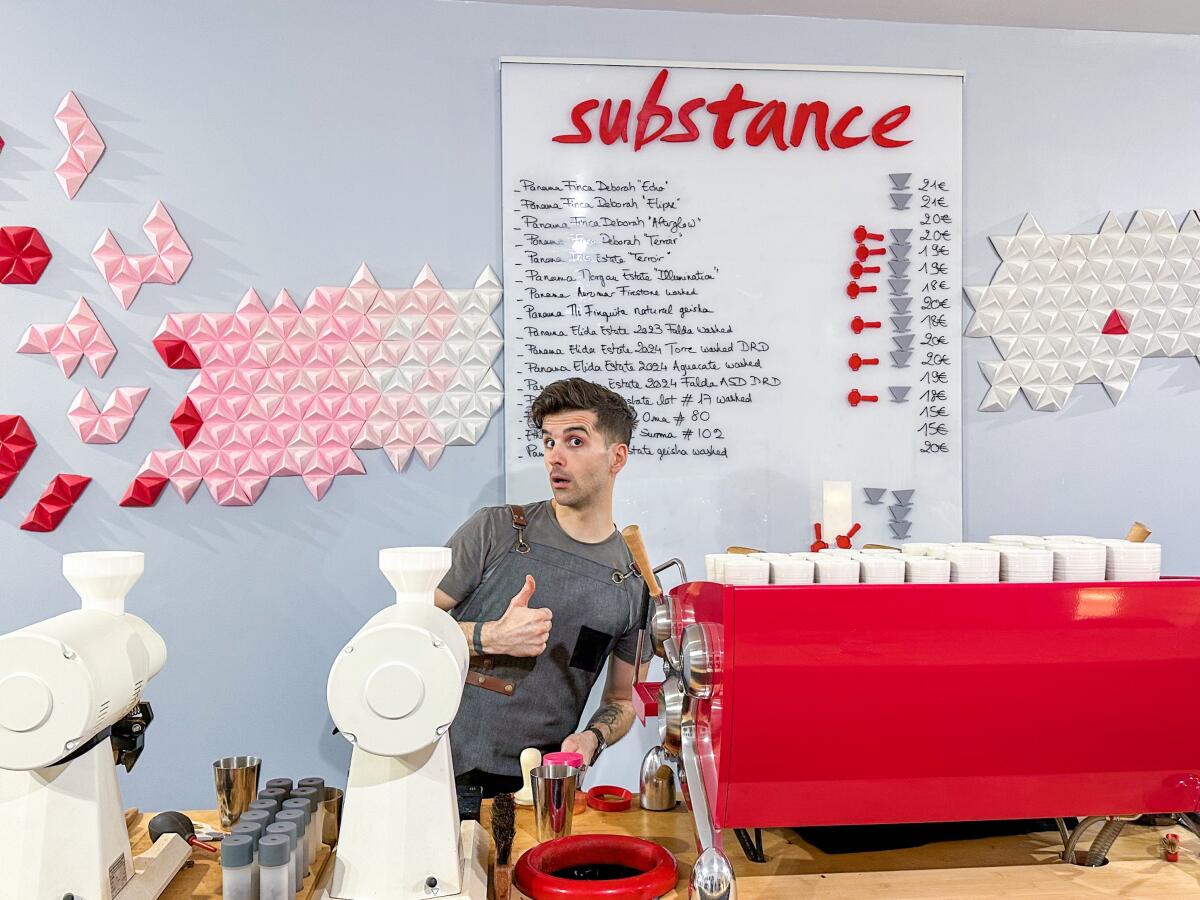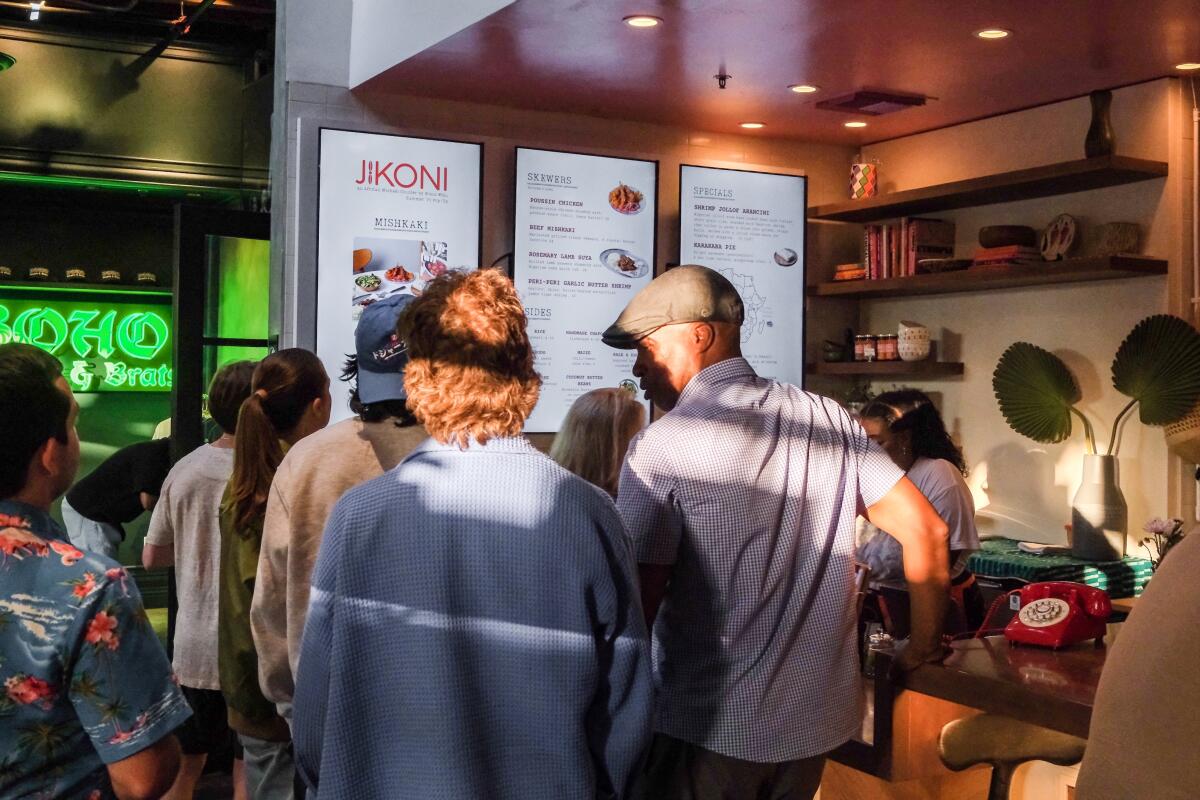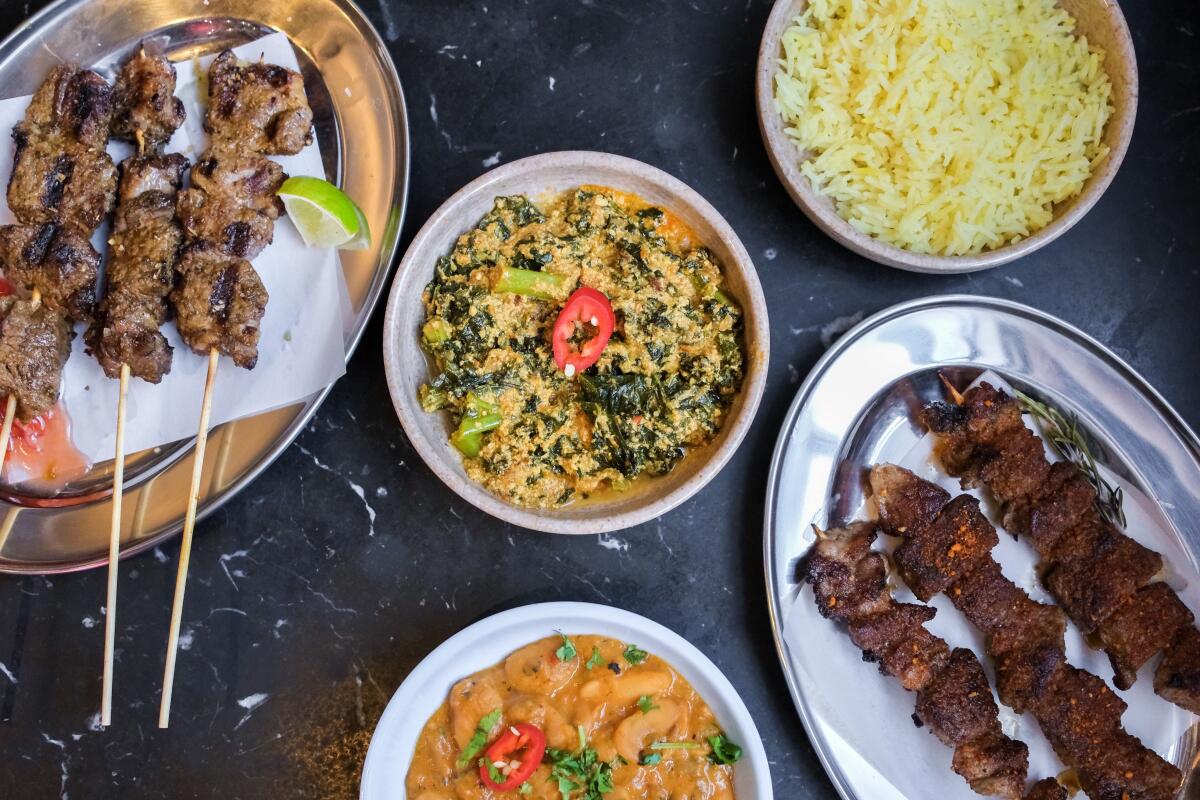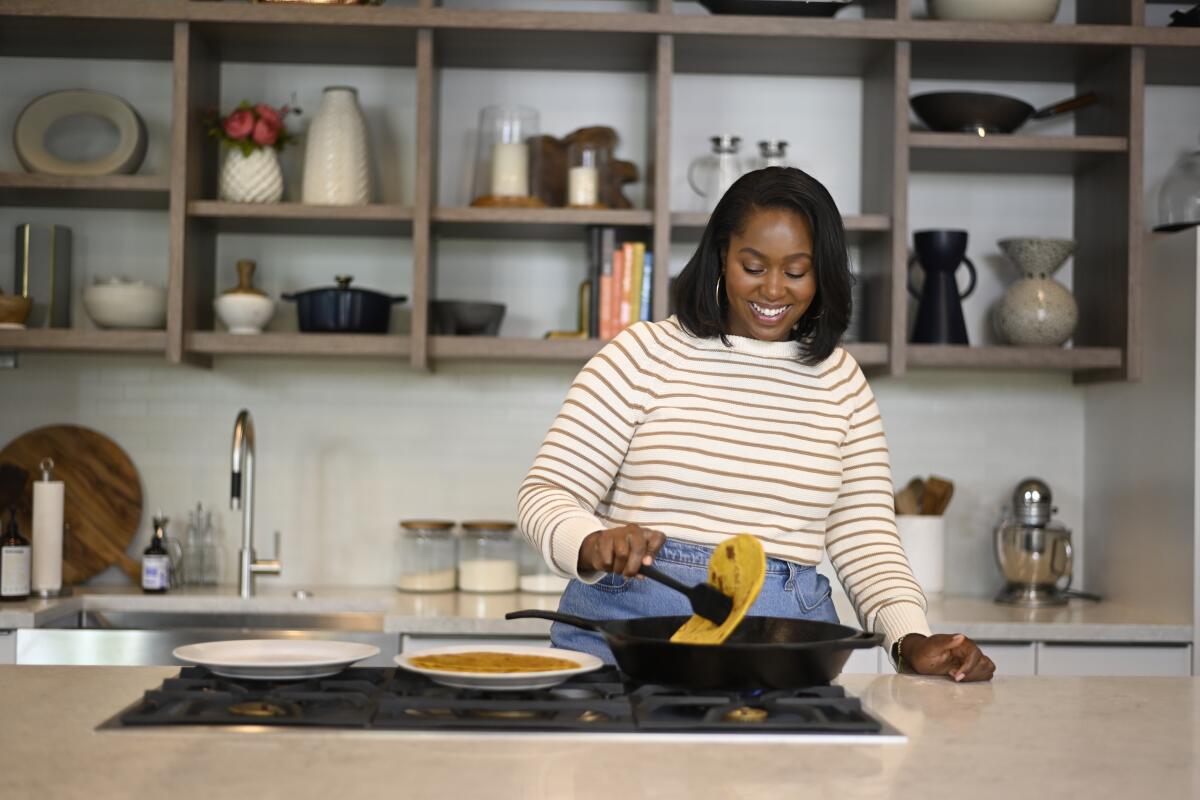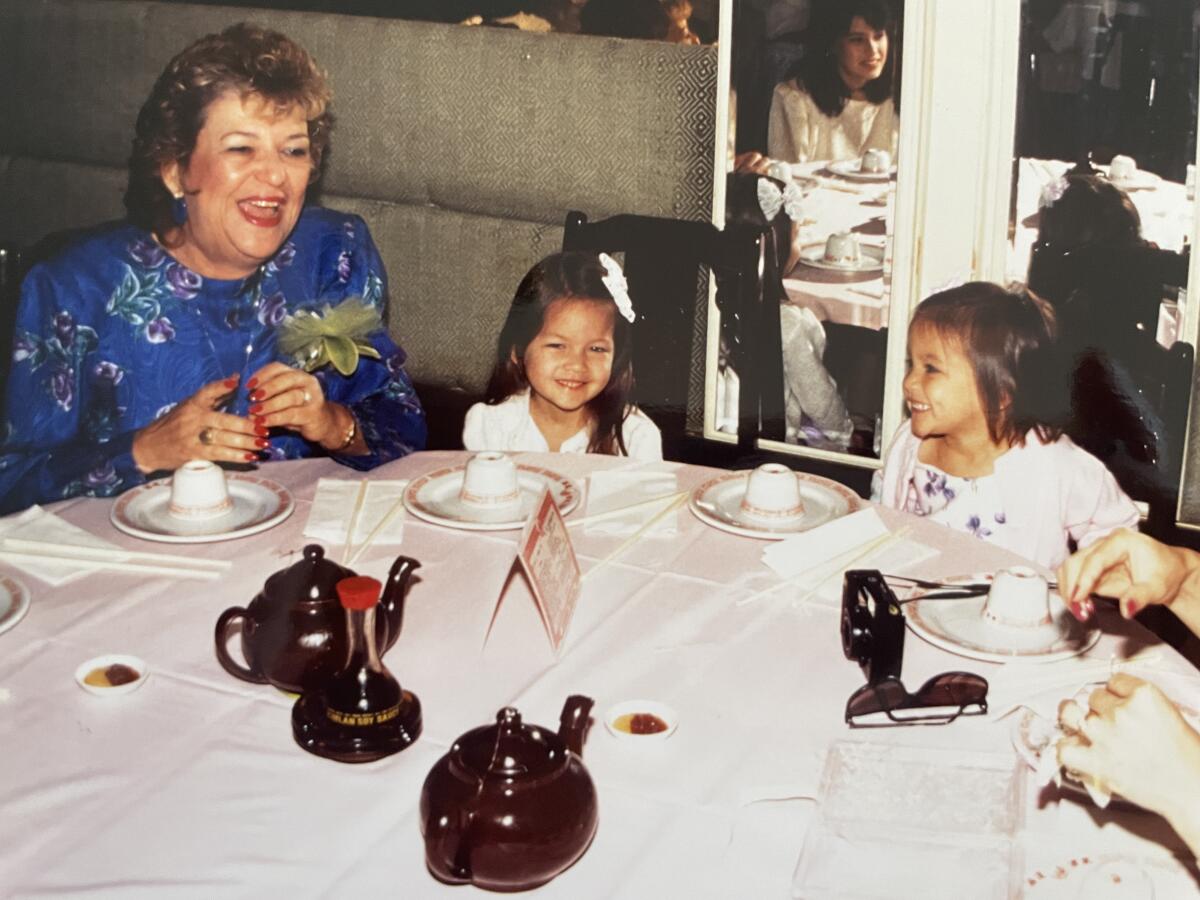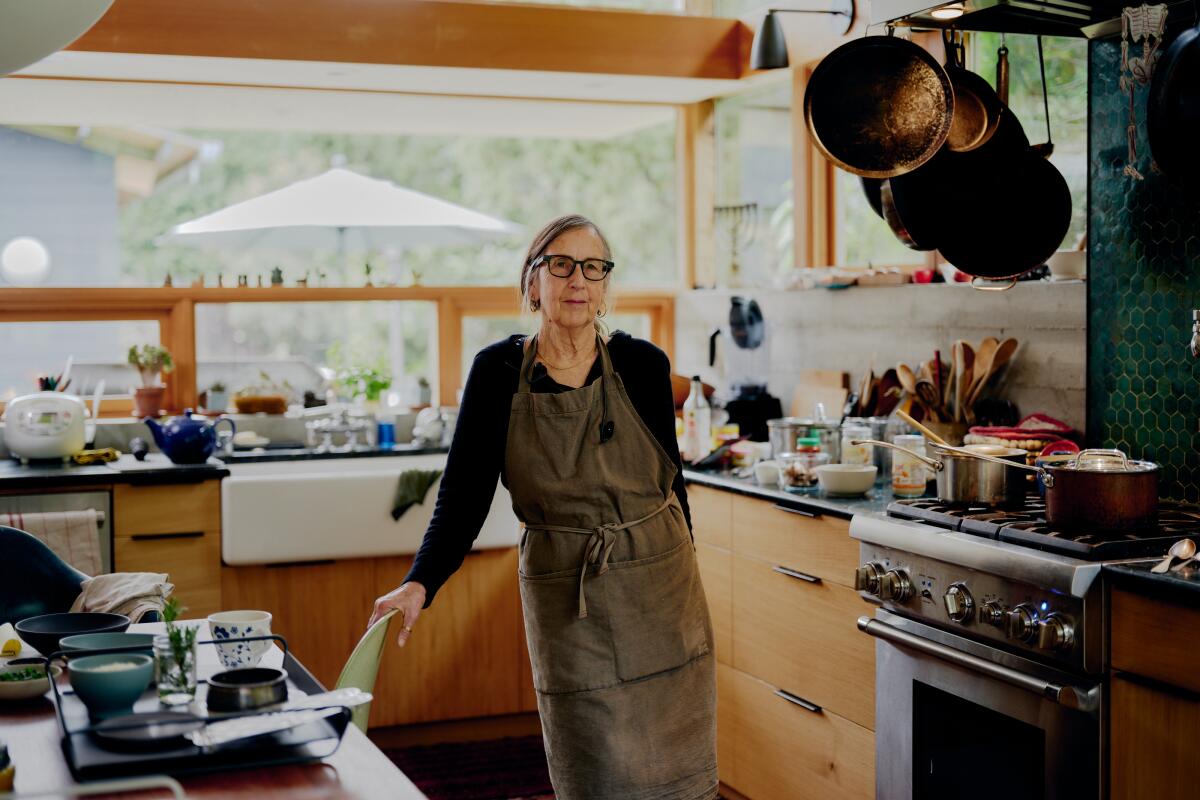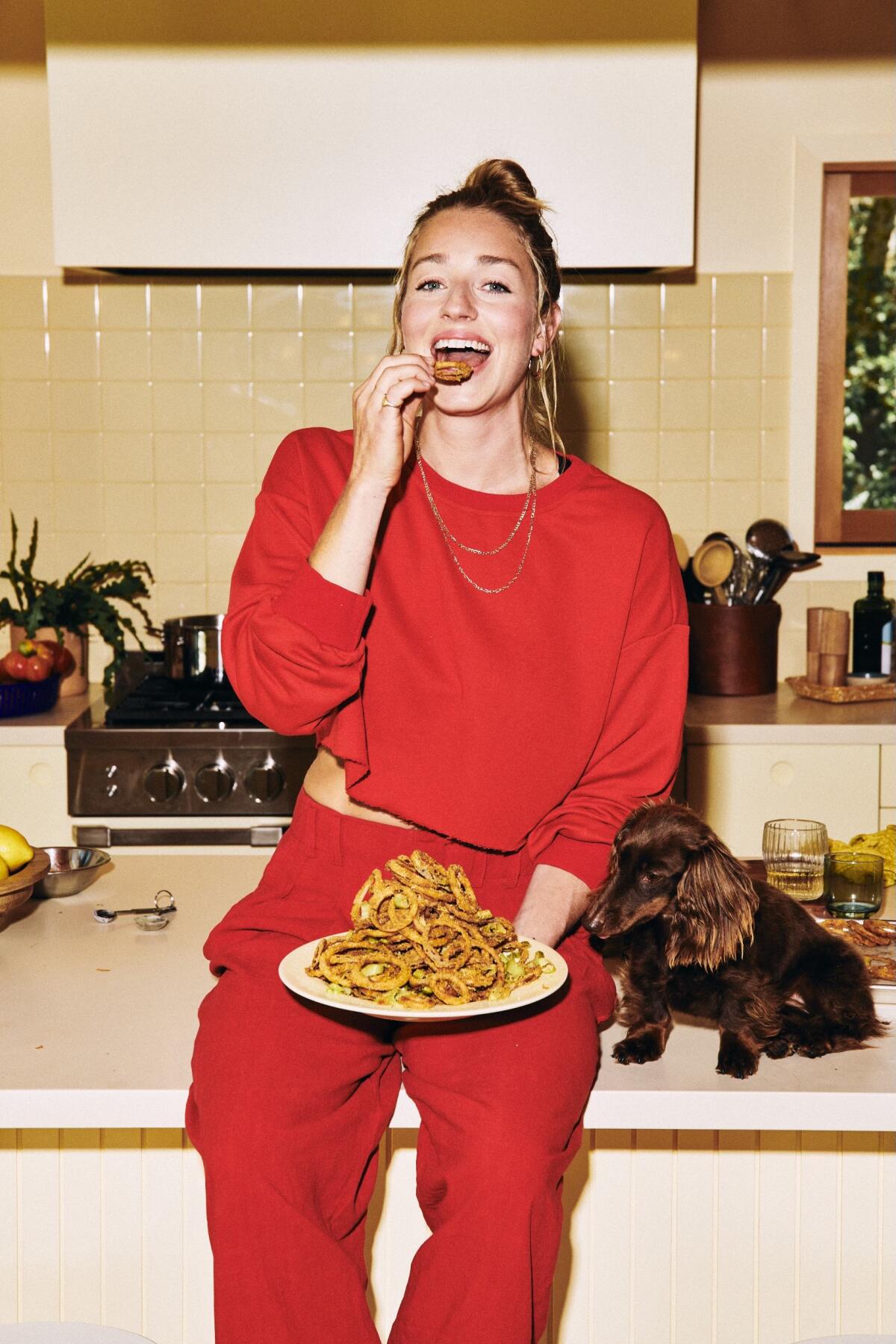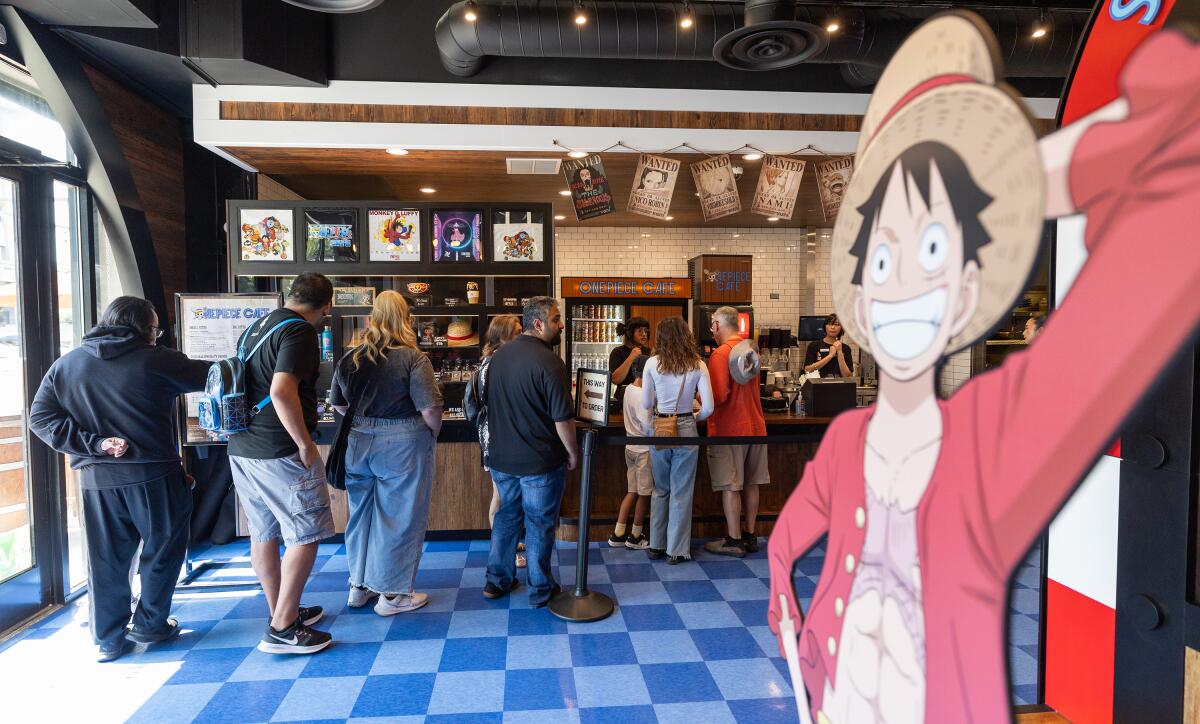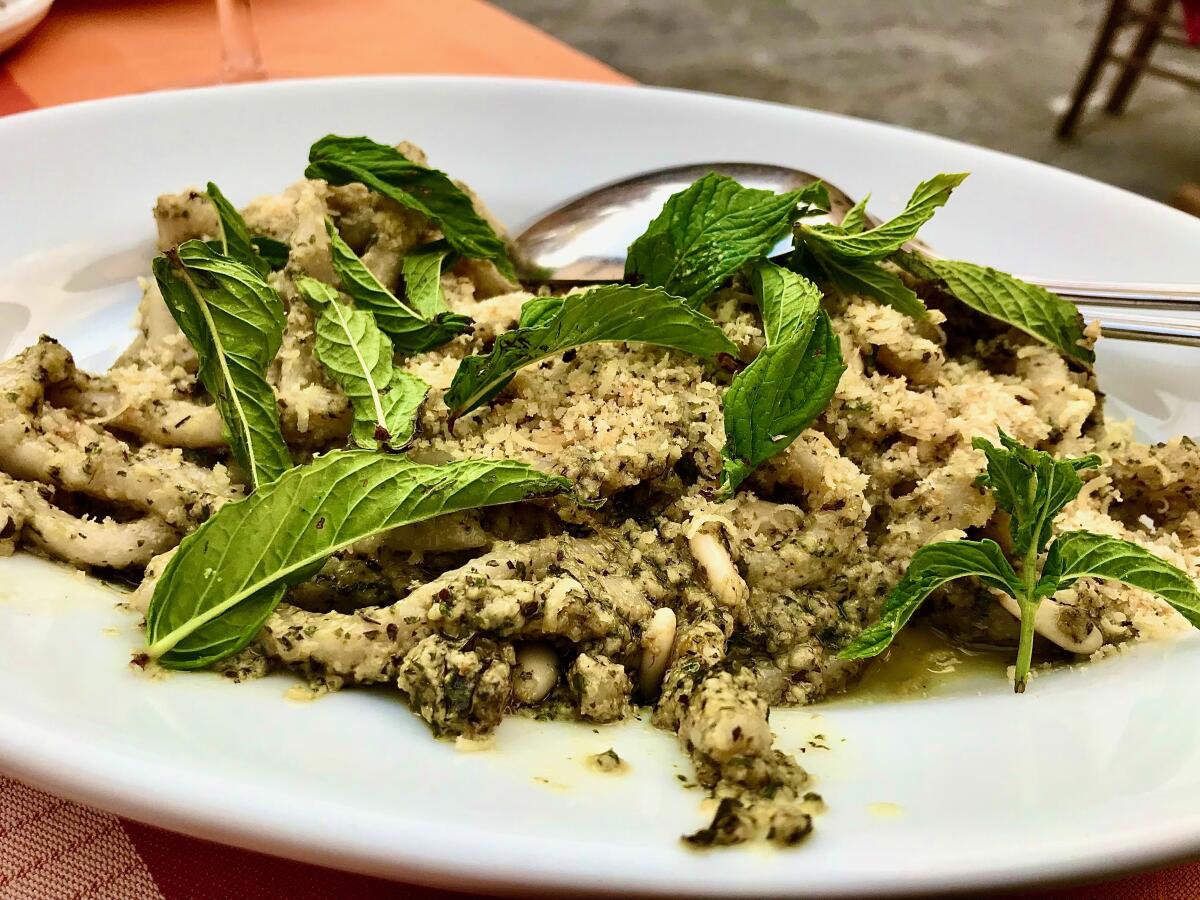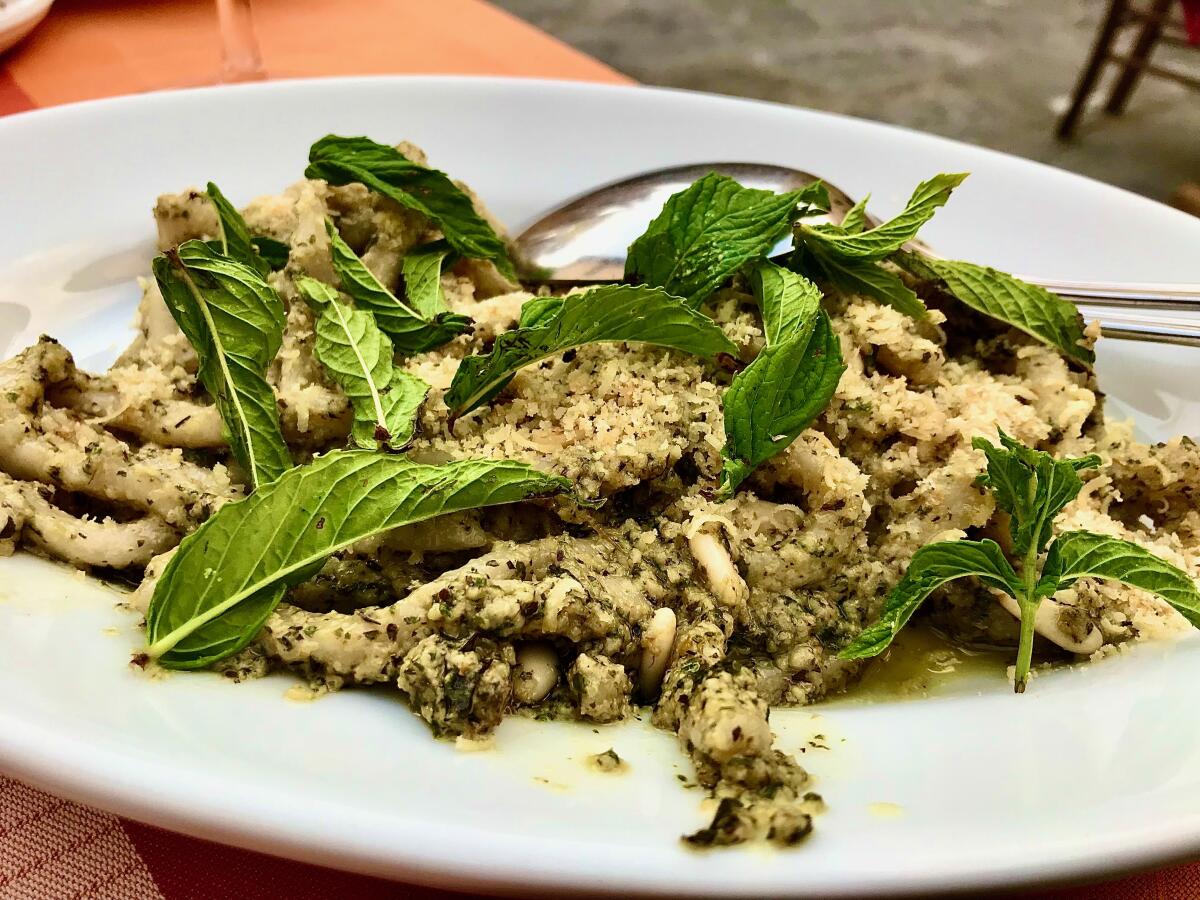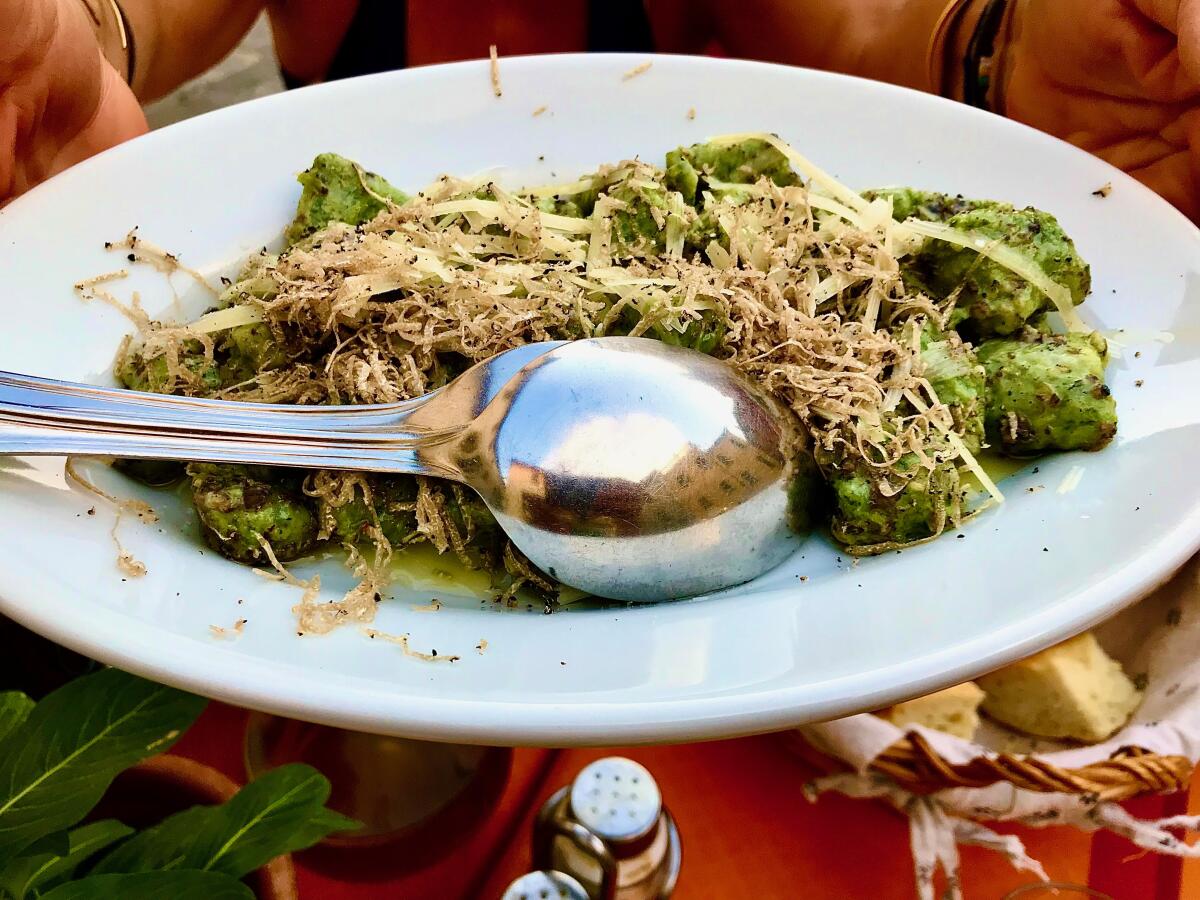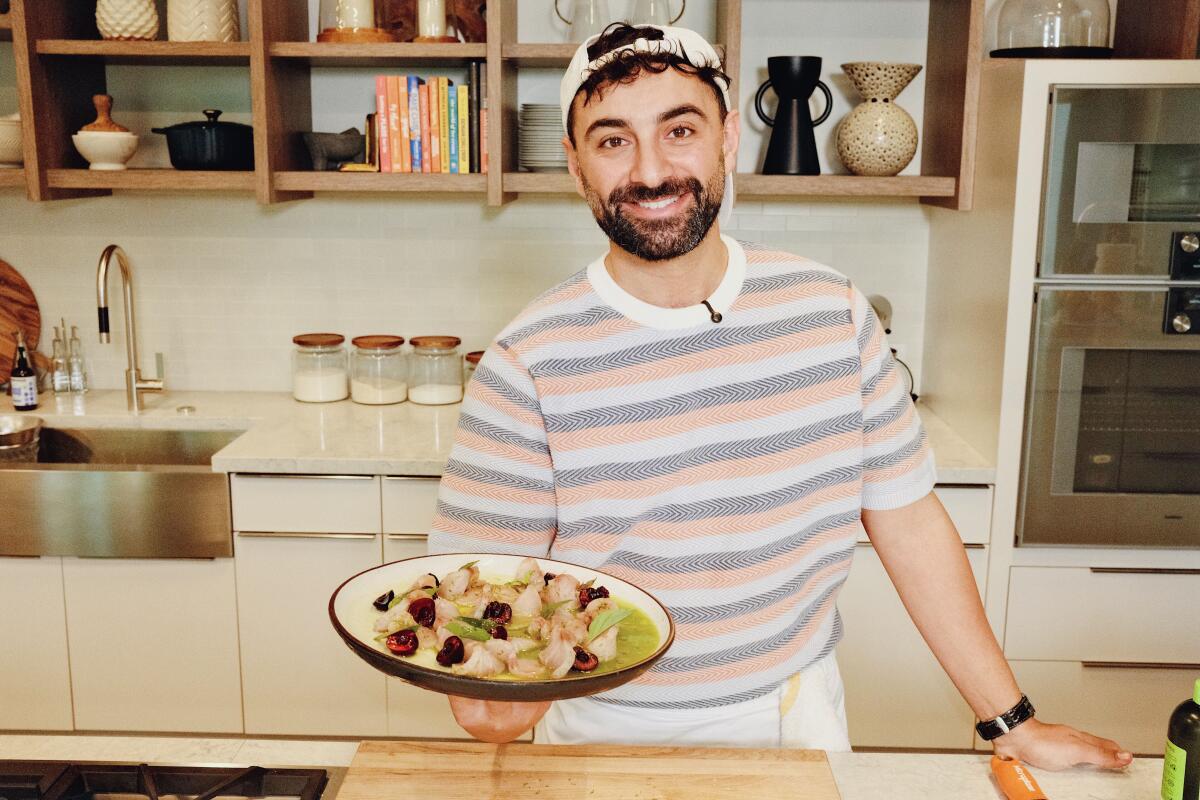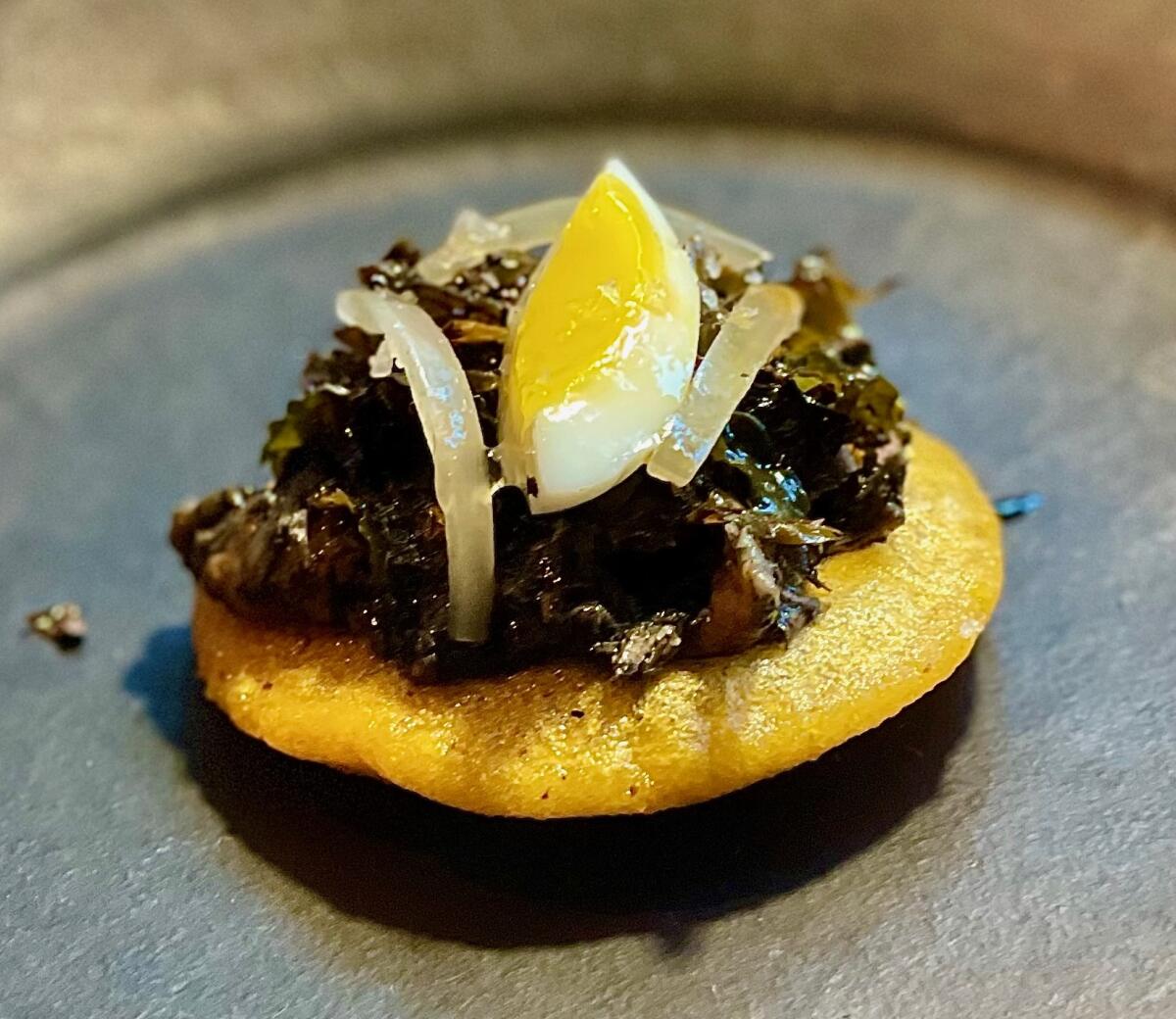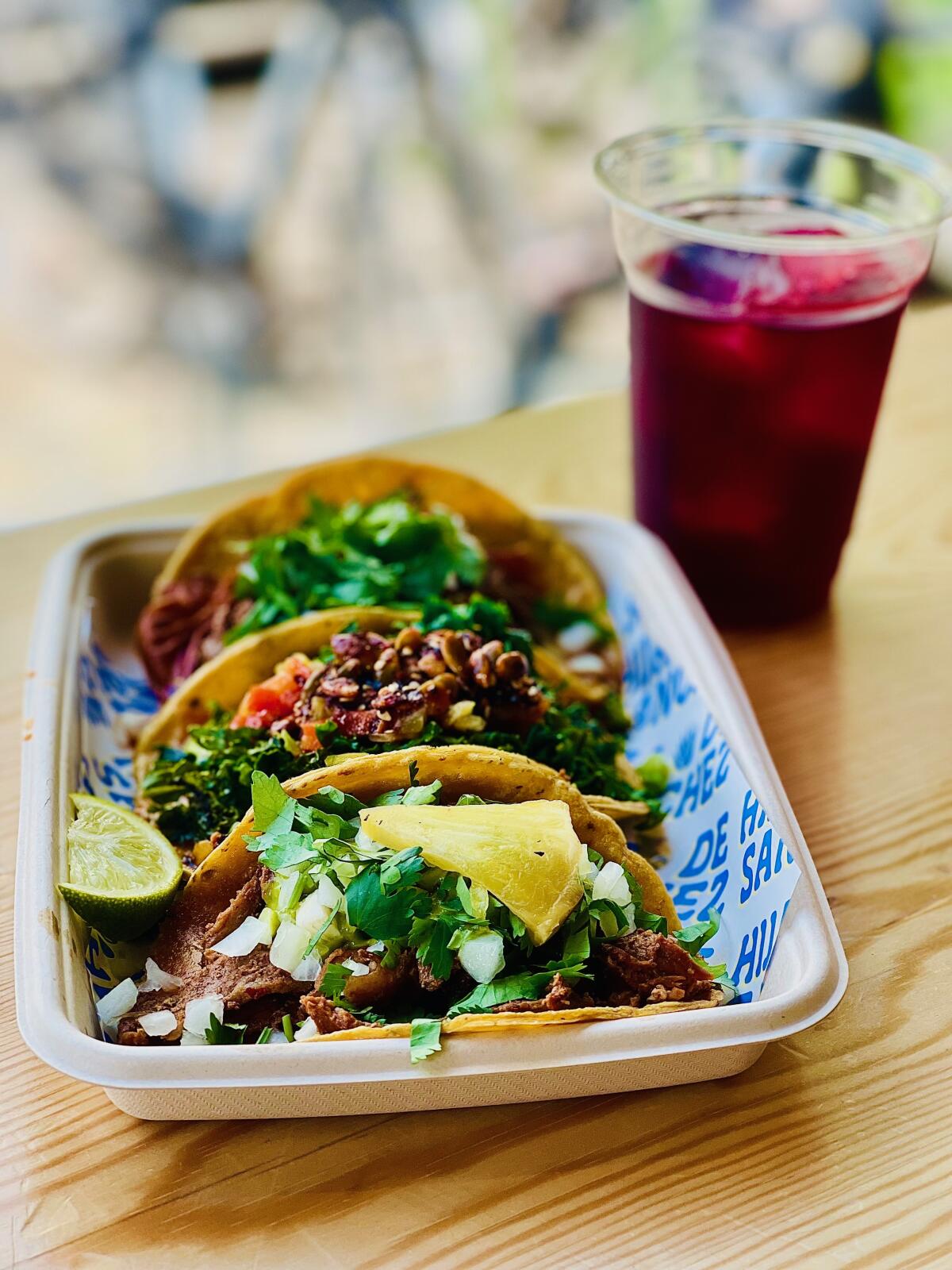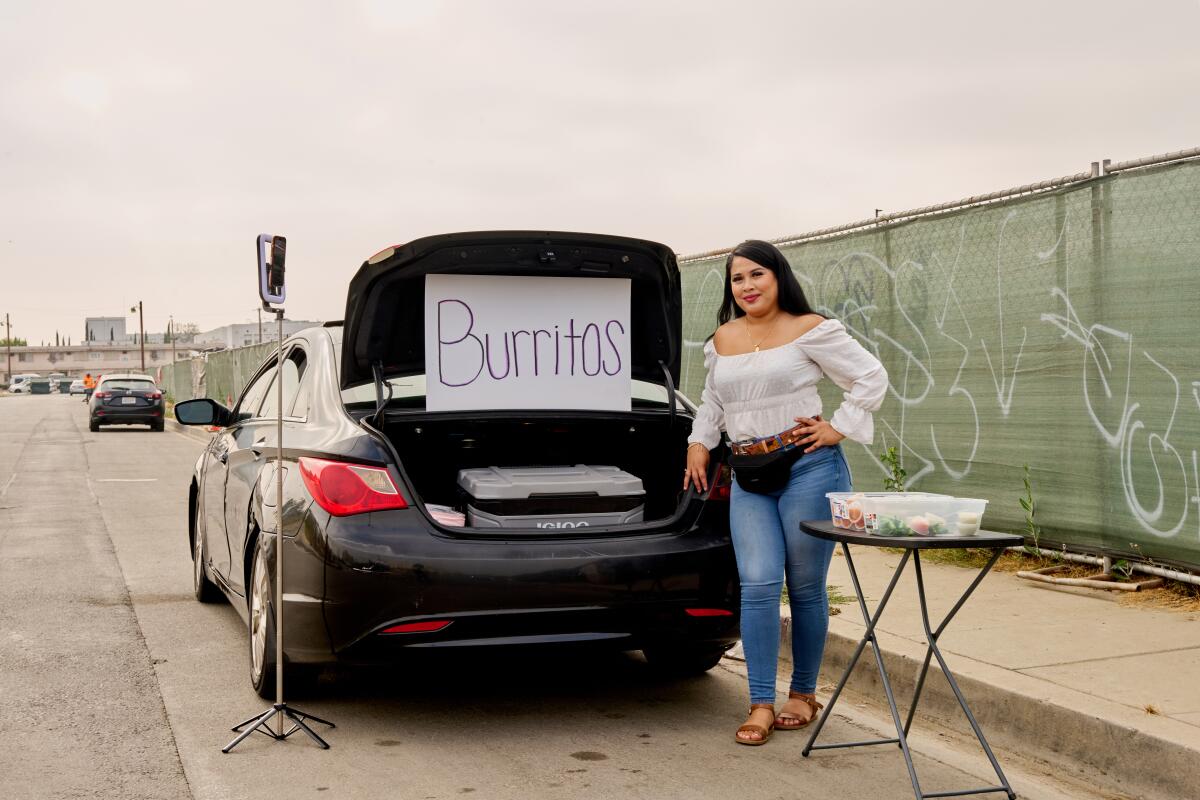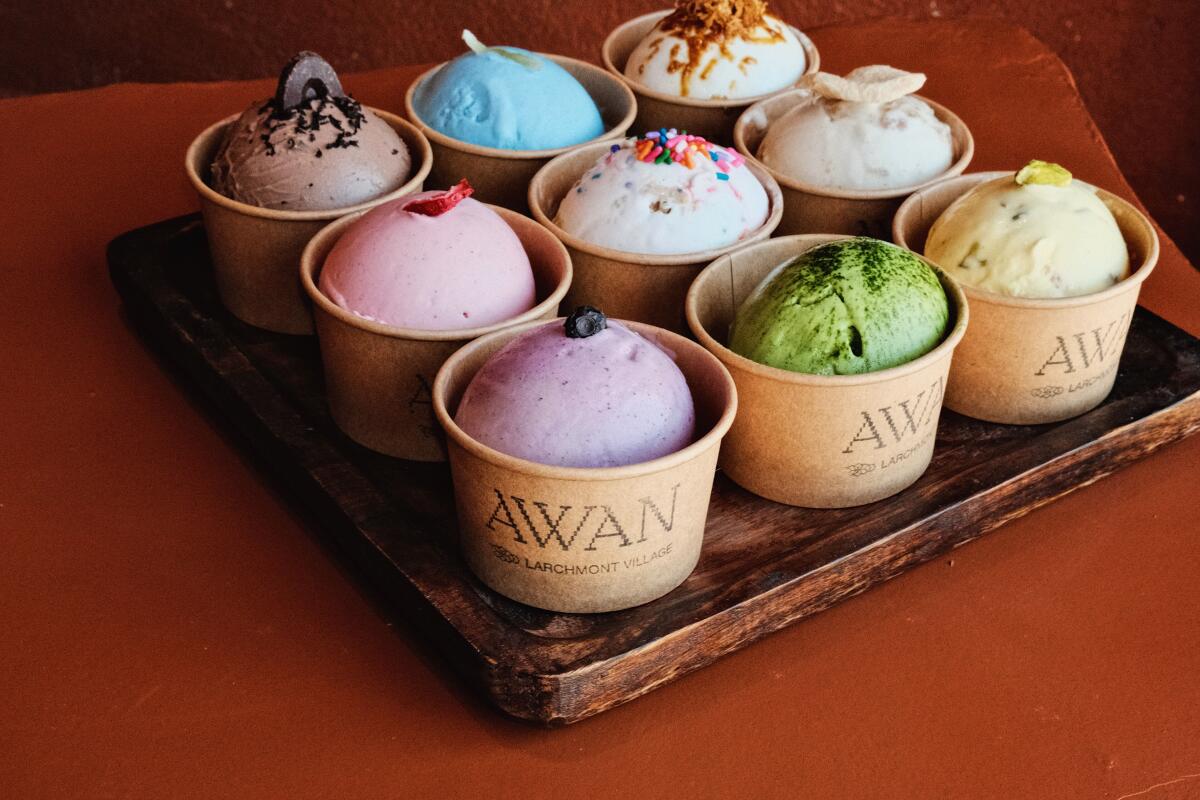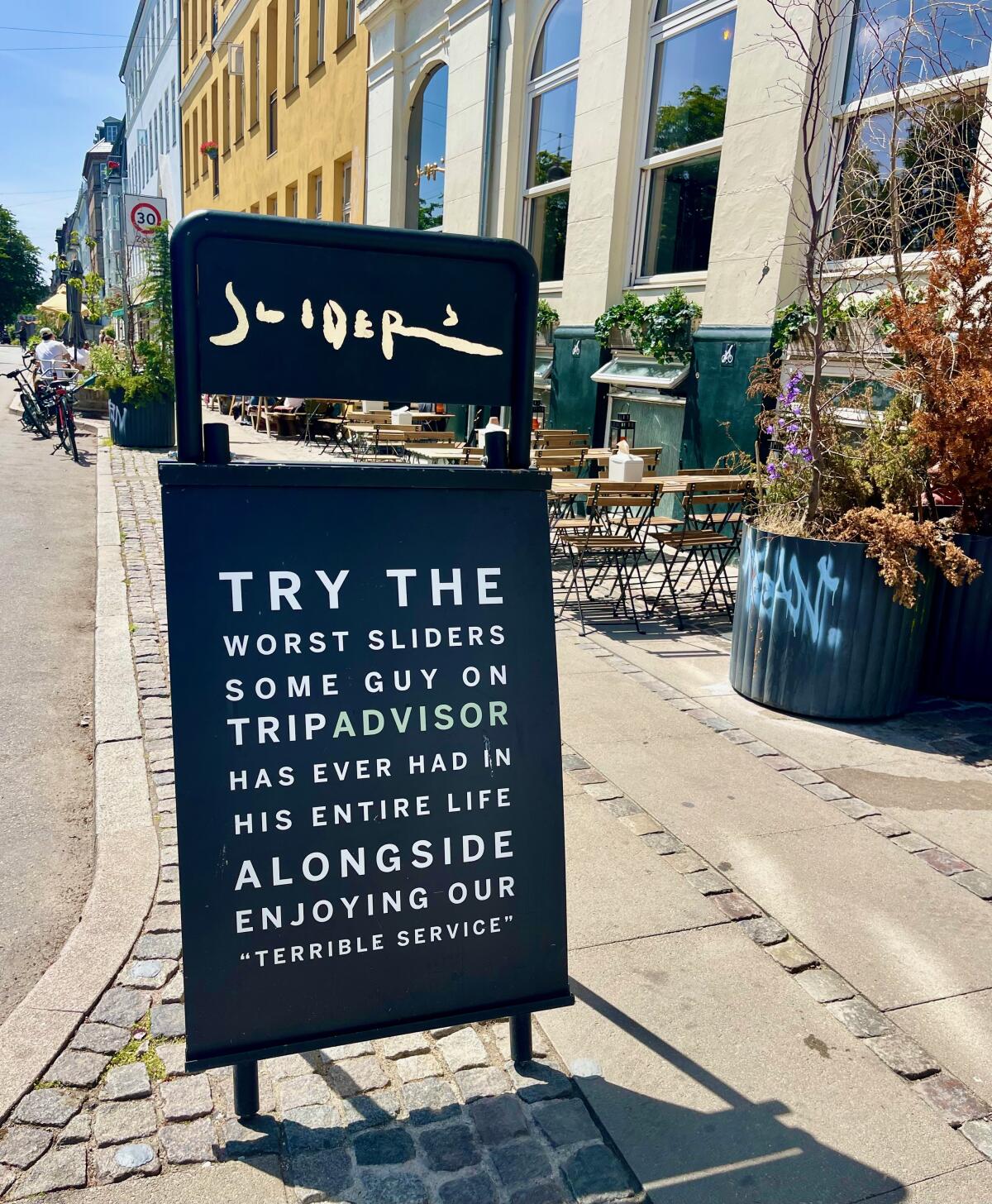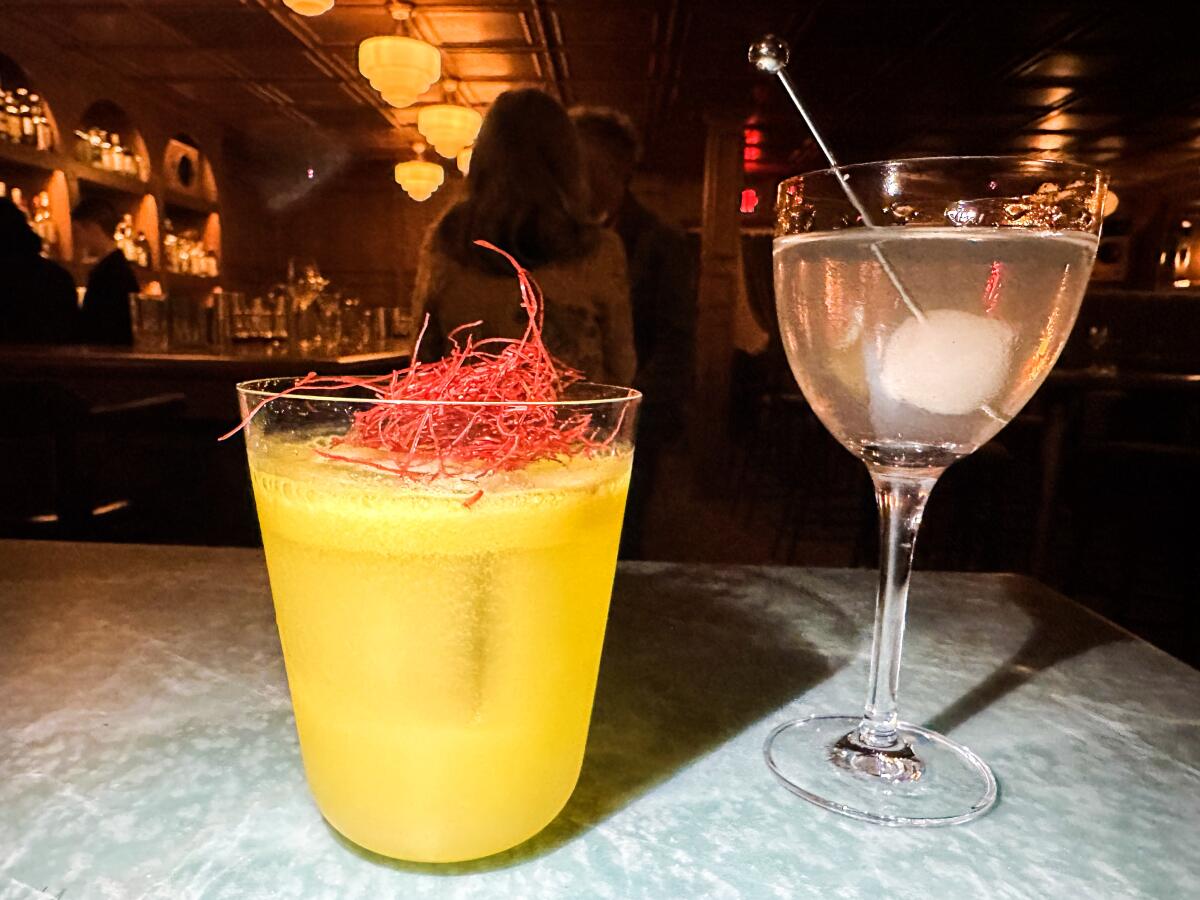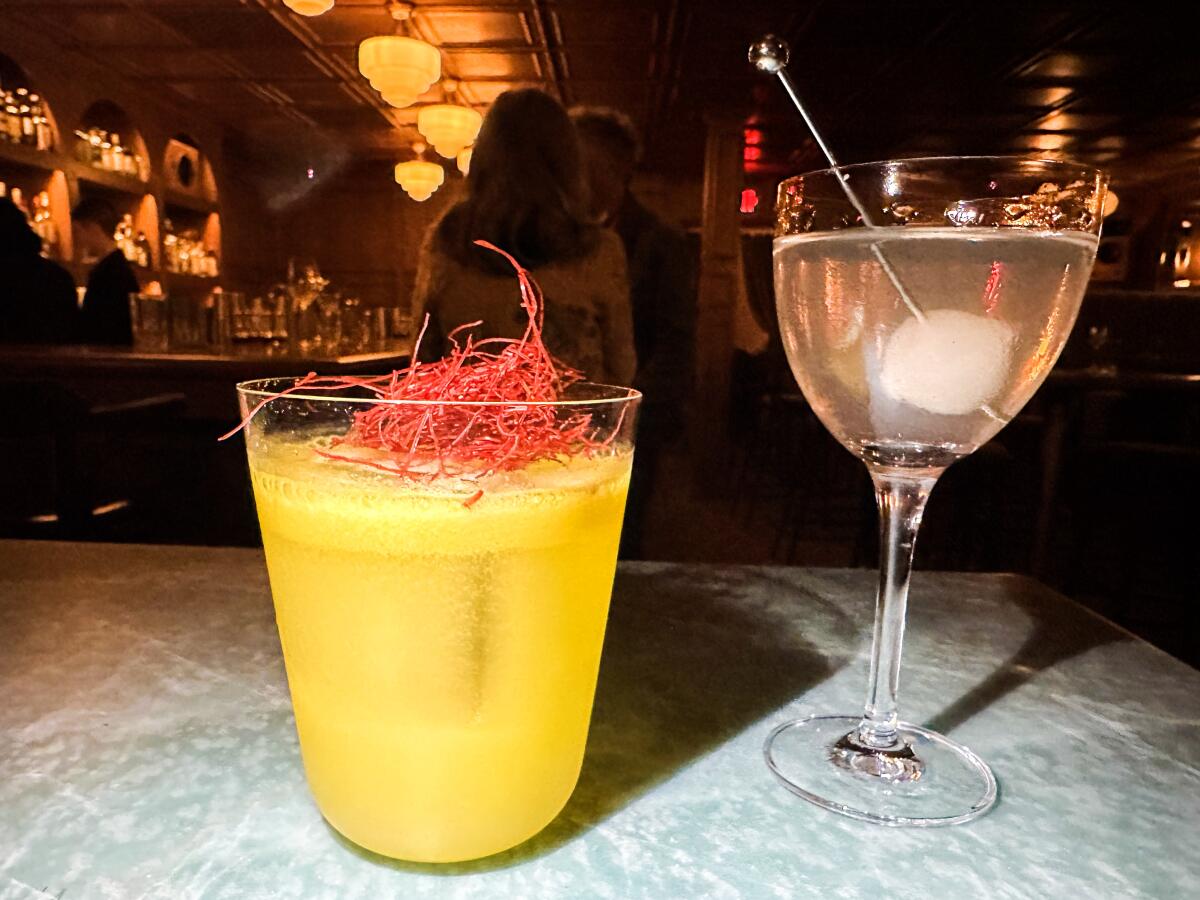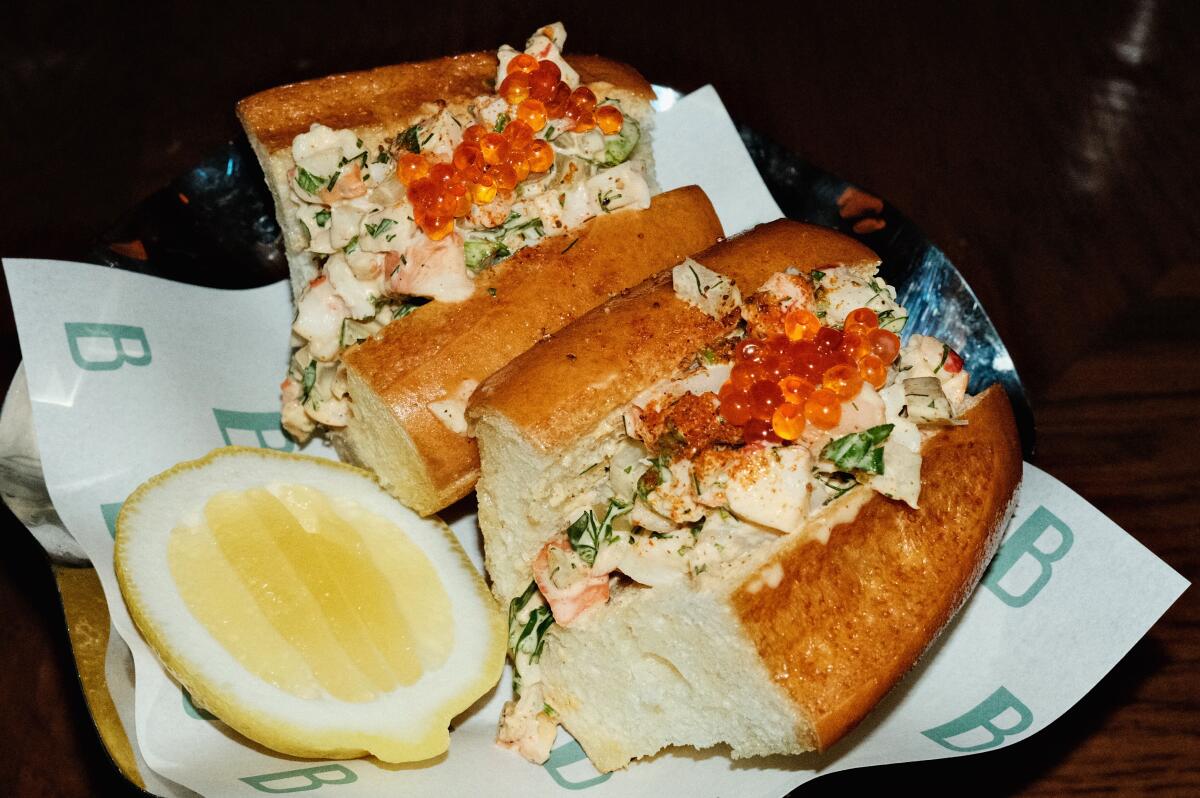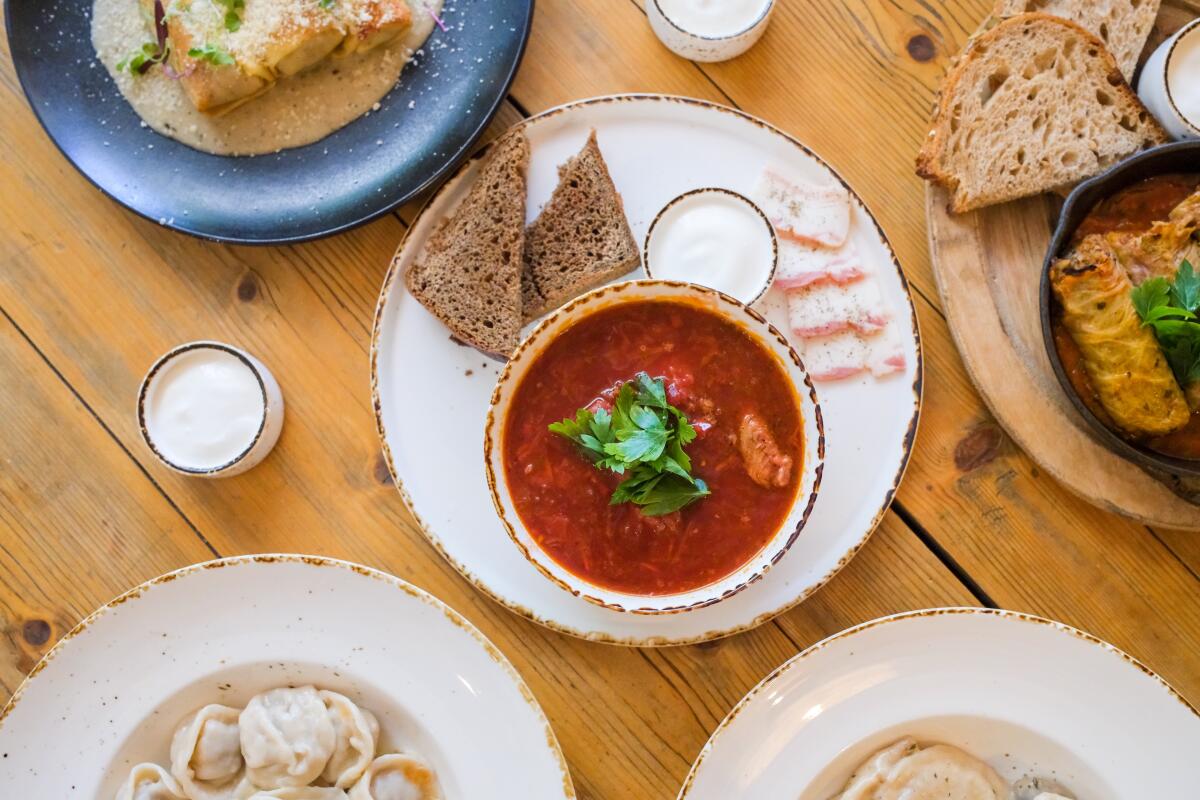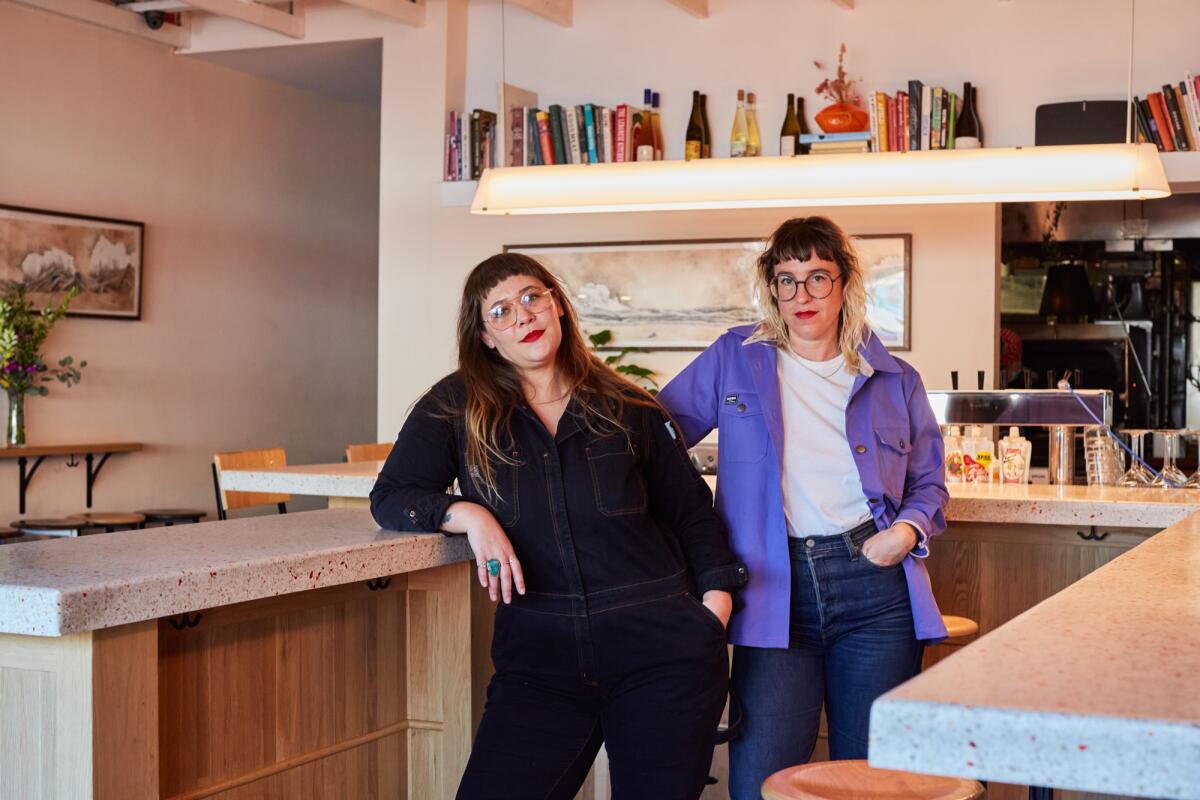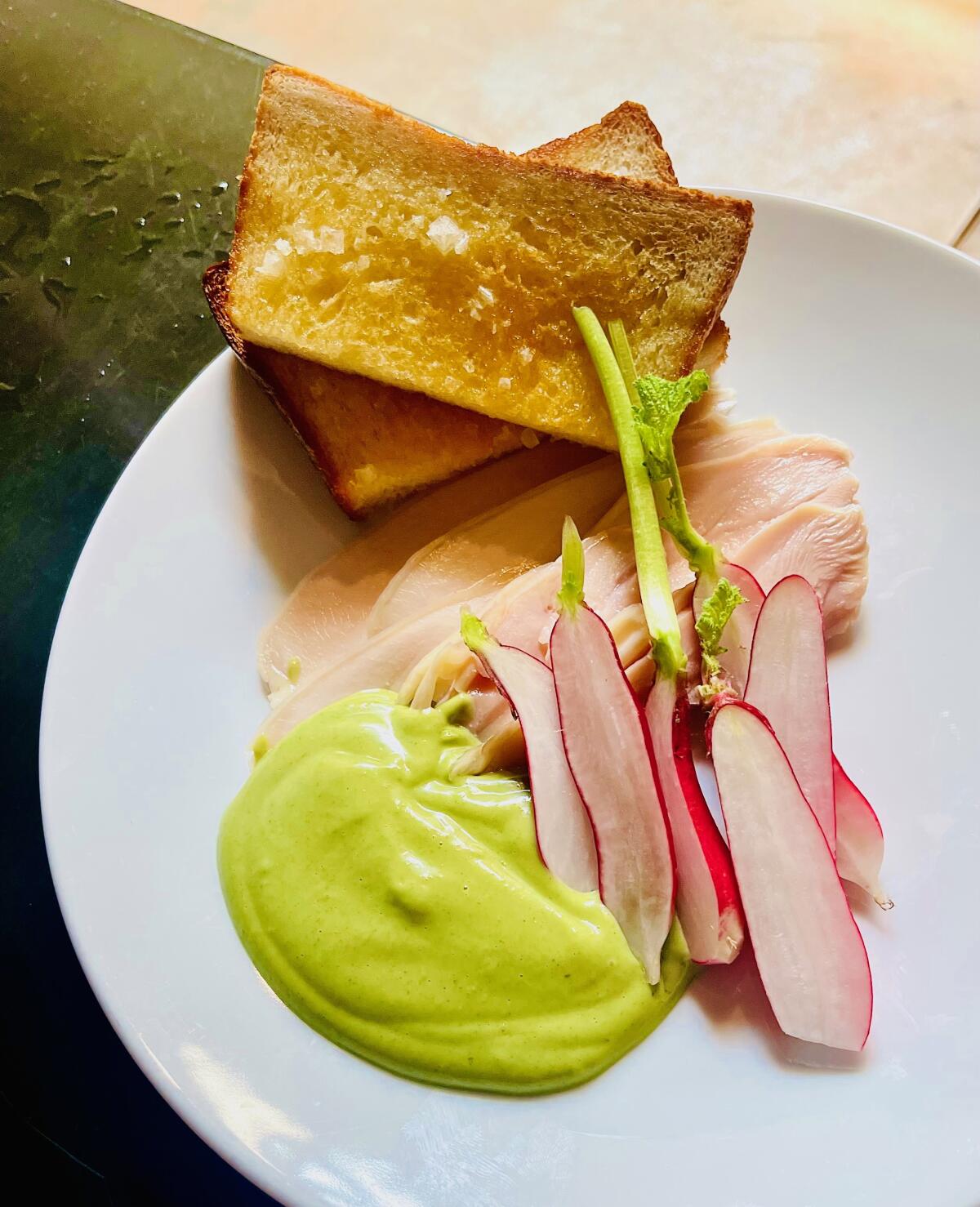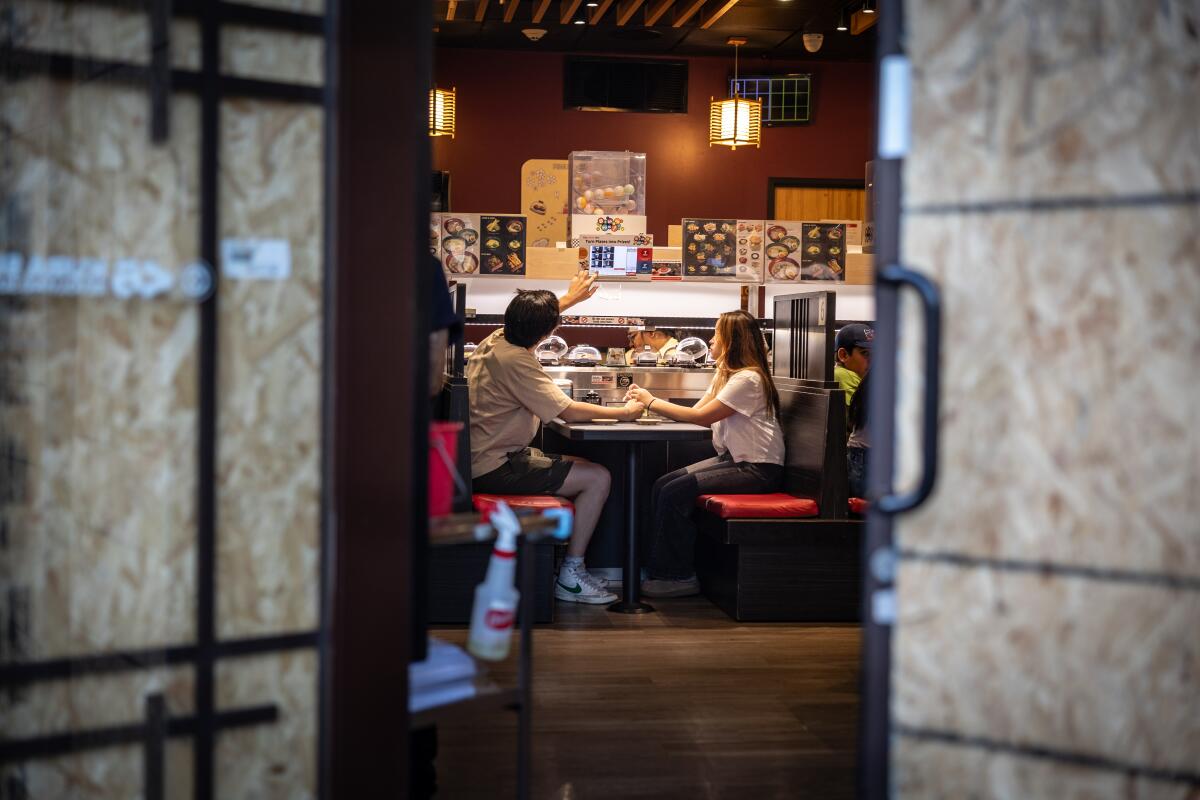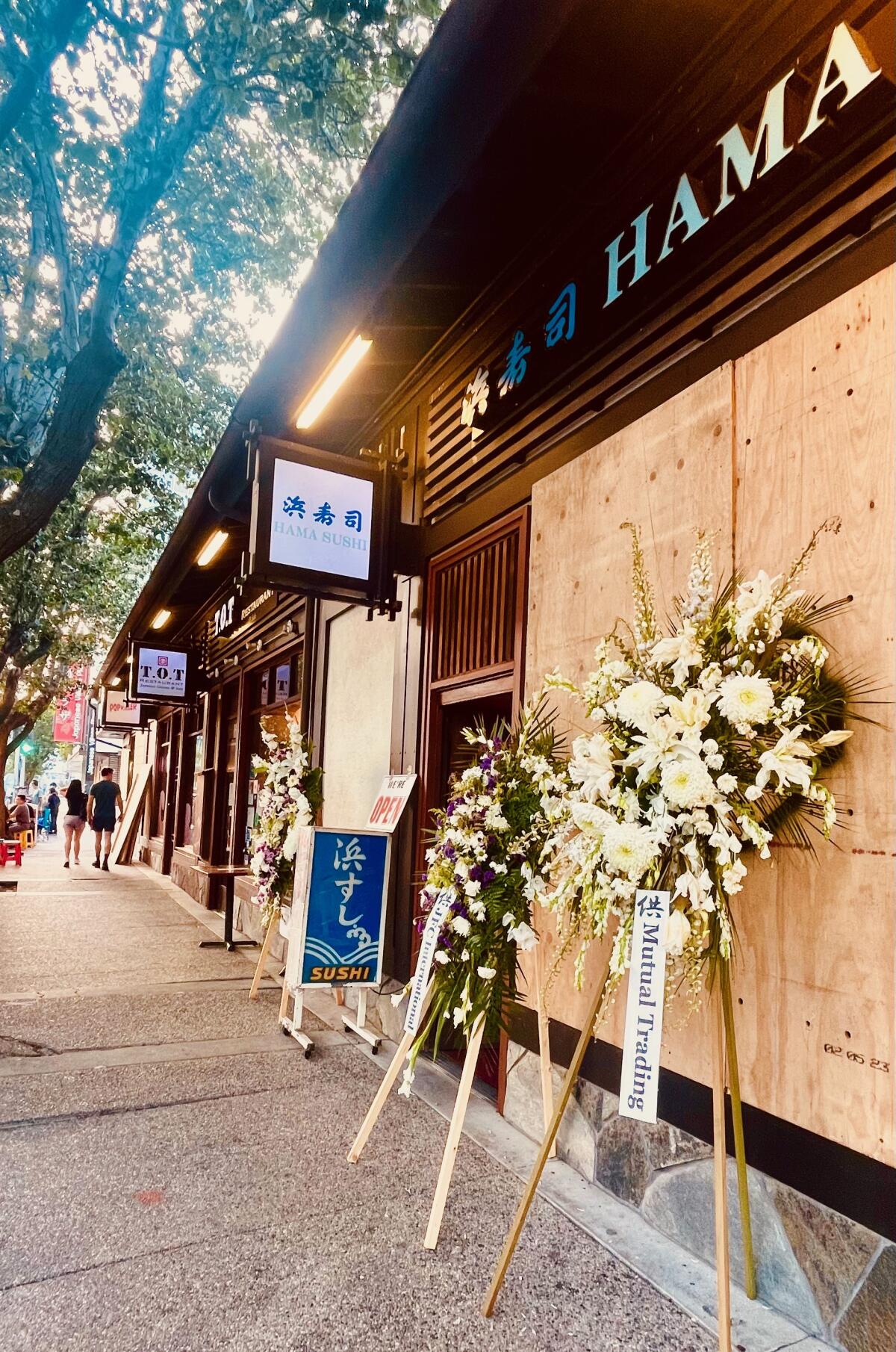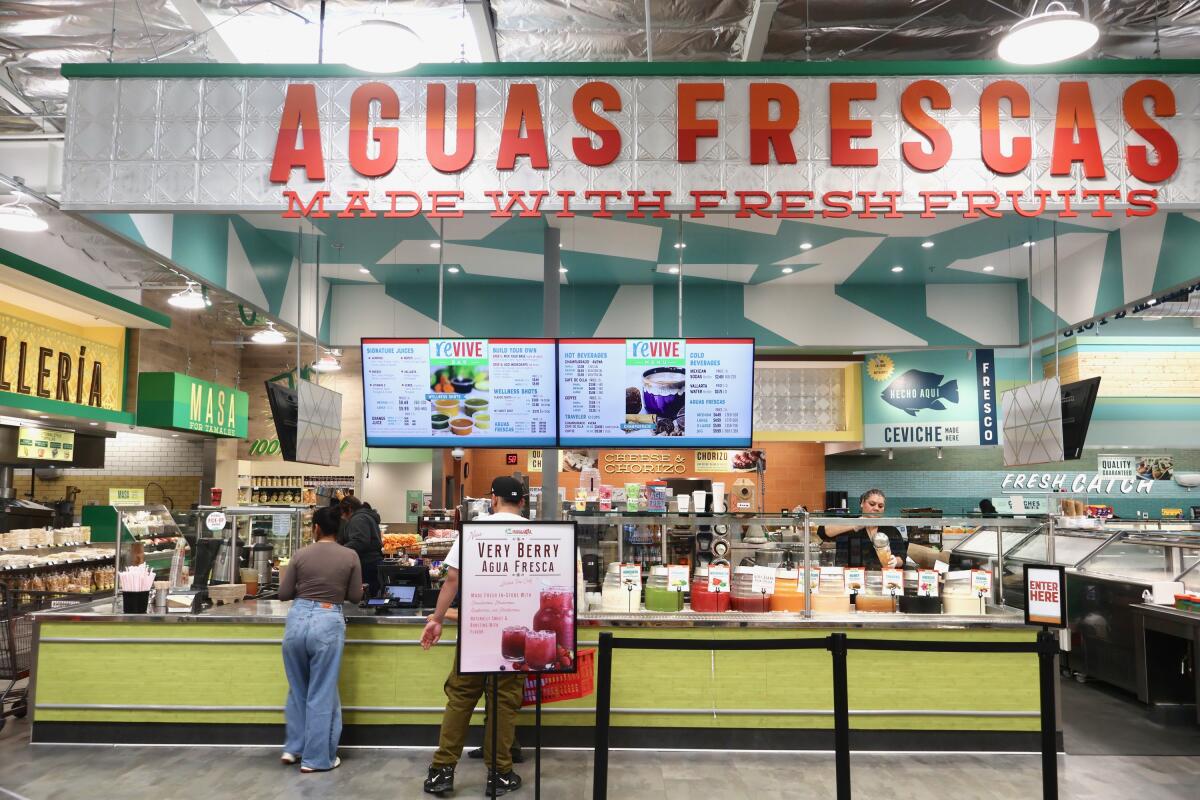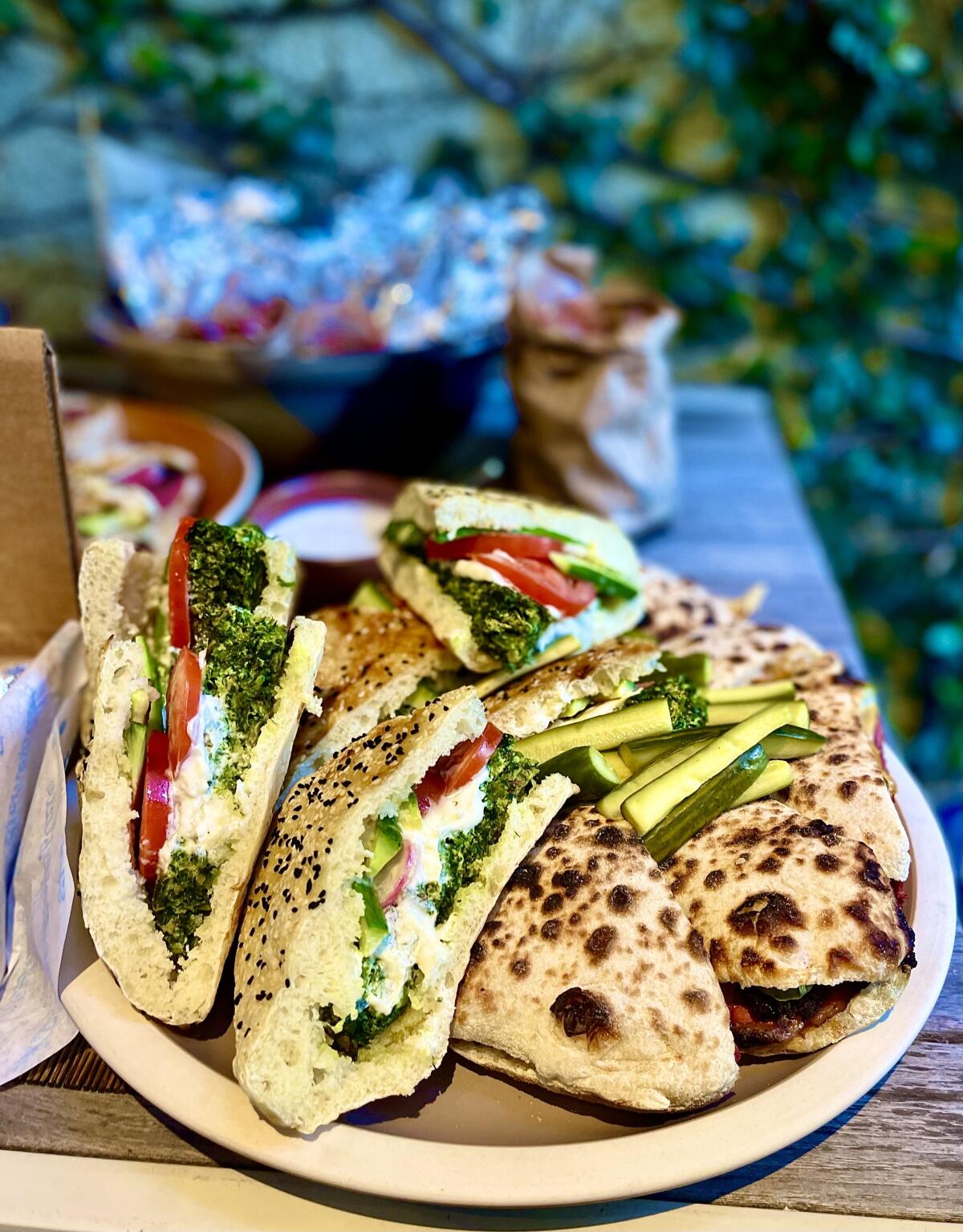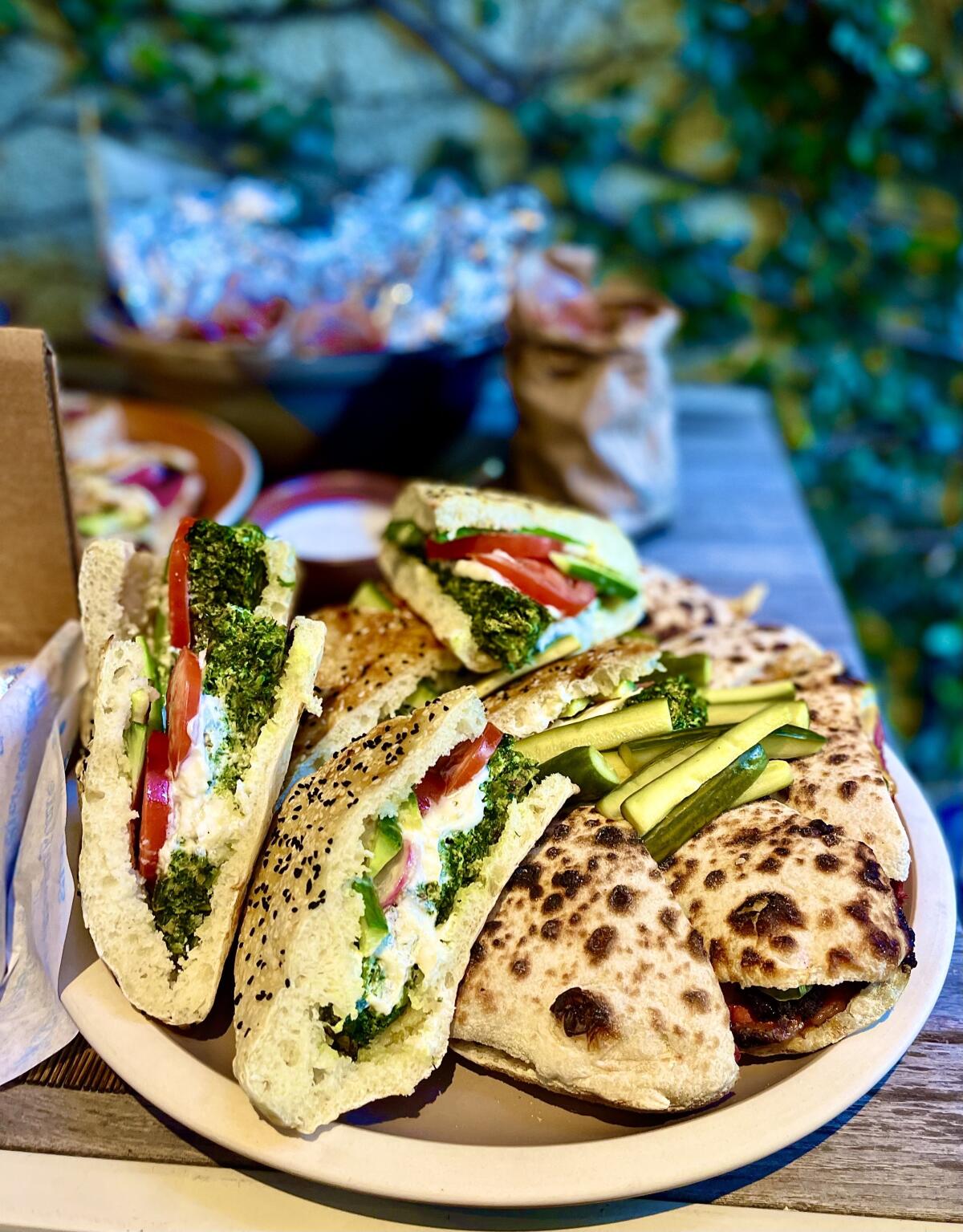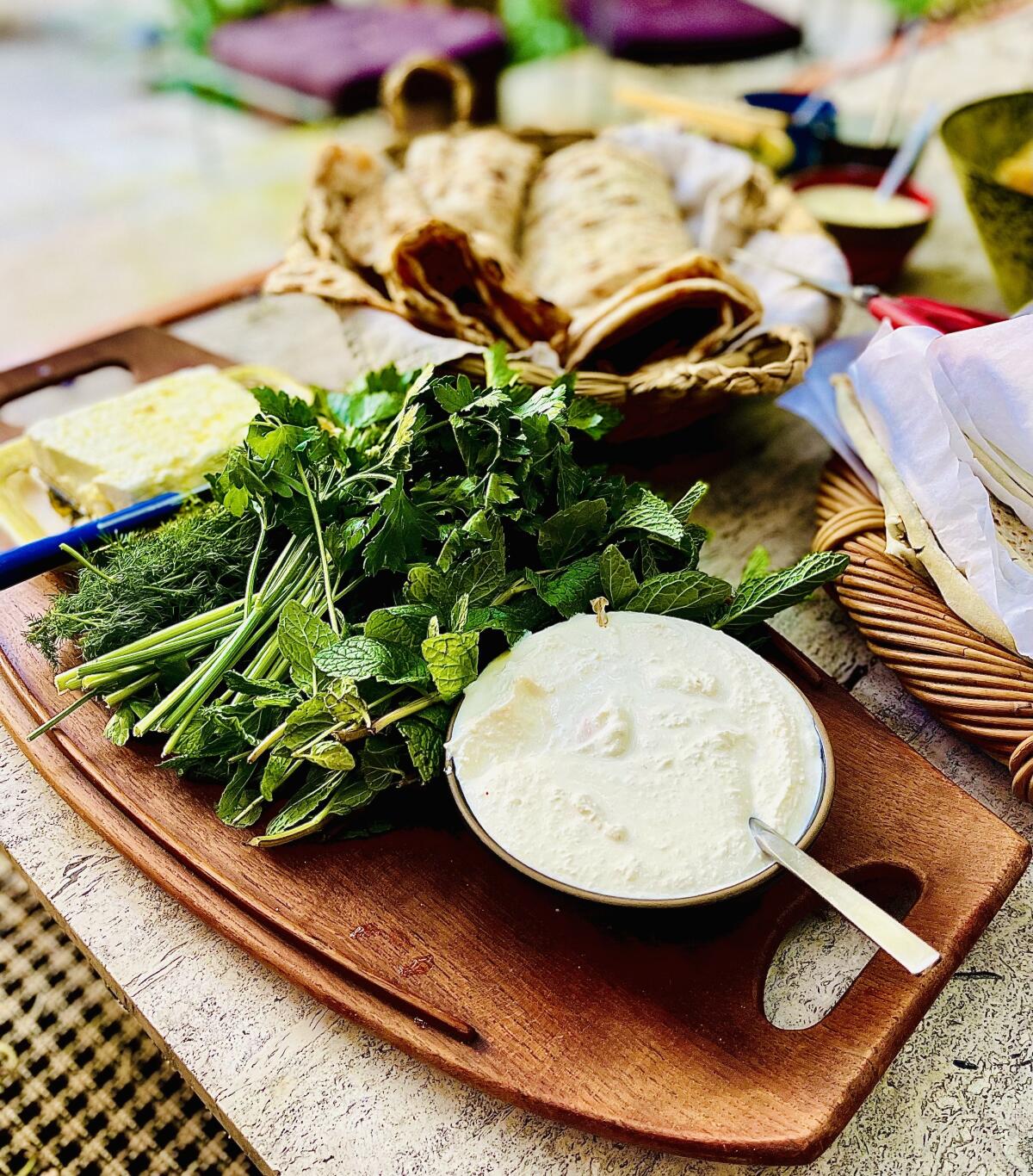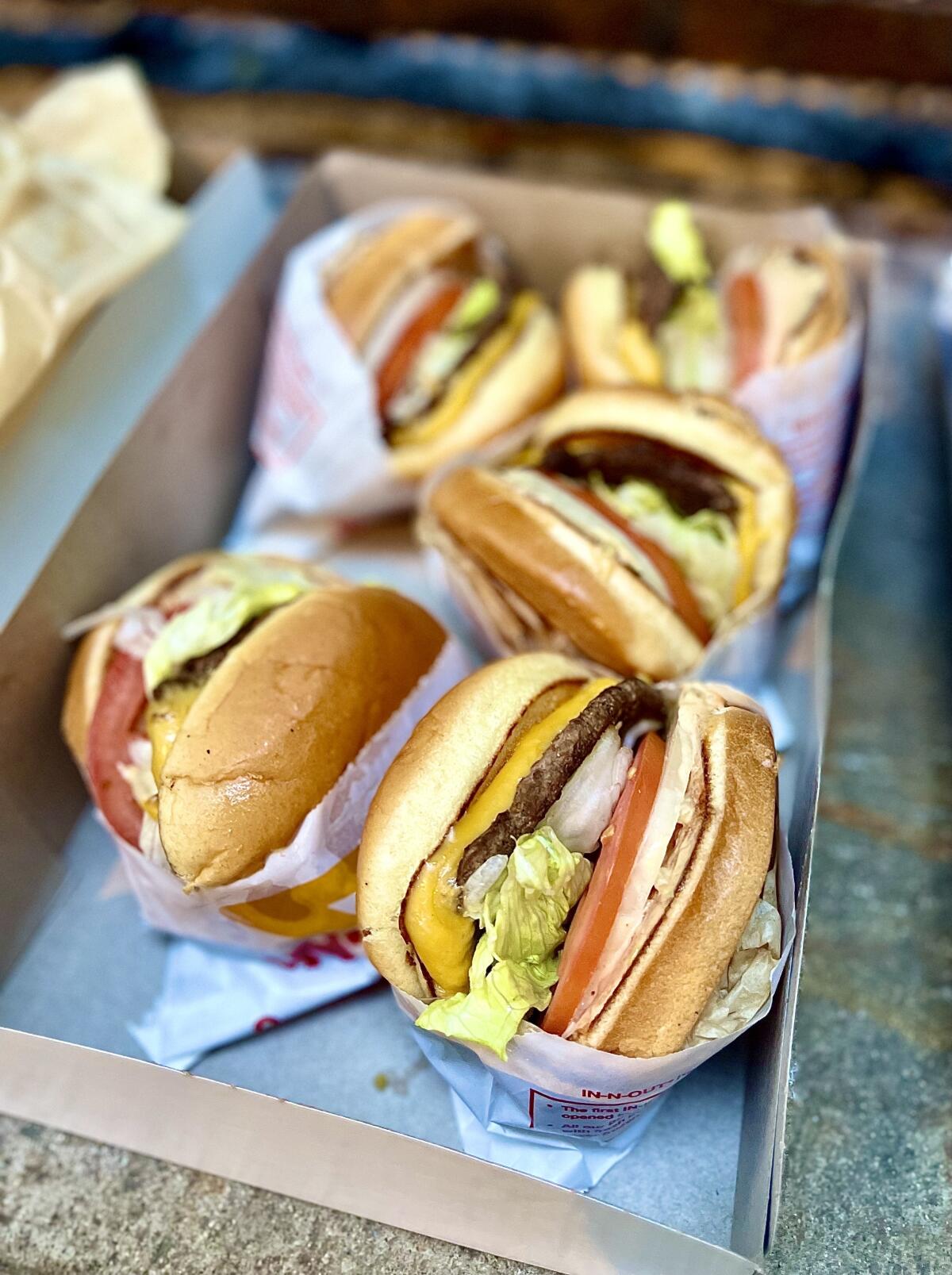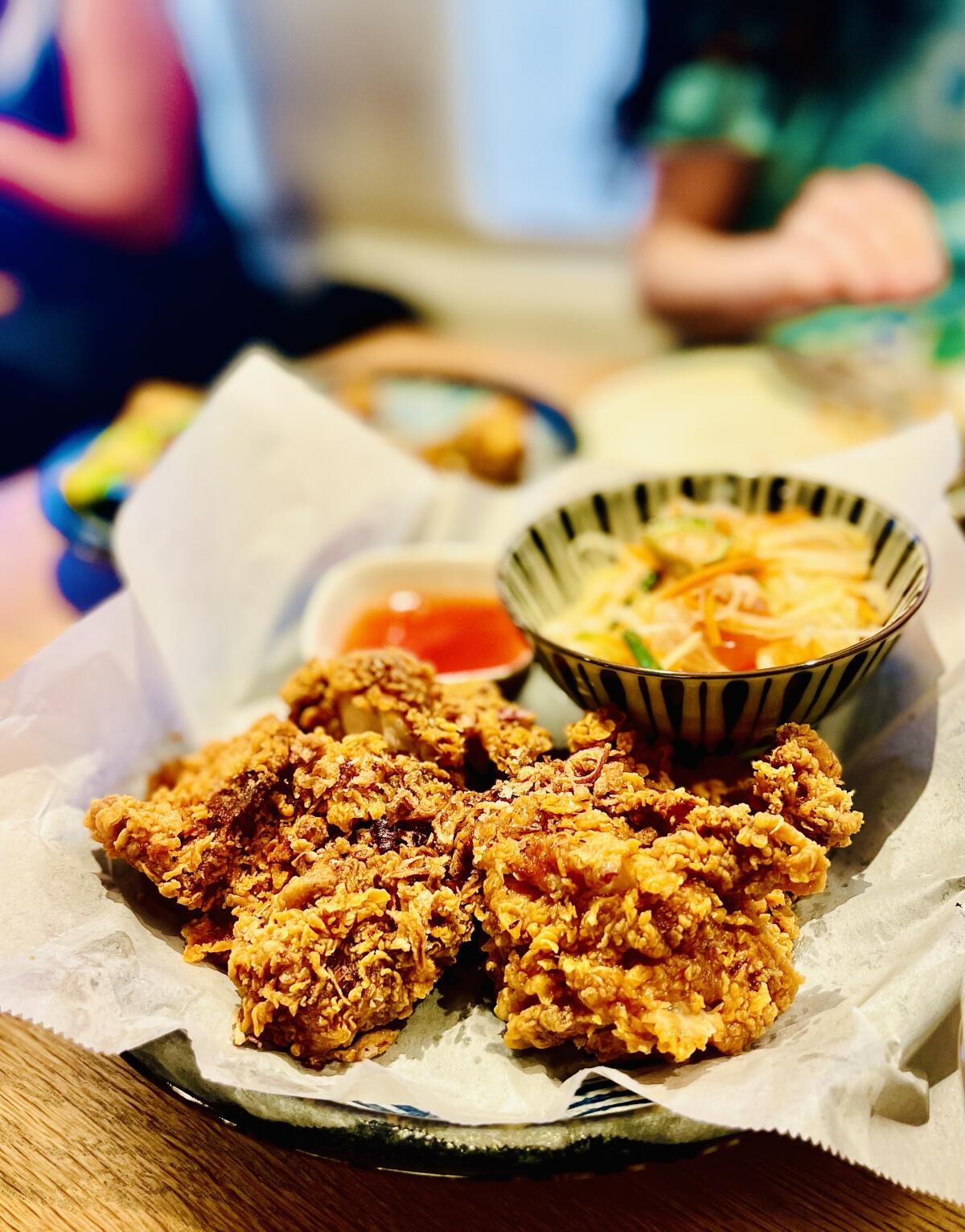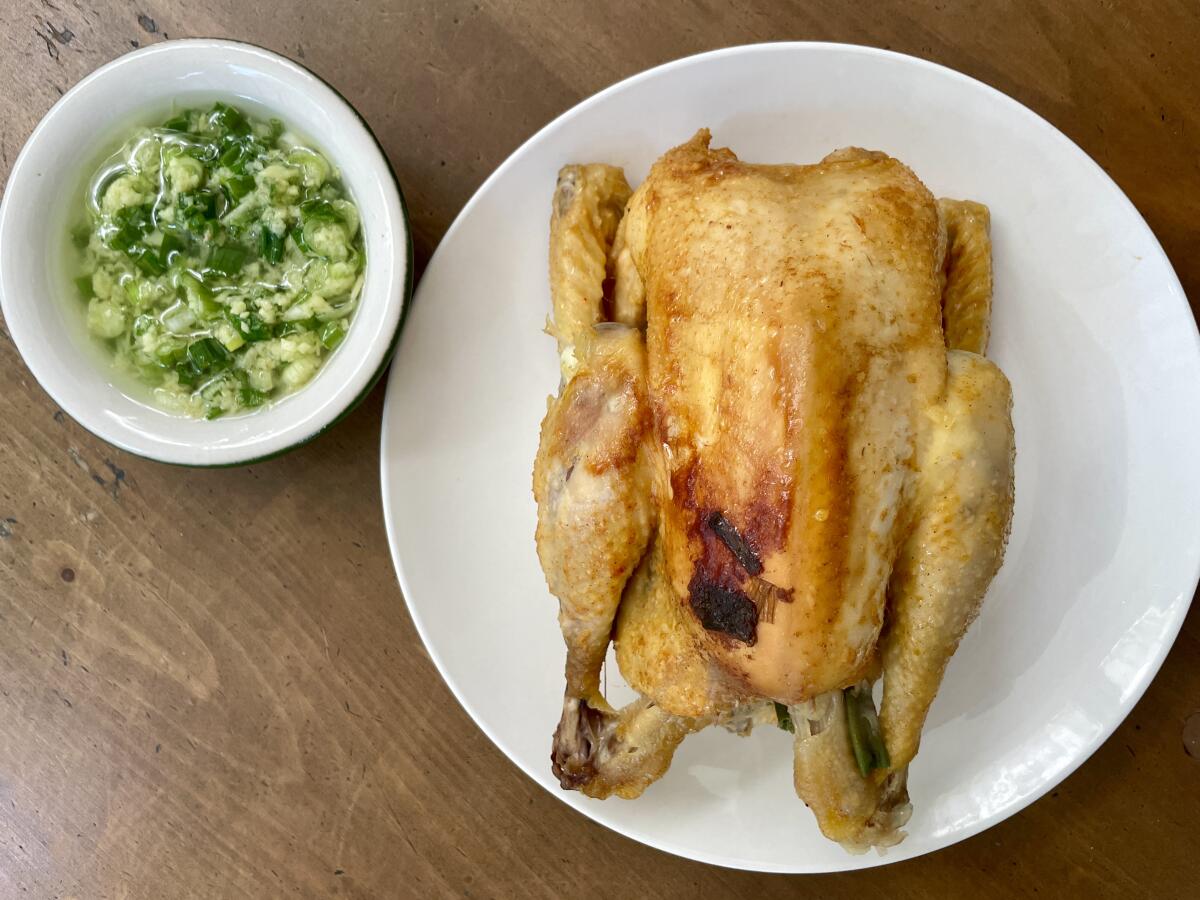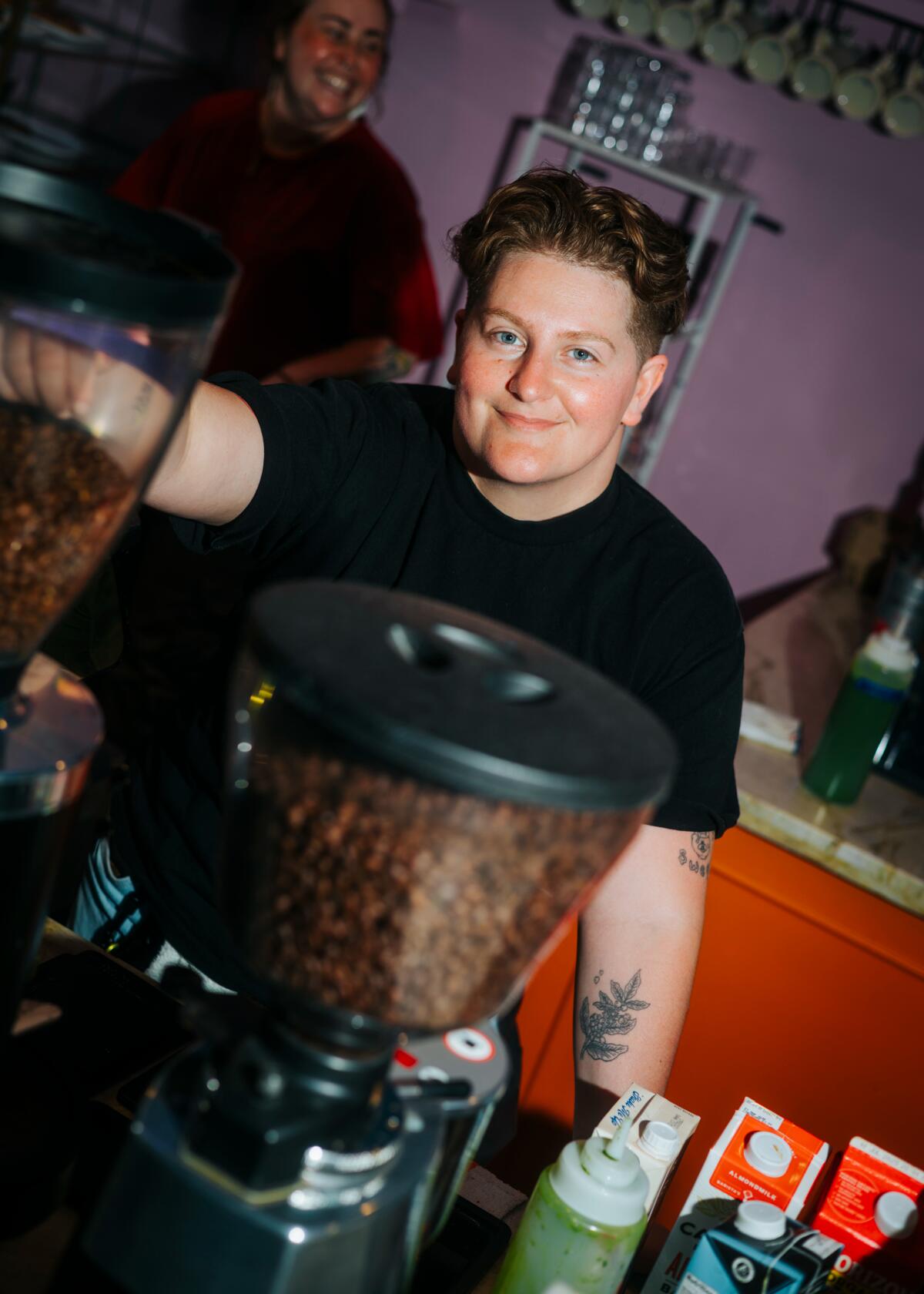The new dining spot to show out-of-town guests why we love L.A.
A first taste of L.A.’s new Maydan Market. Plus, eating in this town for $50 or less, a cookbook of gravestone recipes, allegations of racial discrimination at a popular L.A. cafe … and how Diane Keaton liked to drink her favorite wine. I’m Laurie Ochoa, general manager of L.A. Times Food, with this week’s Tasting Notes.
Market of dreams
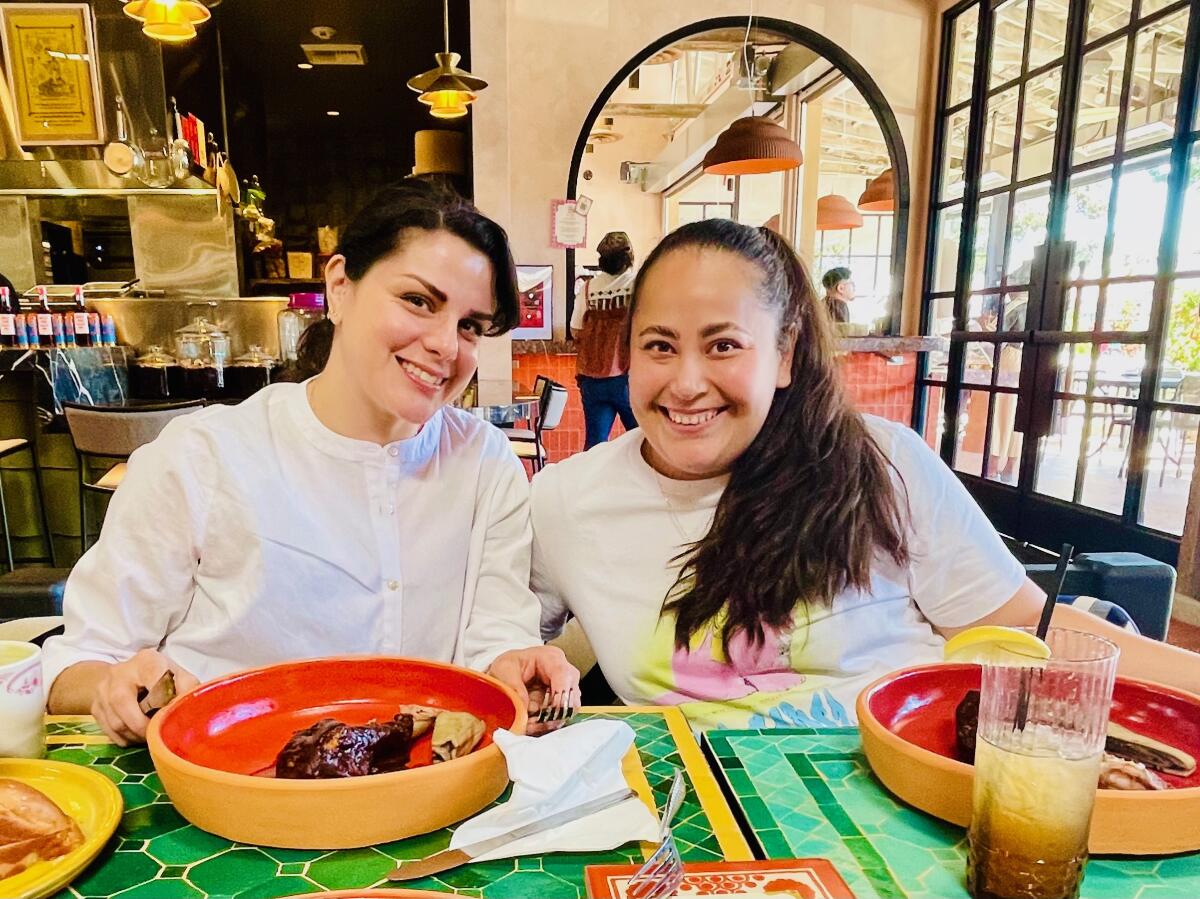
Chefs Rosio Sanchez, left, and Laura Flores Correa of Copenhagen’s Sanchez and Hija de Sanchez, sample mole-sauced turkey legs from Lugya’h at Maydan Market.
(Laurie Ochoa / Los Angeles Times)
Many of us have favorite places to take out-of-town guests — restaurants, hiking trails and idiosyncratic spots like the recently reopened Museum of Jurassic Technology that show our friends and family why we love L.A.
For years, I’ve brought friends to Mercado la Paloma, the food hall and cultural center that is home to Gilberto Cetina‘s Holbox, the seafood counter that was our L.A. Times Restaurant of the Year in 2023 and last year was awarded a Michelin star. These days, there’s always a line for Cetina’s exquisite seafood plates, including his octopus taco with squid-ink-stained sofrito. While one person in your group waits to order at Holbox, you can find many other things to bring to your table at the mercado — unbeatable cochinita pibil and more Yucatecan dishes (try the papadzules or a refreshing agua de chaya) from Chichén Itzá, founded by Cetina’s father Gilberto Sr.; Oaxacan nieves or ice cream flavored with mamey, tuna (cactus fruit) or especially leche quemada (burnt milk) from OaxaCalifornia; and Fátima Juárez‘s gorgeous quesadilla de flor, with orange squash blossom petals spilling out of the blue corn tortilla like sunshine at her masa-focused restaurant Komal (one of Bill Addison’s picks on his 101 Best California Restaurants list).
This week, however, I tried a new place when Rosio Sanchez, the Copenhagen-based chef I wrote about in this newsletter a few months ago, said she was coming to L.A. for the Chef Assembly conference and two collaborations, one that took place Wednesday with Jordan Kahn at Meteora and another that is happening all day Sunday at Enrique Olvera and chef Chuy Cervantes’ downtown taco spot Ditroit with Yia Vang of Minneapolis’ Hmong restaurant Vinai. Sanchez wanted to meet someplace for lunch, but had just tried Komal at the Mercado la Paloma and had even been to Thai Taco Tuesday at Anajak Thai, one of my other dependable suggestions for wowing visitors. I had to change my usual game plan.
-
Share via
Chef-founder Rose Previte details the bevy of vendors and dishes at West Adams’ cross-cultural new food hall.
Fortunately, our intrepid woman about town Stephanie Breijo had been telling me all about Maydan Market in anticipation of its recent opening in L.A.’s West Adams neighborhood, across the street from a branch of chef Kat Turner‘s Highly Likely. In addition, Breijo made a hunger-inducing video showing off the live-fire-based restaurants at the heart of the market founded by Rose Previte, whose Maydan in Washington, D.C., is devoted to the cuisines of the Middle East and was among the Top 40 restaurants chosen in 2024 by the Washington Post’s recently unmasked critic Tom Sietsema.
Here in Los Angeles, Previte wanted to open a food hall centered on hearth cooking from different cultures. That not only means new branches of her Maydan restaurant and Compass Rose cafe, but Afro-Mexican Guerrerense cooking at Maléna from Tamales Elena founder Maria Elena Lorenzo; Yhing Yhang BBQ from Holy Basil chef Wedchayan “Deau” Arpapornnopparat, serving charcoal-grilled Thai chicken, seafood and duck, and a space for emerging chefs that is currently featuring Melnificent Wingz from Melissa “Chef Mel” Cottingham.
Most of the places so far don’t open until 5 p.m. — I spotted Arpapornnopparat prepping some fantastic-looking chile sauces for his dinnertime barbecue that I am eager to try. But lunch operations are slowly getting underway and on Thursday afternoon we were lucky to find Alfonso Martinez of Poncho’s Tlayudas fame at Lugya’h, his new post in the market. In addition to tlyaudas — which Addison, in his 2022 review of Poncho’s called one of his “this is the Los Angeles I love” dishes — Martinez is serving dishes from Oaxaca’s Sierra Norte at Lugya’h.
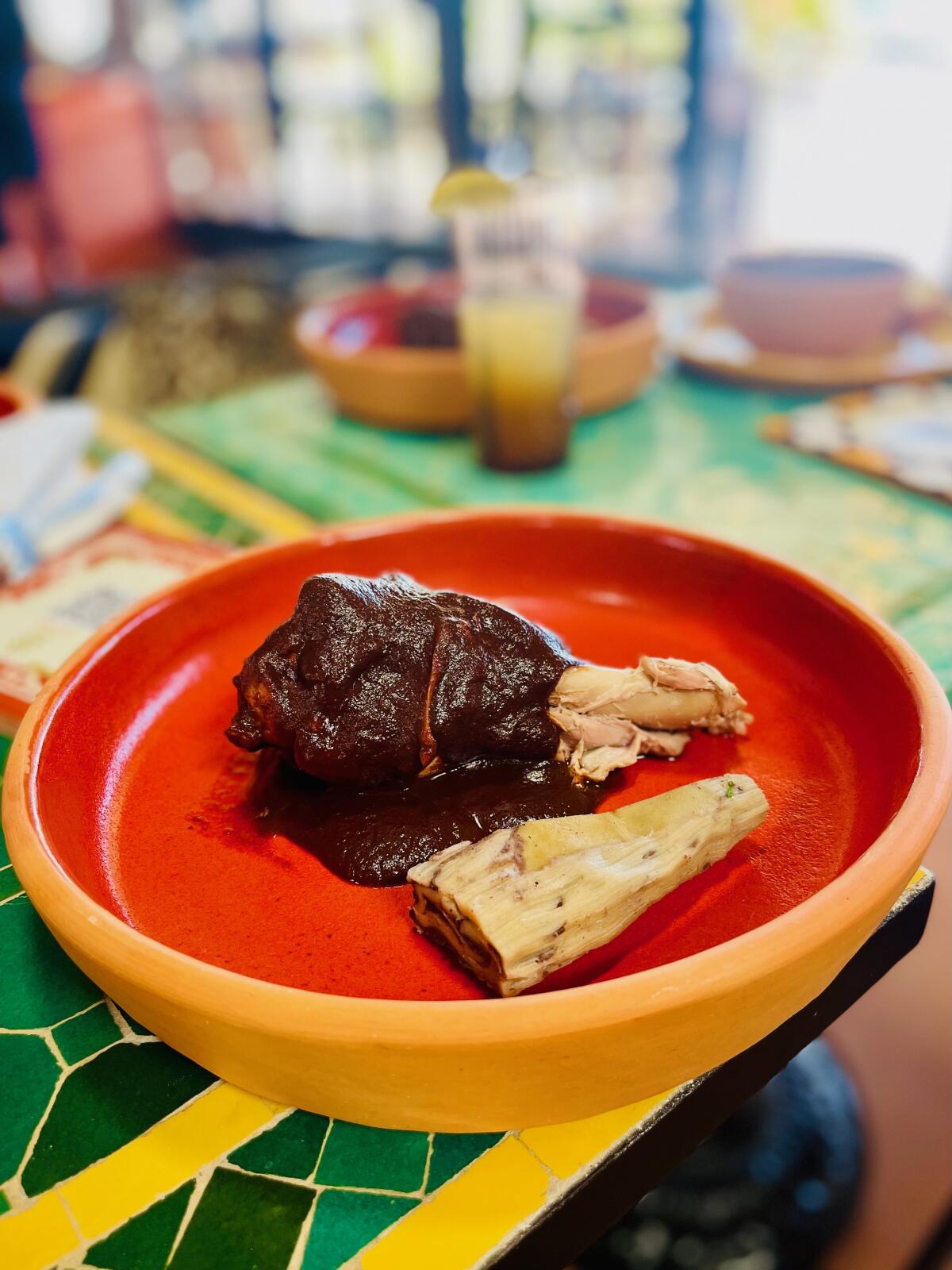
Mole-covered turkey leg with a black bean tamal from Alfonso Martinez’s Lugya’h at Maydan Market.
(Laurie Ochoa / Los Angeles Times)
With Sanchez and her chef Laura Flores Correa, best known as Laurita, I was able to try a turkey leg sauced in a dark, rich “mole de bejed” with a black bean tamal on the side. The meat was incredibly moist, perfect with the tamal. We also got bowls of foamy Mexican cacao-flavored atole, which came with brioche-like Oaxacan pan de yema.

A slice of tlayuda with chorizo, grilled tasajo and the blood sausage moronga from Lugya’h at L.A.’s Maydan Market.
(Laurie Ochoa / Los Angeles Times)
And even though the current plan is to serve tlyaudas only during dinner, we were able to try one with three meats: chorizo, beautifully charred on the edges from the fire; a slice of grilled tasajo, and a link of moronga, one of the best blood sausages I’ve ever eaten, from a recipe, as Addison writes, handed down as a wedding gift from the father of Martinez’s wife Odilia Romero. She was helping out at the market this week, though is anxious to get back to her work advocating for Indigenous migrants in L.A. That might not be easy once word spreads about the deliciousness of Lugya’h’s food.
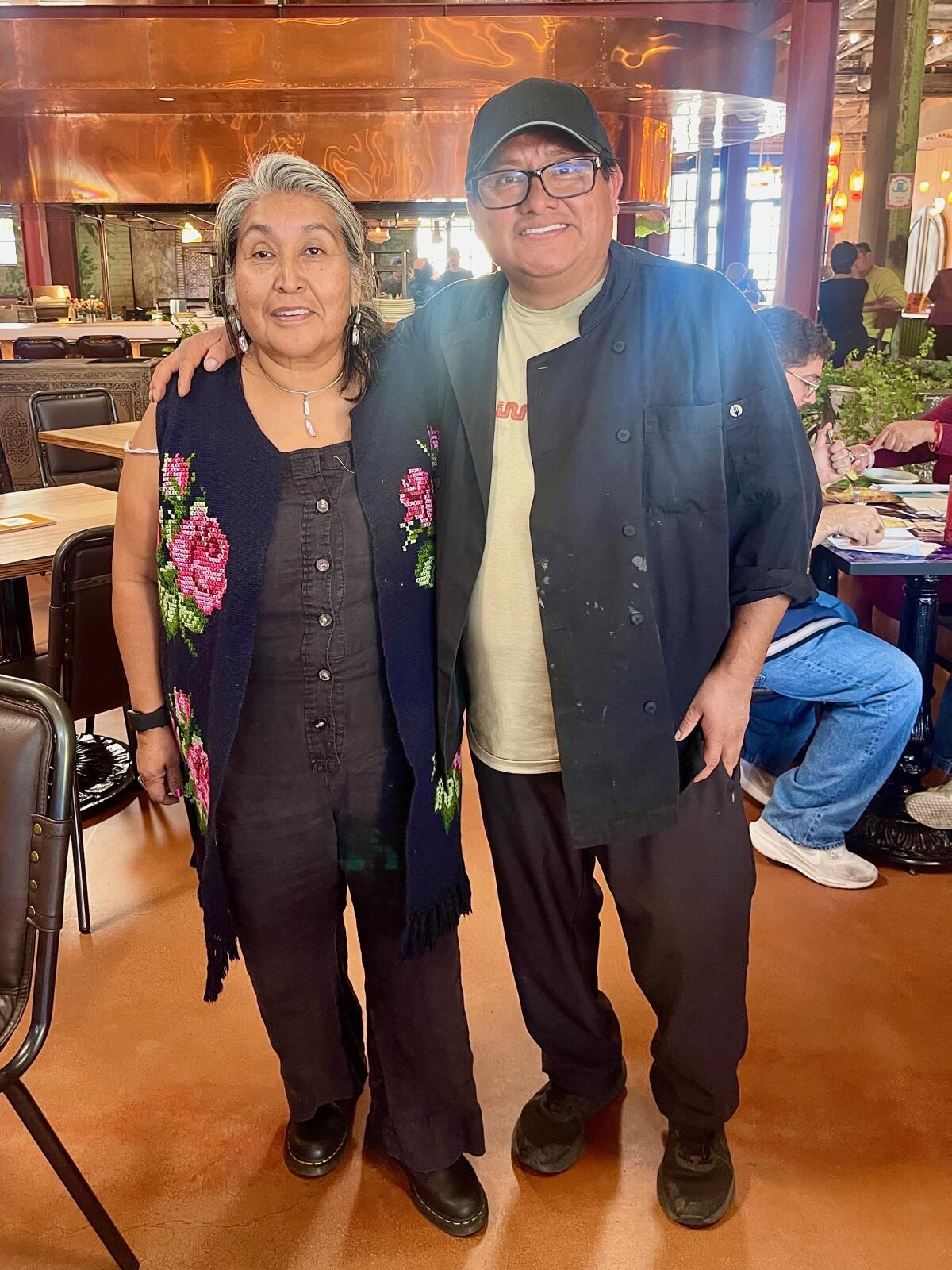
Alfonso Martinez, right, and Odilia Romero, who have expanded their Poncho’s Tlayudas operation to Maydan Market under the name Lugya’h.
(Laurie Ochoa / Los Angeles Times)
Indeed, each of the places Previte has curated is certain to draw a crowd. I’m looking forward to bringing more friends and trying them all.
If you think $50 a person sounds like a lot for dinner …
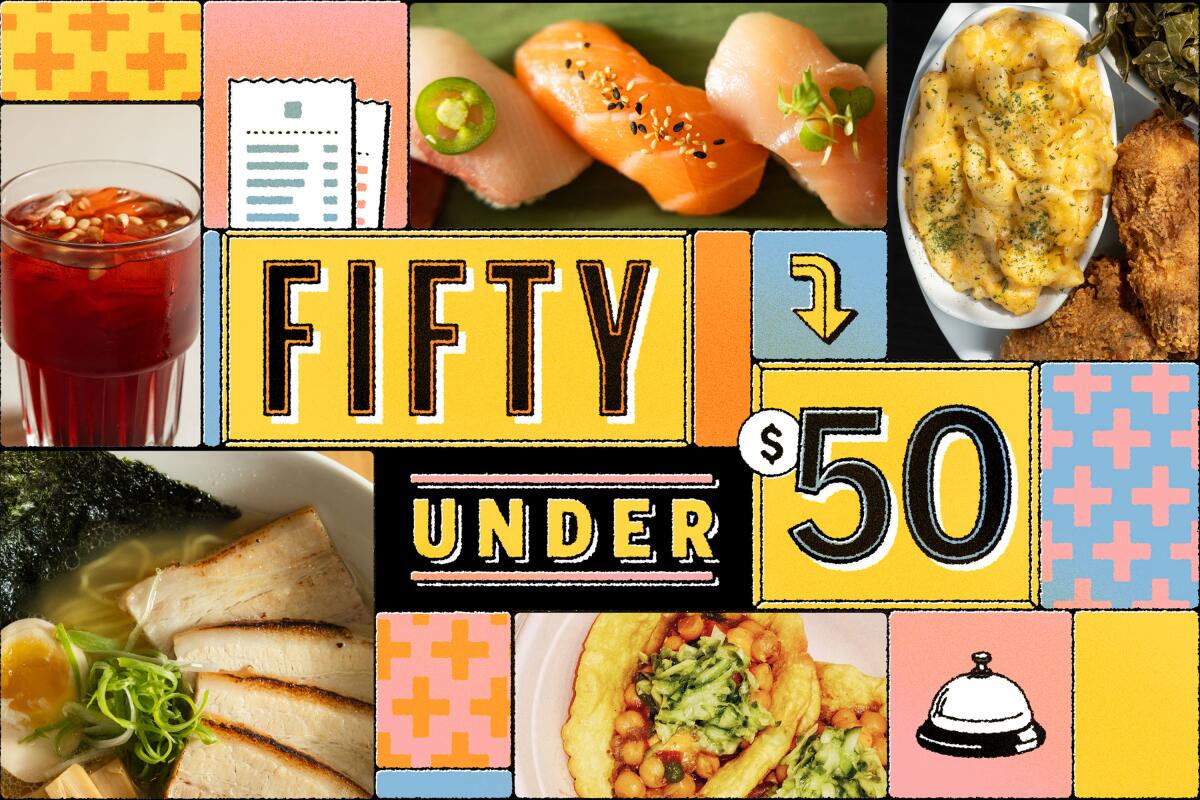
(Juliana Yamada / Los Angeles Times)
“It’s crazy that $50 per person is now considered a cheap sit-down meal.”
“The fact that LAT is suggesting $50 a person is somehow a ‘win’ is pretty crazy.”
Those are two reader comments on our 50 under $50 guide to restaurants where it’s possible to eat for $50 or less a person — including tax and tip. Which actually means finding items on the menu that cost $38 a person to account for an approximate 10% sales tax and 20% tip. We thought it was important for you to not get hit with charges that traditionally are not reflected on most restaurant menus.
To those readers who say $50 a person is too much to spend for a nice sit-down dinner, we agree. But all over the city — and in so many parts of the country — it’s increasingly difficult to get dinner at a non-fast-food or fast-casual restaurant for less than $50. Indeed, some of our finest restaurants charge $500 and even more than $1000 a person once you figure in wine or sake pairings.
This kind of pricing, which accounts for luxury ingredients and livable salaries for members of the kitchen and dining room staff that provide world-class service, puts many of our most acclaimed restaurants out of reach for the majority of Angelenos. That’s why we thought it was important in these tough economic times to come up with a guide to more affordable restaurant choices. We weren’t only going for “cheap eats.” Our entire Food team searched the city for a range of places that, as senior Food editor Danielle Dorsey wrote, “must be open until 9 p.m.” (so a true dinner spot), “doesn’t have to offer table service, but must [have] seating available to enjoy your food on-site” and where “you must be able to order at least two menu items, whether that’s a starter and a main, an entree and a dessert, or a large plate and a cocktail.”
The restaurants we chose ranged from the casual but highly acclaimed Sonoratown, which has what our critic Bill Addison says is “the Los Angeles food item I have consumed more than any other” (the $12.50 Burrito 2.0) to strategic ordering suggestions at star chef spots such as Dave Beran‘s Pasjoli and Bestia from husband-and-wife chefs Ori Menashe and Genevieve Gergis. In between are affordable date-night places, including Cody Ma and Misha Sesar‘s Persian spot Azizam, the buzzy Cal-Italian Beethoven Market
and Propaganda Wine Bar in the Arts District. We’re always looking for more suggestions. If you have a favorite affordable place, tell us about it in the story’s comment section.
Also …
- Stephanie Breijo spoke with archivist and social media personality Rosie Grant about her new cookbook “To Die For: A Cookbook of Gravestone Recipes,” which as the title implies, is a collection of recipes that decedents or their loved ones treasured so much they had them etched on their tombstones.
- Breijo also broke down the allegations of racial discrimination at the L.A. restaurant Great White and Gran Blanco “after intensifying social media videos claim that Great White segregates customers based on ethnicity and race, which its owners and some employees deny.”
And finally … ‘slug it down’

Diane Keaton in 2023.
(Raymond Hall/GC Images via Getty Images)
In memory of the great Diane Keaton, let’s raise a toast to her unforgettable movie roles and personal style with what she called “the only wine that I love.”
“It’s called Lillet,” she said in an Instagram video she made back in 2022 with a similar unconventional approach to ice that Stanley Tucci demonstrated his viral negroni video from 2020. After adding many ice cubes to a large yet elegant tumbler, she fills the glass with Lillet and adds a wedge of lemon, instructing her followers to “slug it down” without the addition of the usual tonic or sparkling water. Apparently, Keaton was not a spritz kind of gal. “And if you don’t like it,” she said to her viewers, “that’s fine with me. I’ll just drink all this myself.” Sounds like she knew how to live.

